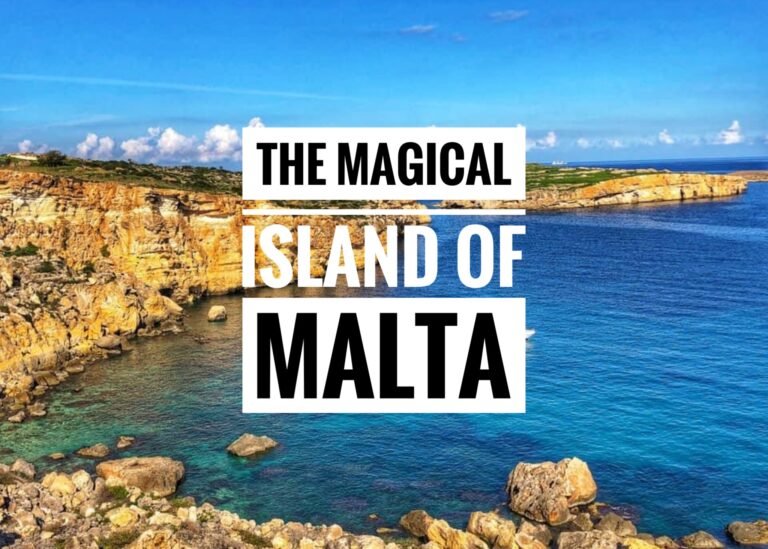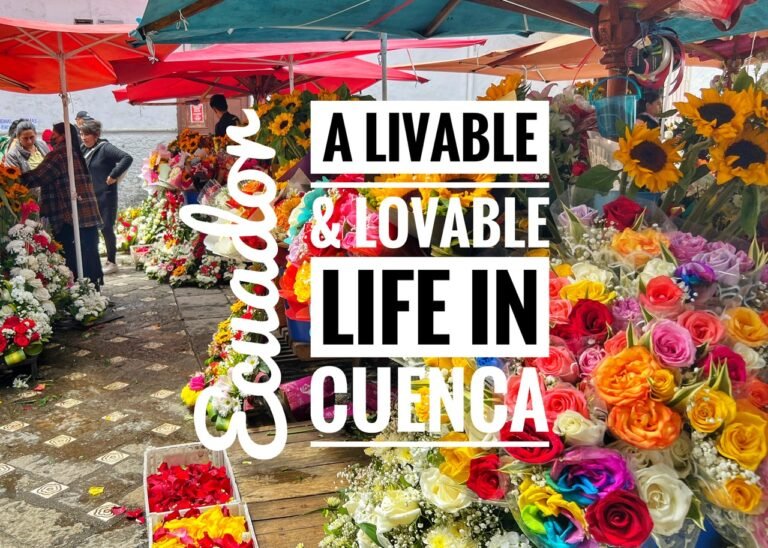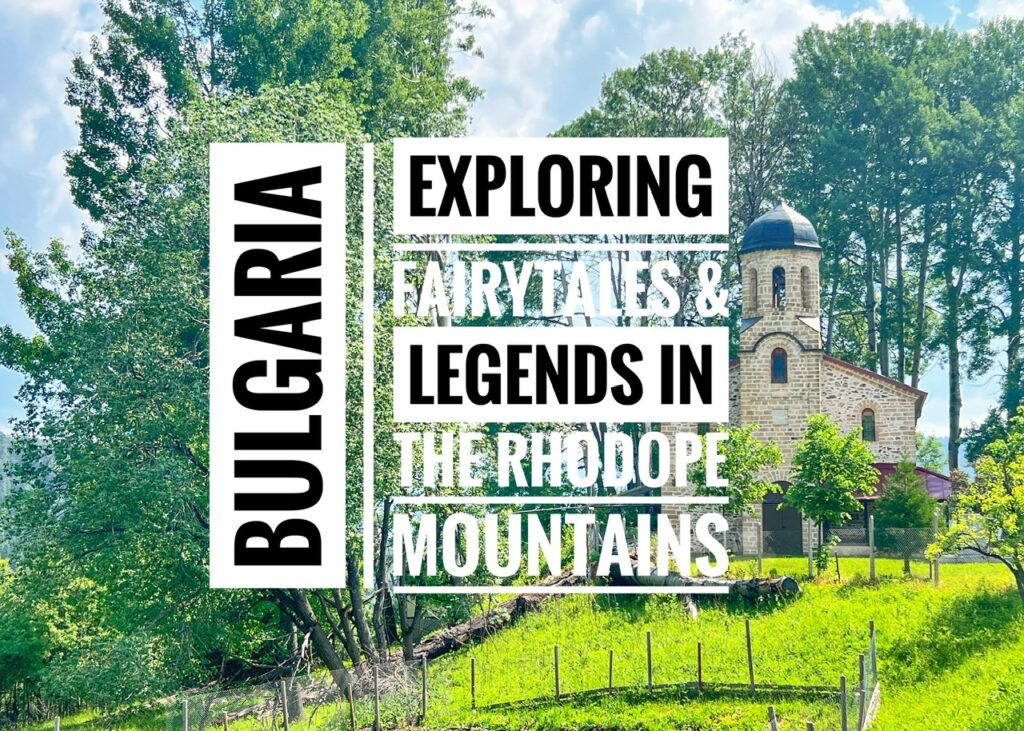
Day One: Plovdiv to Smolyan (Including: Bachkovo, Orehovo, Mogilitsa, Gordo Canyon, & Ustovo)
From Plovdiv, we settled on a plan to take an exploratory trip south to tackle some of the sights and villages in the gorgeous Rhodope Mountains, which we can now say, is arguably the most fetching and varied of Bulgaria’s four major mountain chains. The day began by renting a Euro-suitable Fiat at Plovdiv Car Rental for an affordable $18/day from a super friendly Hungarian named Csaba who previously lived in Las Vegas for 20-something years. Small world!
We then bumped and zipped our way 30 minutes south (as one does in a Fiat), until arriving at Bachkovo Monastery, which has only been around a thousand years, and still houses a small community of monks, whom we don’t believe have been there the same amount of time, (but by their look, it’s a possibility.)
Now…most people who have been to Bulgaria have heard of, or been to, the striking and colorful UNESCO Rila Monastery. Bachkovo is similar, but has a more peaceful and functional ambiance, as well as only a handful of the tourists. We preferred it for these reasons.
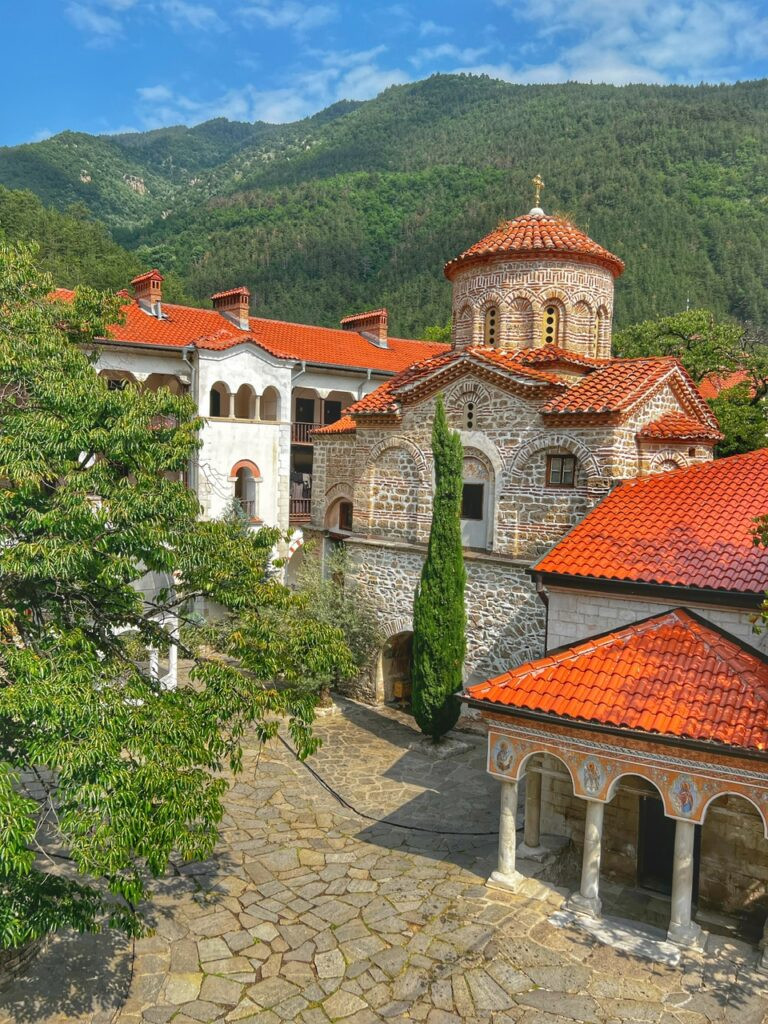
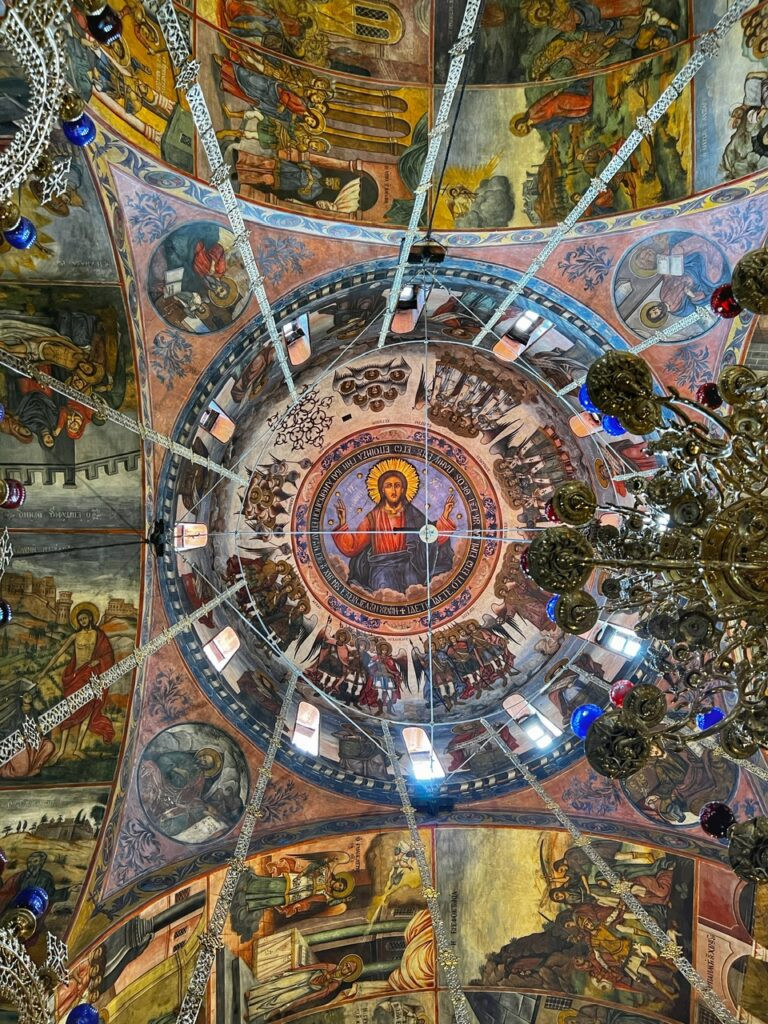
The Bachkovo Monastery, also accessible from Plovdiv by bus, was founded in 1083 by Grigorii Pakourianos, a high-ranking Byzantine military commander of Georgian origin. It was originally a Georgian Orthodox monastery during the Byzantine era, and later became a vital center of the Bulgarian Orthodox Church.
Similar to Rila, is is adorned with swaths of stunning biblical scenes, many by Zahari Zograf, one of Bulgaria’s most important painters of the Revival era, painted several of the interior frescoes during the 19th century. Admittedly, I don’t believe I’ve ever seen Jesus doing mudras, or maybe I haven’t been paying enough attention?
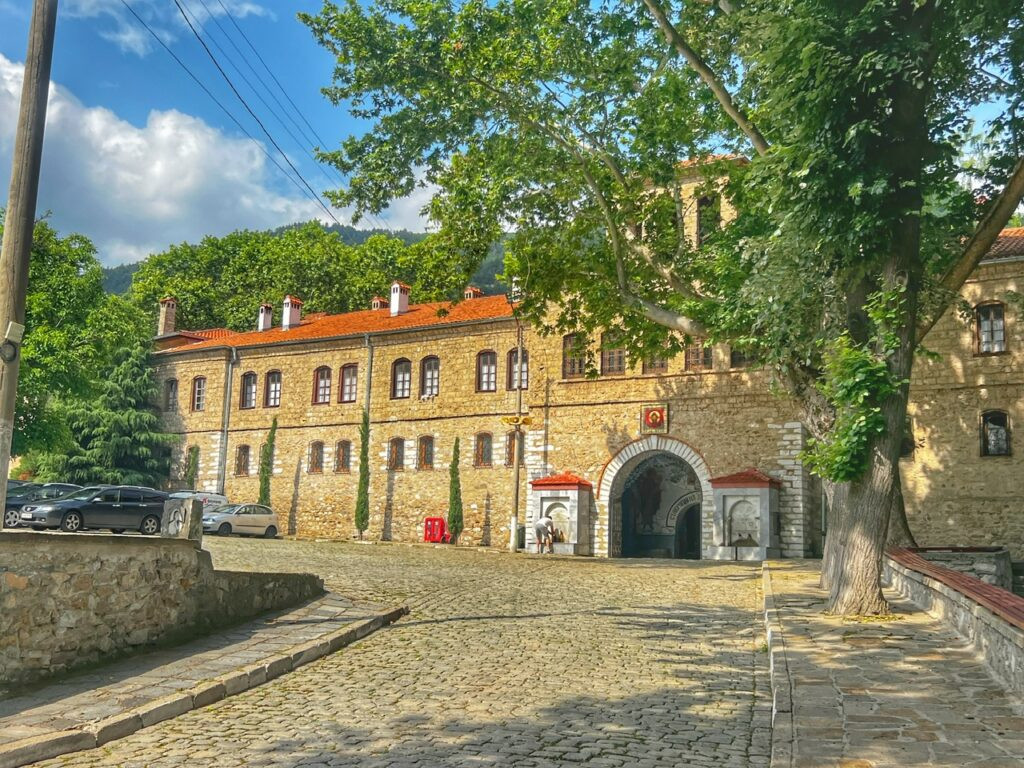
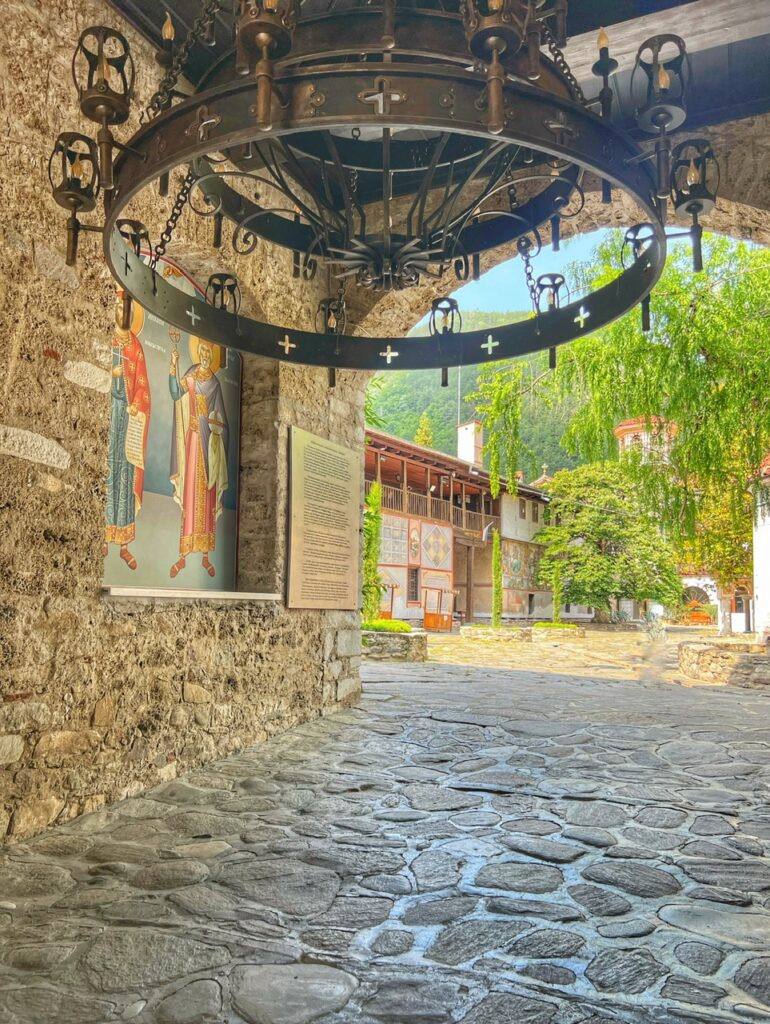
Entering the monastery which can be accessed from a lot directly before it. If you park in one of the lower lots, you will be propositioned for numerous jars of honey and gorgeous kitchenware in a long gauntlet of souvenirs. When you enter, you’ll be absorbed by a colossal medieval chandelier….
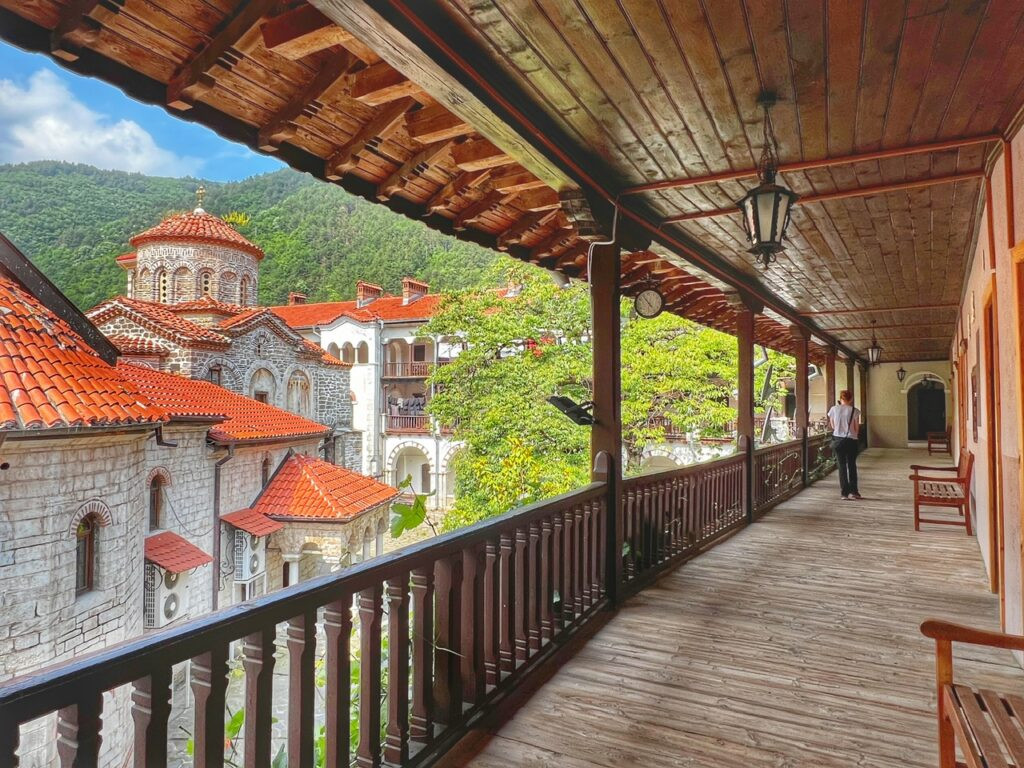
…and then you can begin to wander.
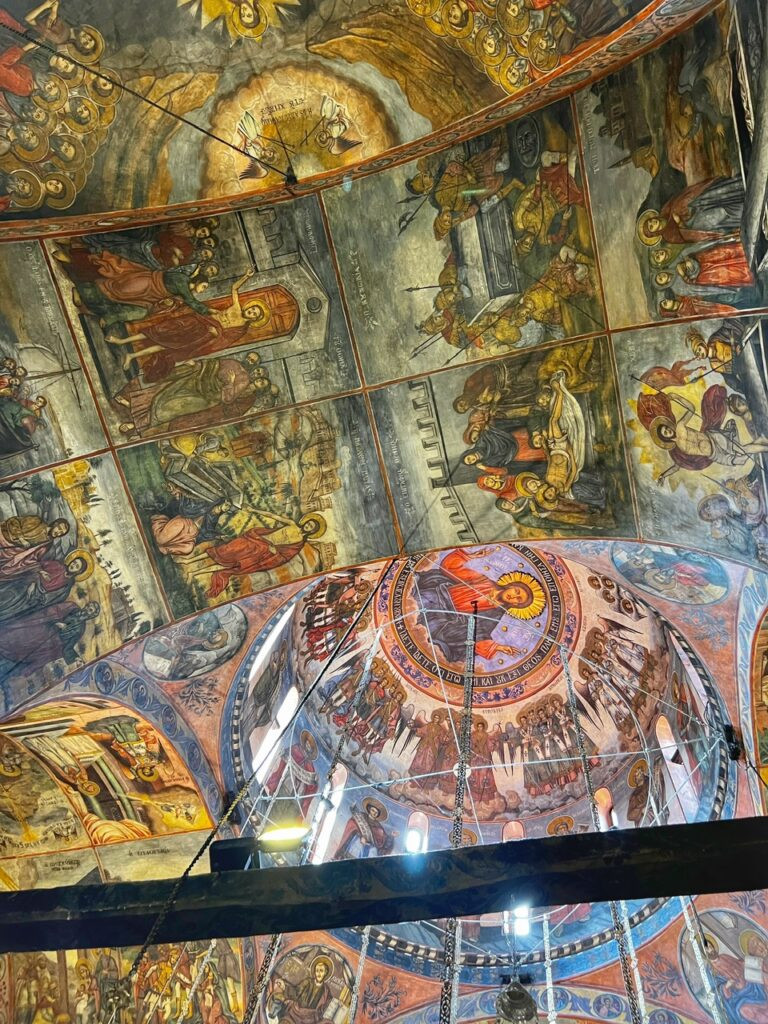
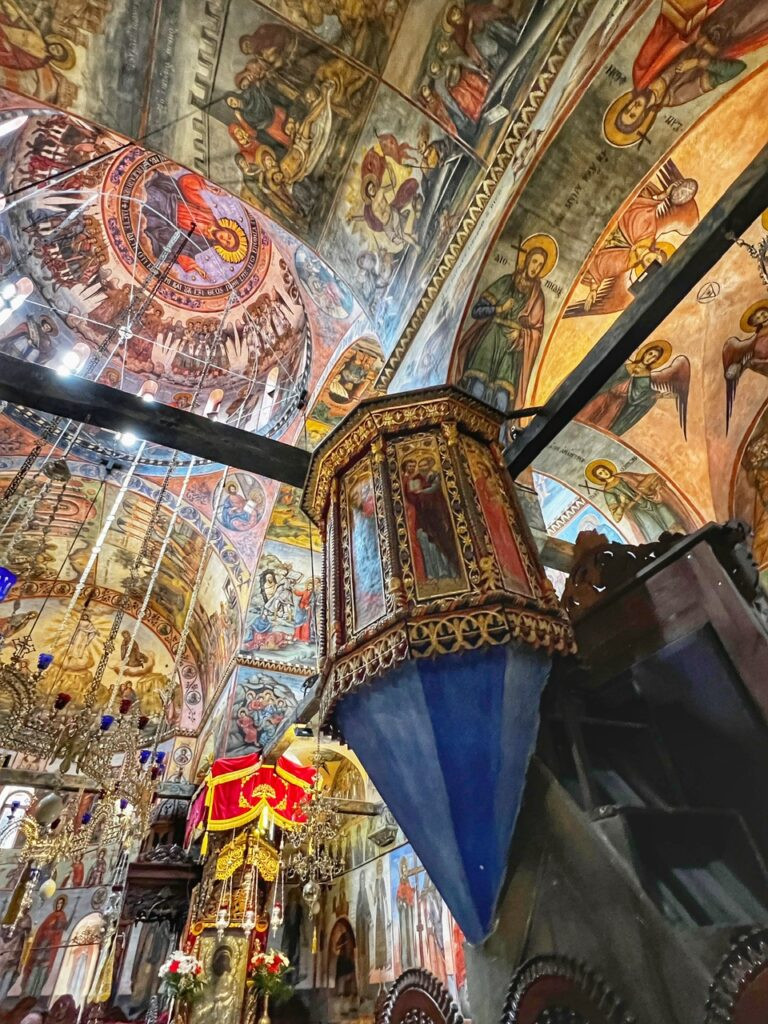
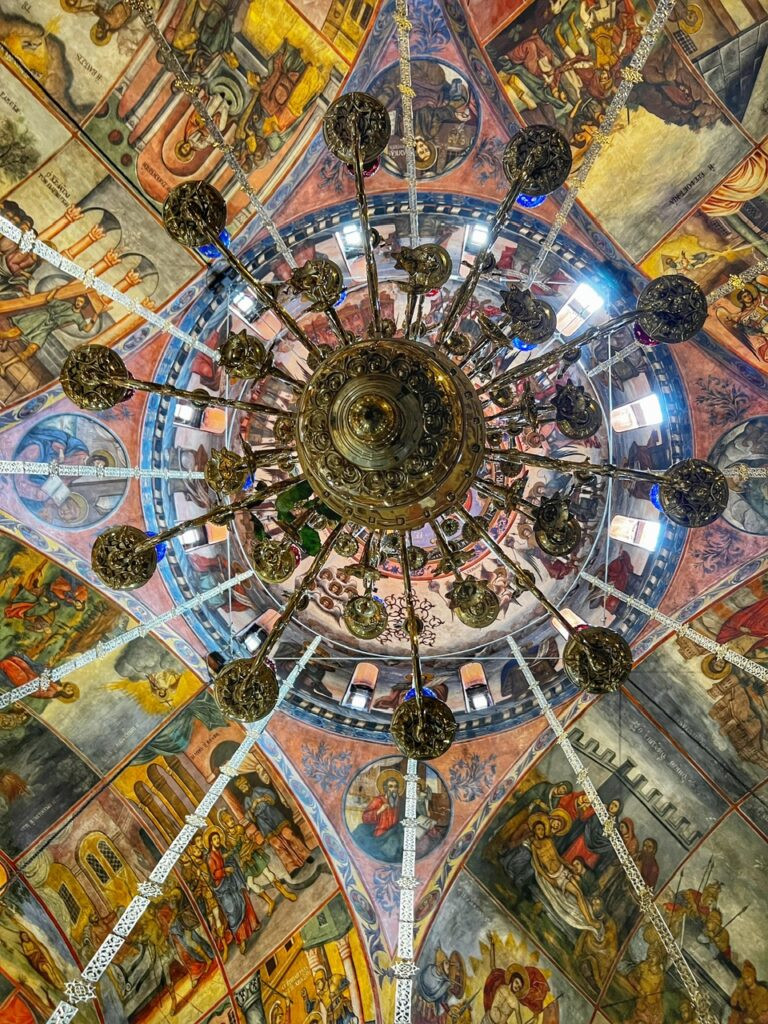
Interior frescoes from the main church, give way to the golden centerpiece chandelier, which looks more like an immaculate crown, fittingly directly below Jesus’s image…
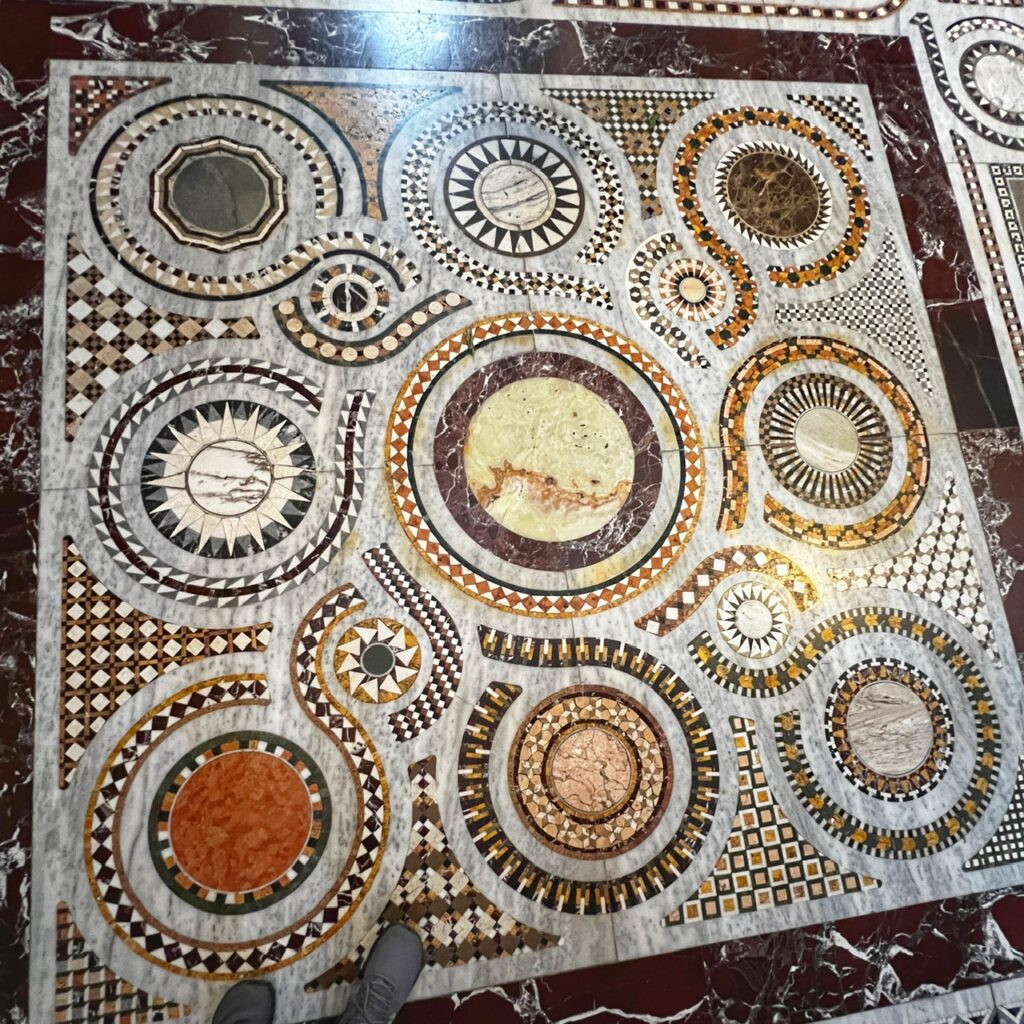
…and the mosaic masterpiece just underfoot.
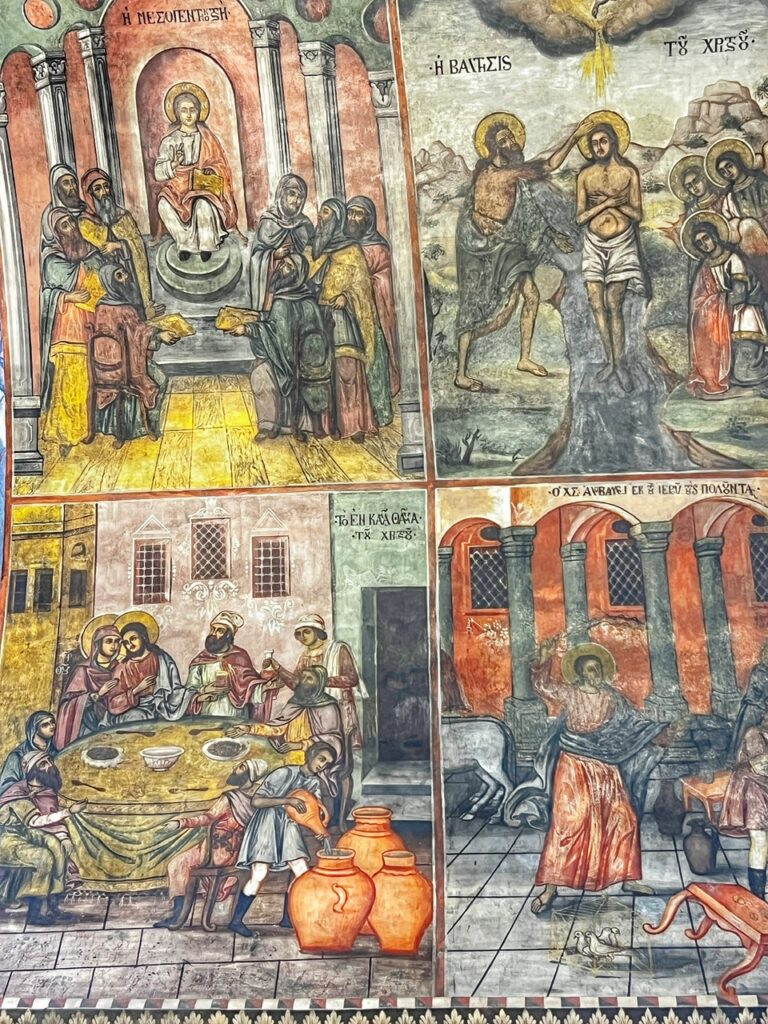
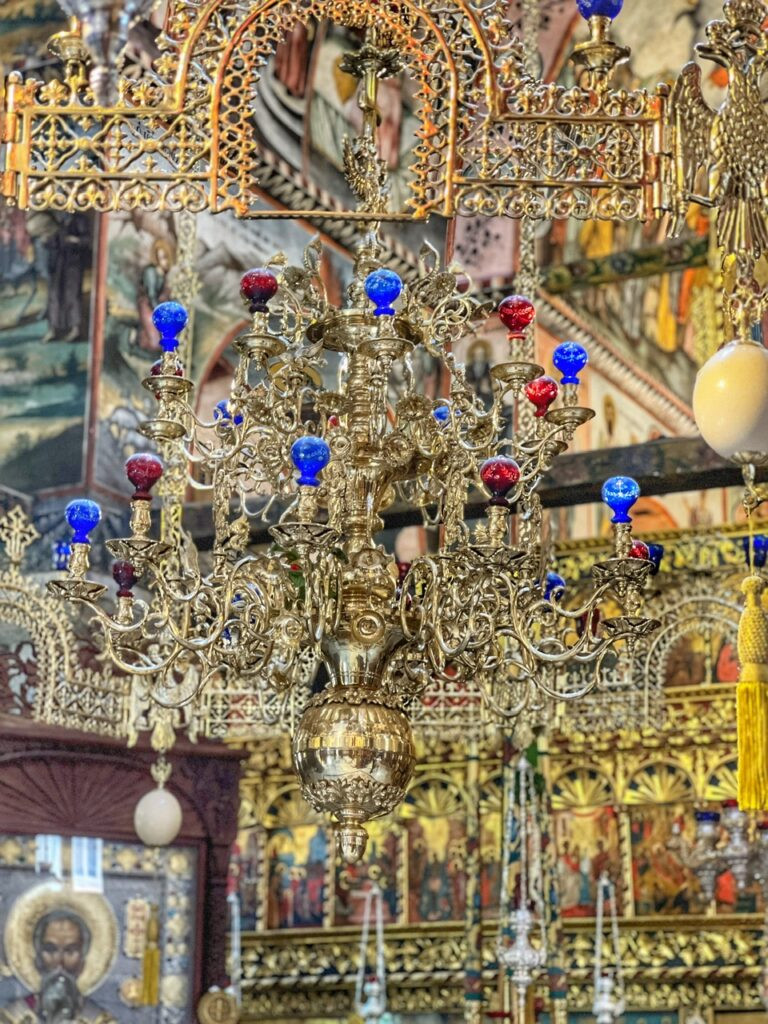
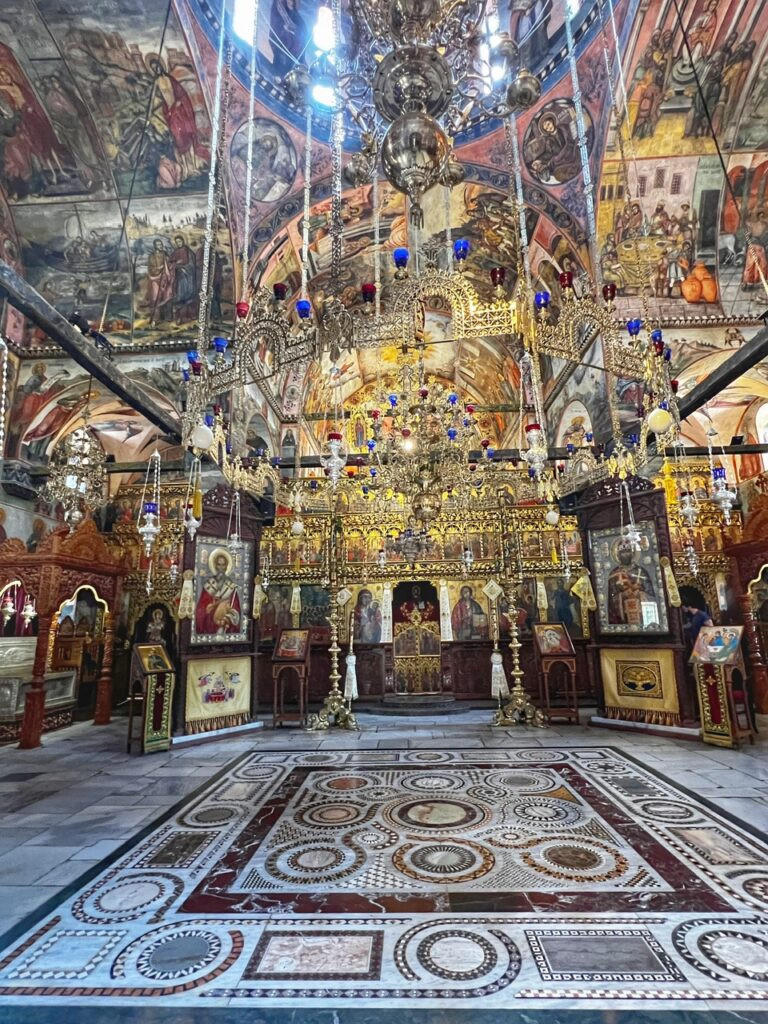
A close-up of some of the detailed frescoes, an “ugly” stepsister of the main chandelier, and the entire scene.
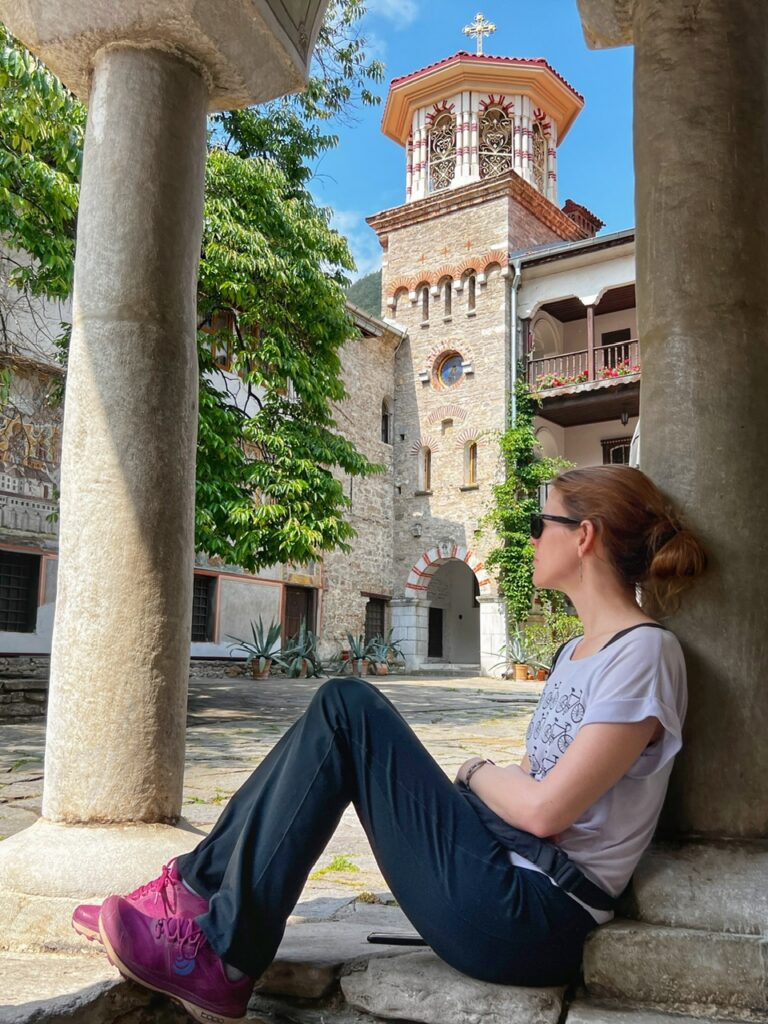
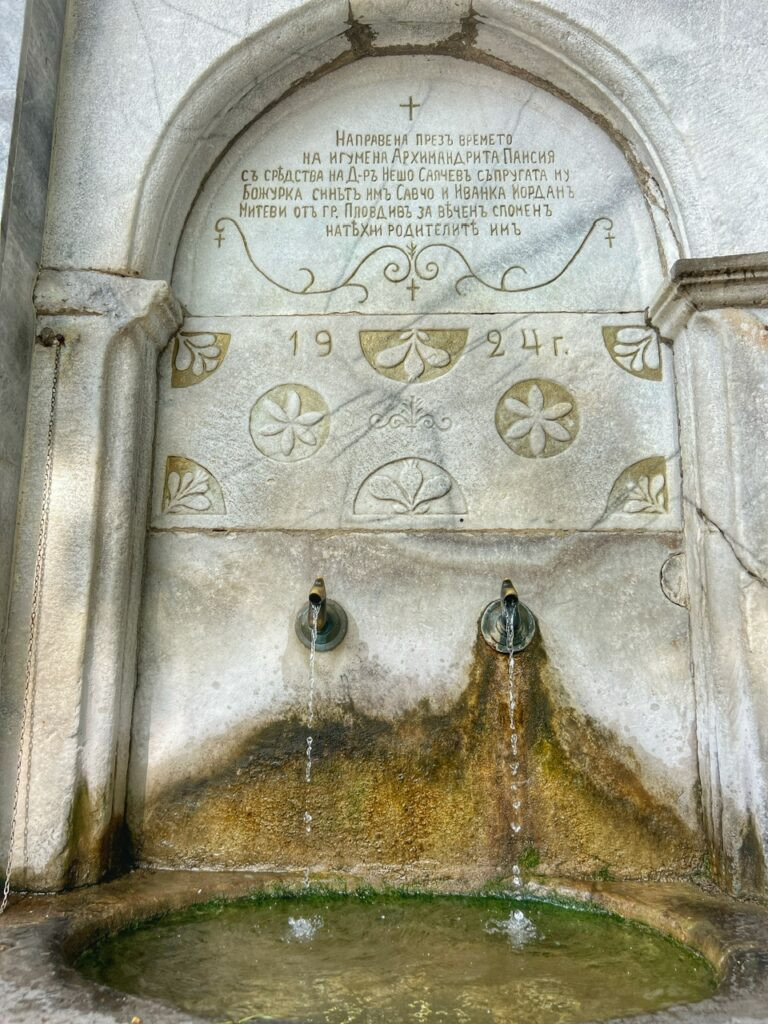
After visiting, Mandy sat down for awhile to reflect. It undoubtedly has a distinct meditative and spiritual feeling that we didn’t get from Rila. It wouldn’t be a monastery without distributing and endless flow of our greatest life source.
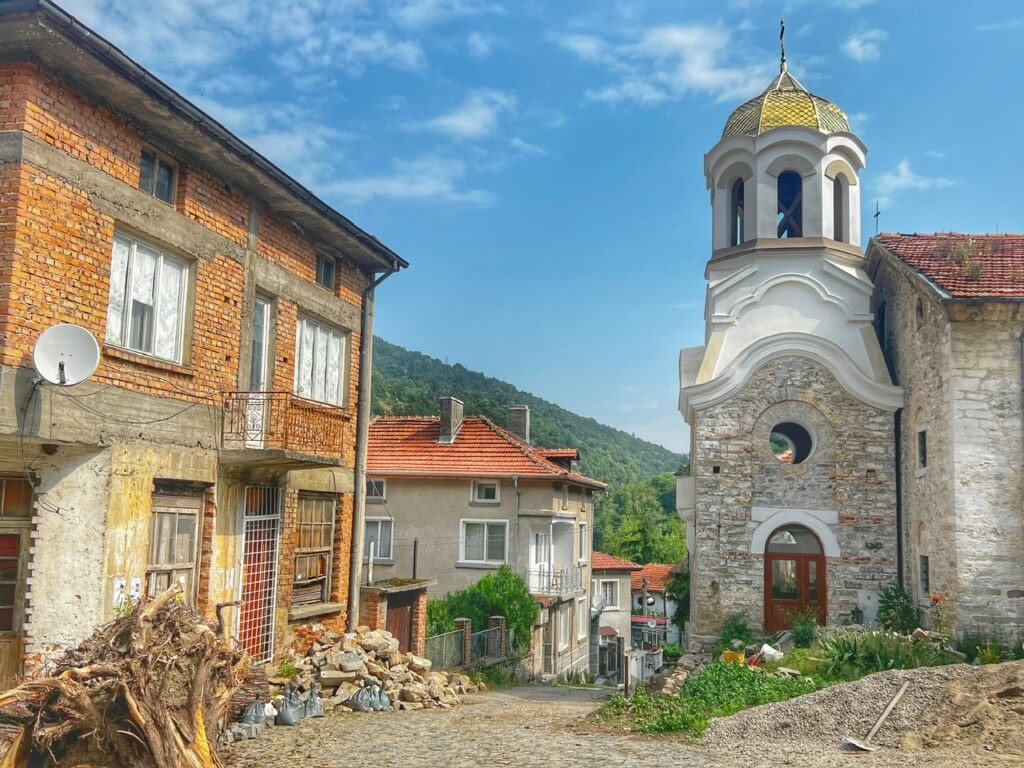
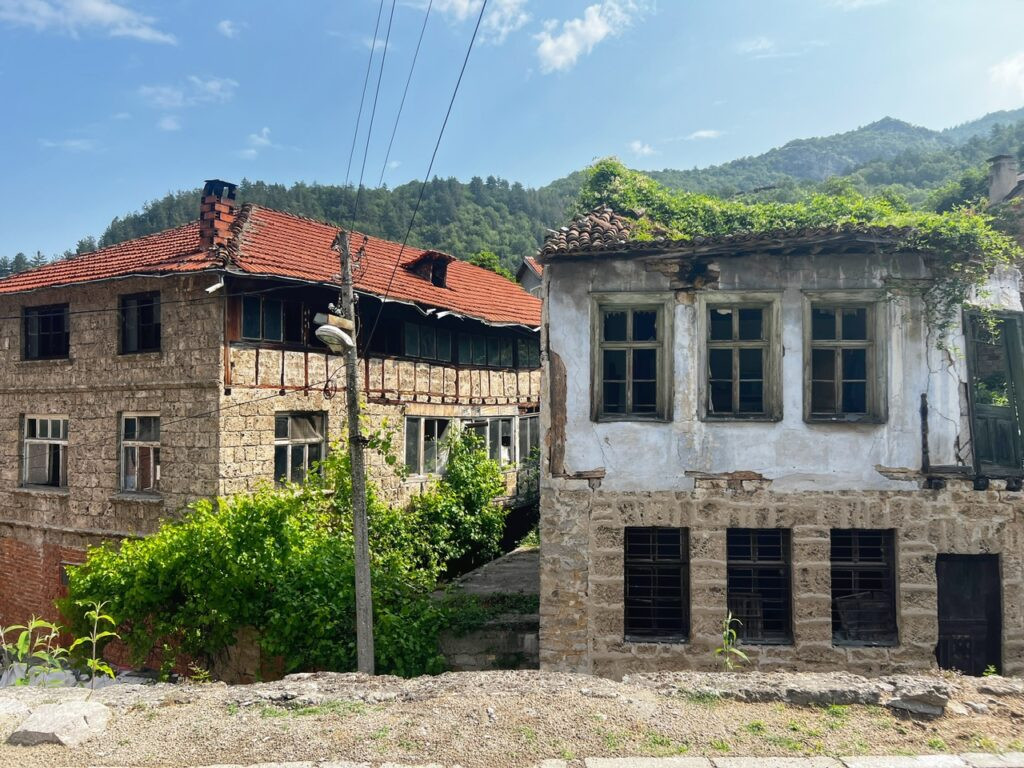
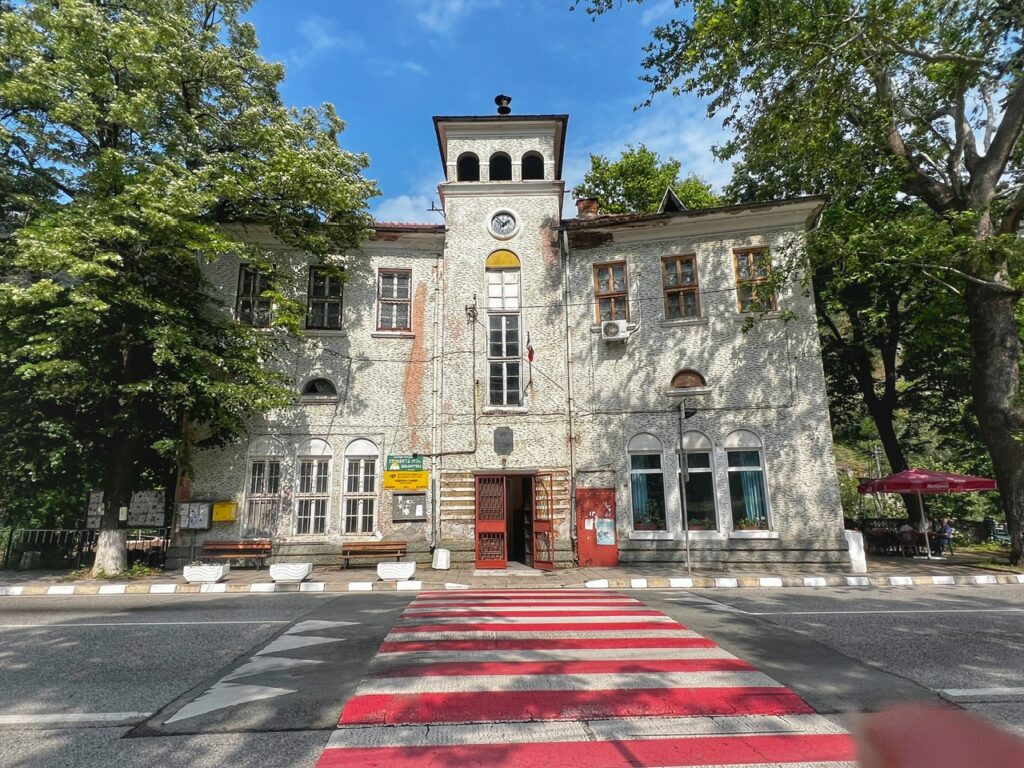
We also briefly ambled through the village of Bachkovo, which can be accessed via a 30 minute walk from the monastery. As most Bulgarian villages, it has a tranquil feeling and plenty of fixer uppers, but also included a unique town hall, a mini market and a couple of restaurants.
Almost immediately after Greg and I departed Bachkovo Monastery, any signs of other Plovdiv tourists petered out and we felt like we’d entered a much more off-the-beaten-path region of Bulgaria as our little Fiat scooted deeper into the Rhodope Mountains towards Greece. The rest of the day would guide us to the mountain community of Orehovo, to some forest and thunder bathing on our first official “eco trail,” (which may be our new best friend in the country,) to an extravagant Ottoman mansion, into a nature seducing gorge, to the charming suburb of Ustovo and finally, to the larger city of Smolyan… where we would ultimately spend the night.
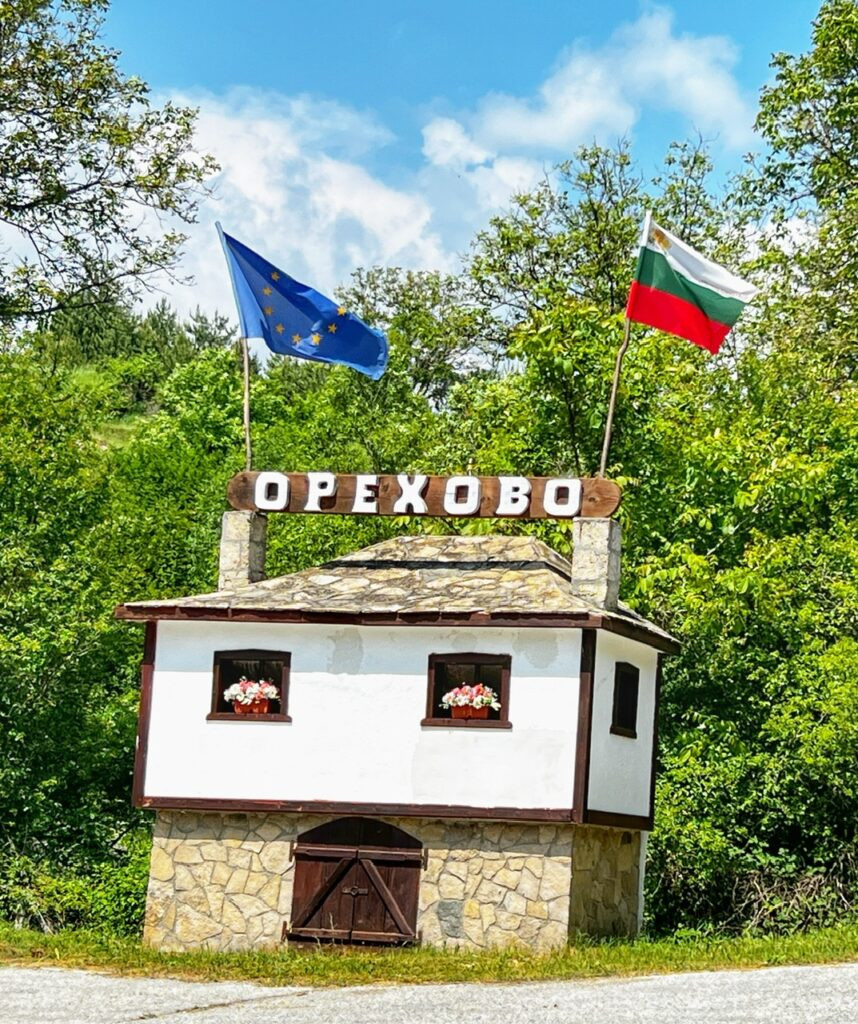

Our first stop after Bachkovo was in the mountainous village of Orehovo, which offered a welcome sign in the form of a little girl’s dream house at its entrance. Tranquil little Orehovo has less than 500 residents and sits around 950 meters, emitting a refreshing blast of cool air after the hotter days we’d been having in Plovdiv.
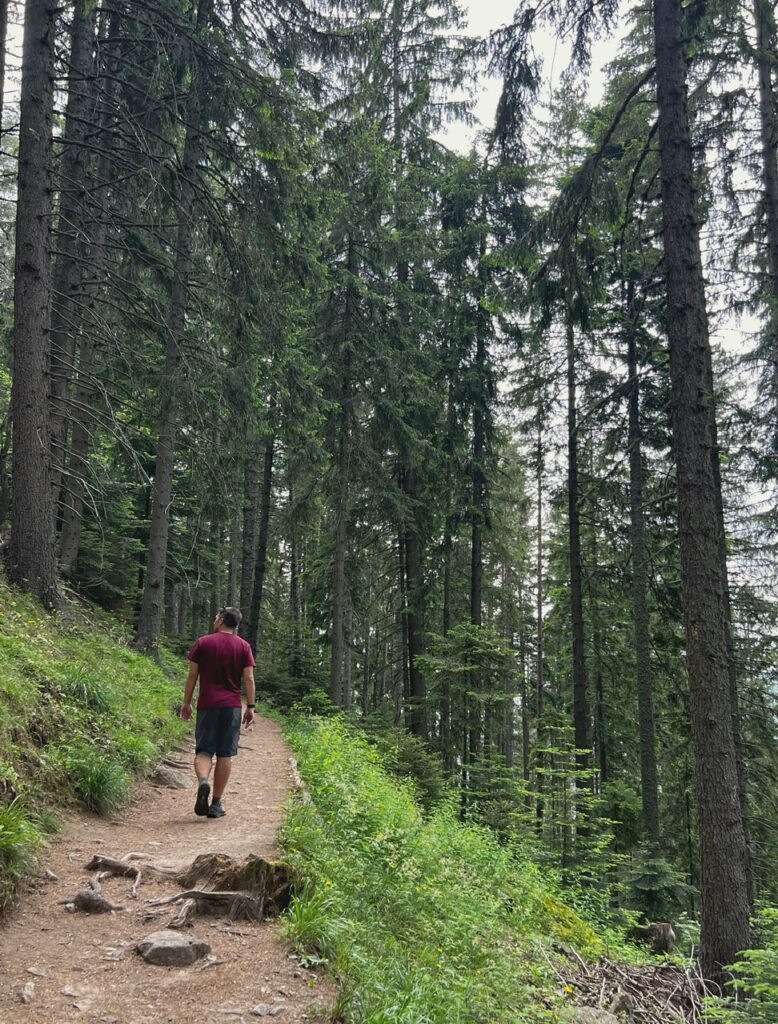
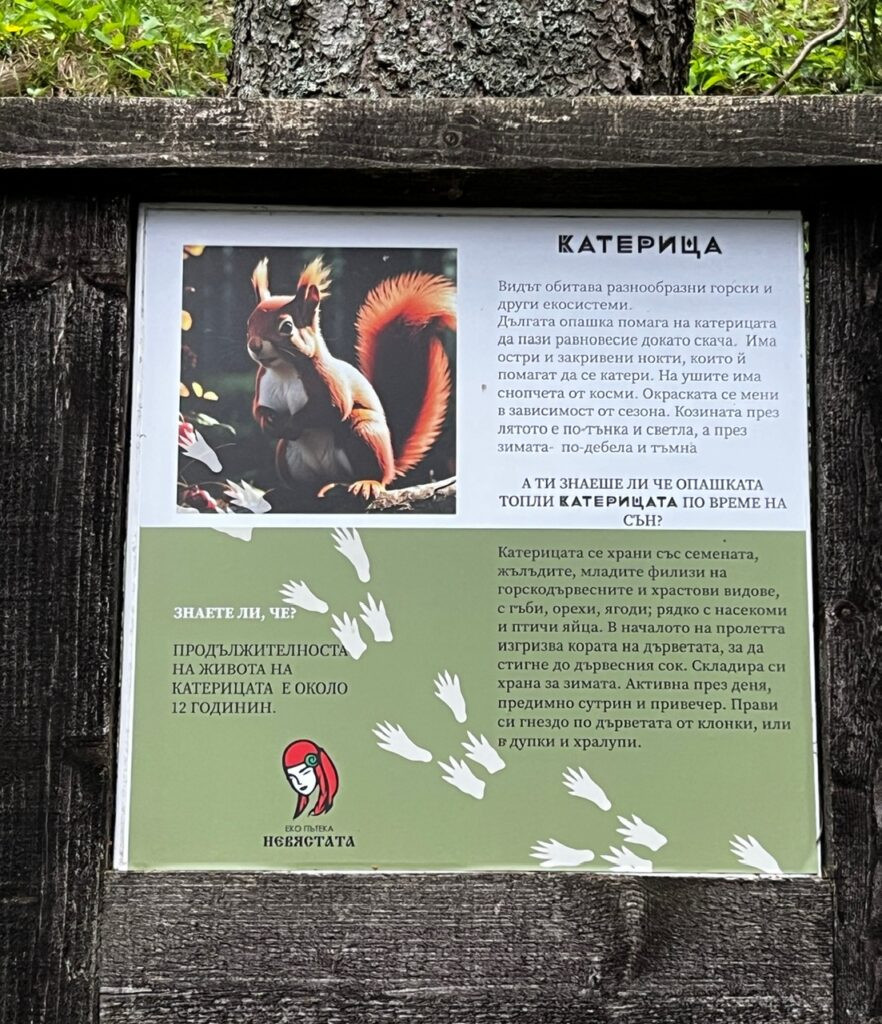
Heading south, it was time to stretch our legs on the Nevyastata “Ecotrail,” which we’ve learned are designated trails which highlight natural, cultural or historical features of the area while encouraging sustainable tourism. These moderate trails are said to be loaded with beautiful views, educational elements, benches, wooden bridges, and all in all, entertaining hiking, which we have concurred based on our first. This is an A+ effort by Bulgaria’s local communities and NGO’s. Their squirrels also seem to be amusingly adorable….or that could just be the Pixar-inspired designer?!
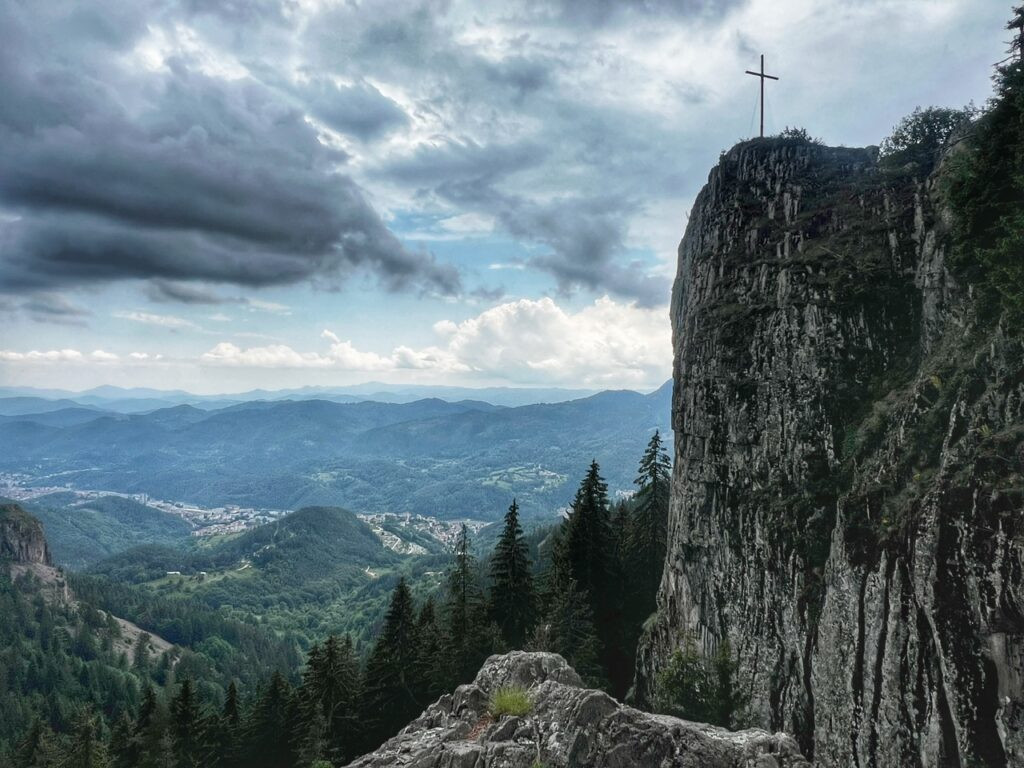
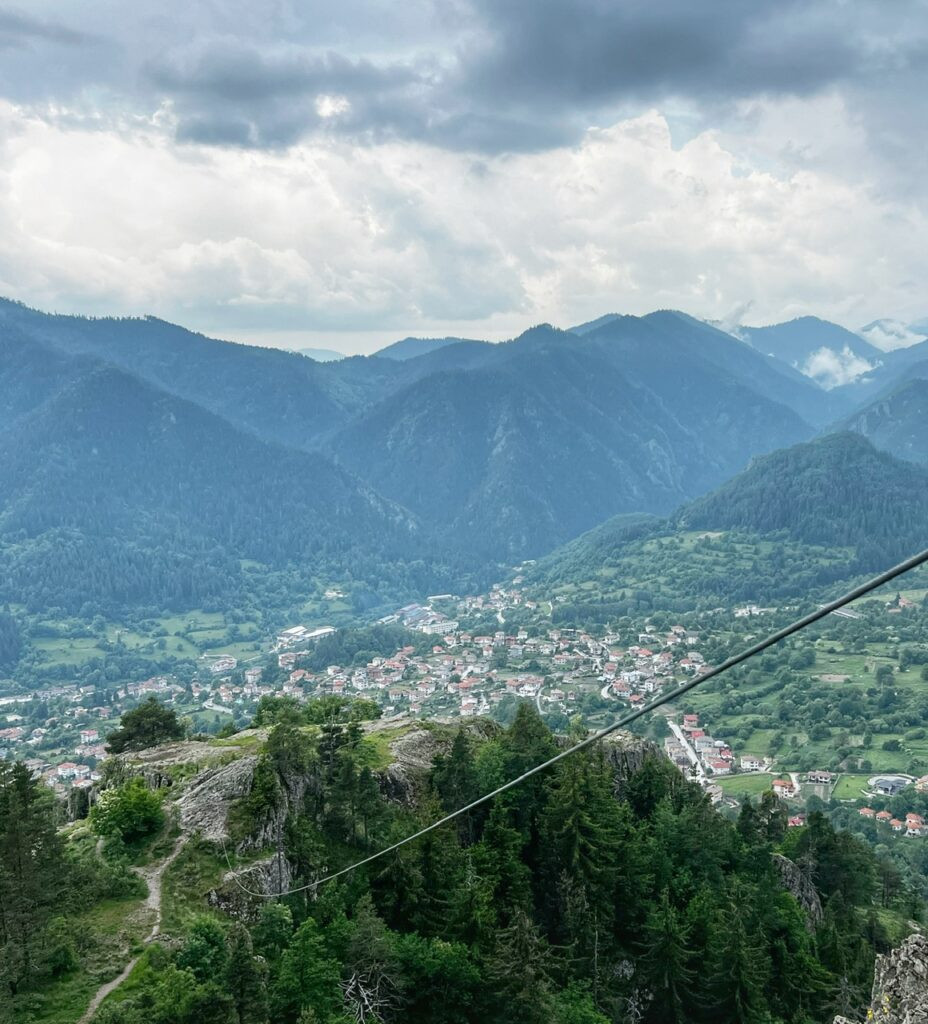
Unfortunately, the sky was swirling a bit when we arrived, but we didn’t let the distant thunder and gentle sprinkles dissuade us from soaking in the exceptional views. While doing so, we also noticed the rock climbing route to reach the cross, but climbing without gear, or to a lighting-magnetizing cross, wasn’t too enticing. Toward the end of the trail sits what is marked as an “alpine trolley,” which actually appeared to be a zip line plunging to the rocks below.
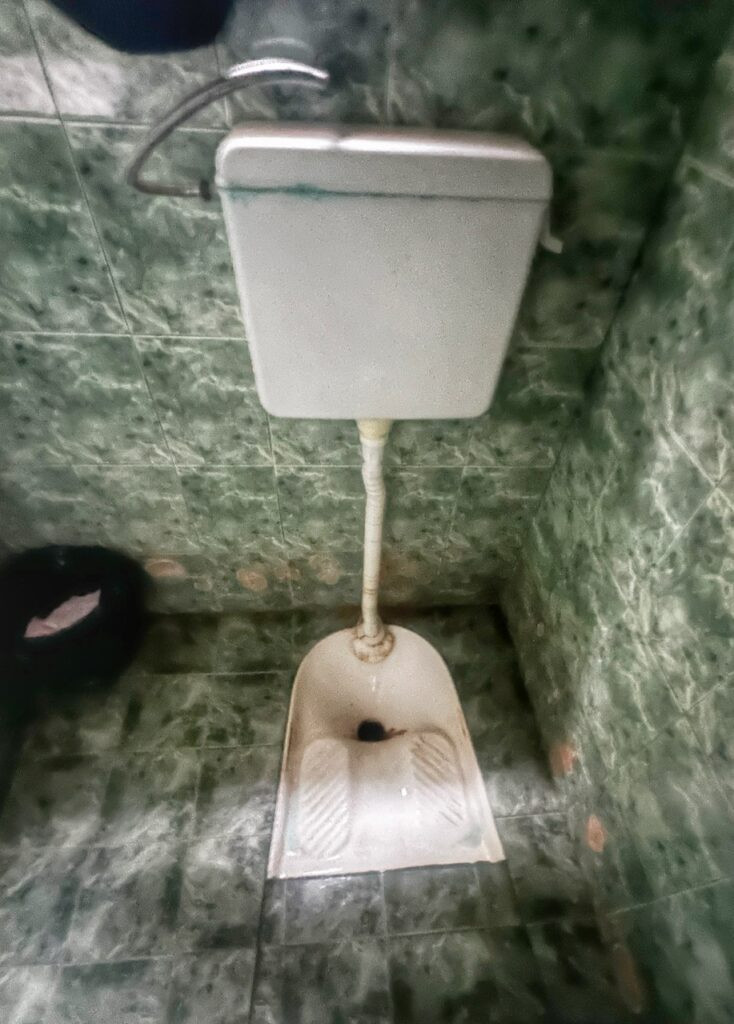
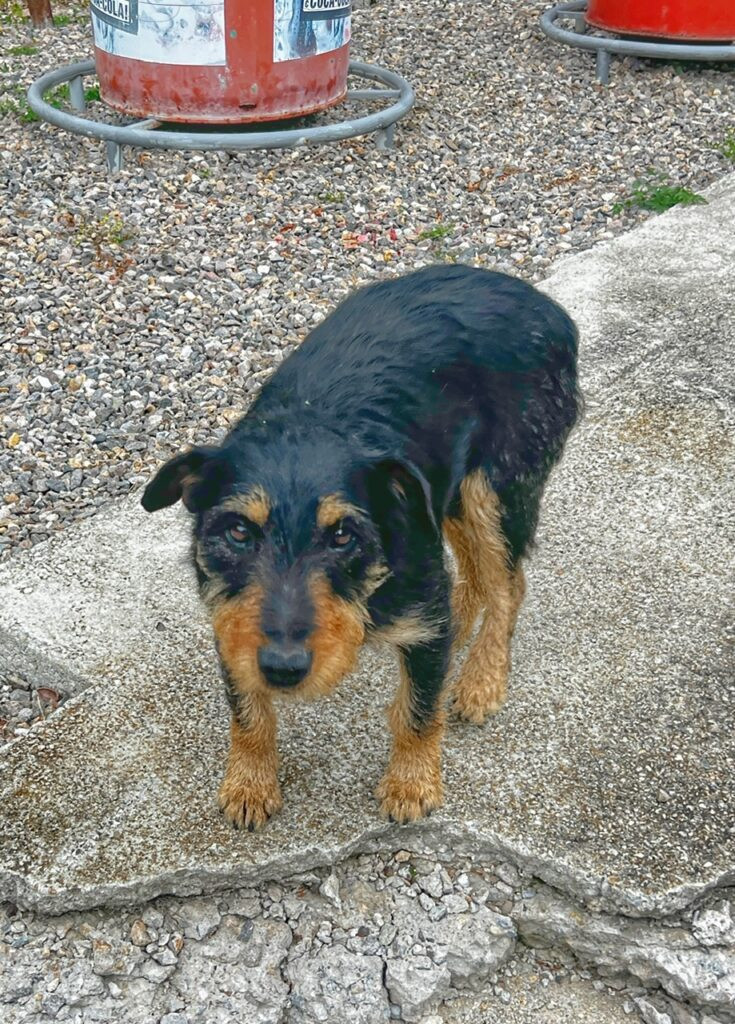
Moving on, we had so many activity options and so little time. It’s clear we could spend a month just in this area….which we’re tucking in our memory for later. We decided to stop at Uhlovitsa Cave. Unfortunately, the only open hole leading into the earth was their squatty, which no matter how many times I use them, I still manage to get some dribble somewhere…
We also met a new friend near the cave, who was so pitiful looking, we disposed ALL our treats at his feet. (And, graciously, he didn’t seem to mind they were for felines.)
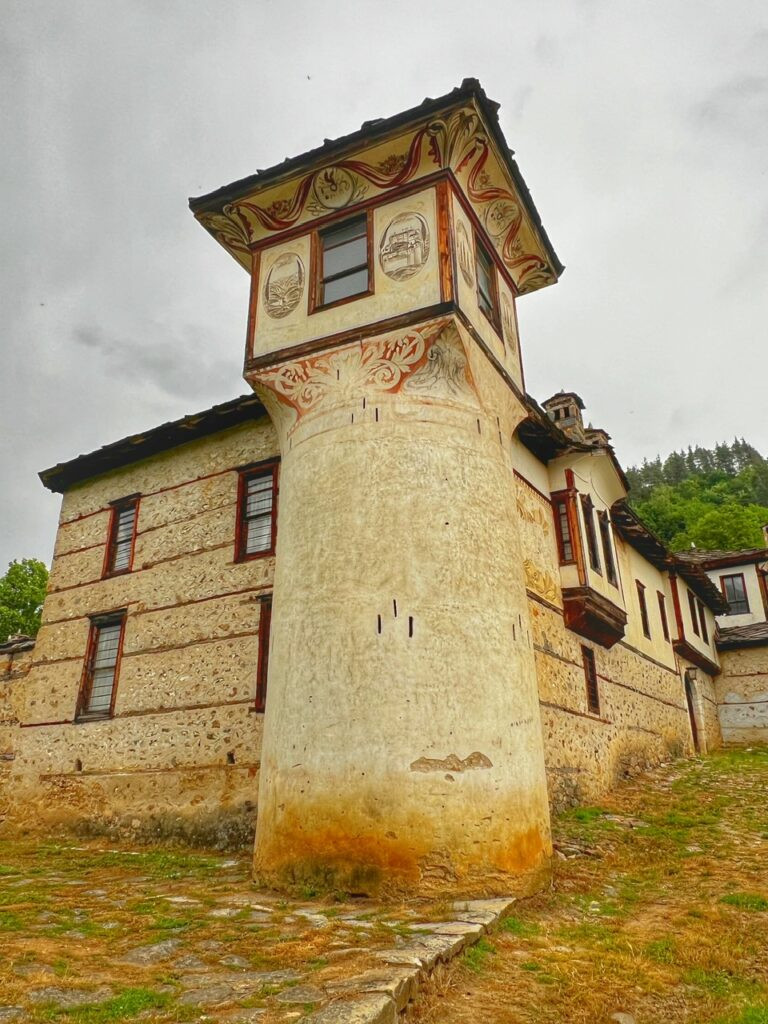
From here we found our way to Agush Agha’s Ottoman Mansion in the remote and tiny village of Mogilitsa. Declared a national monument of art and culture, it was built around 1825-1843 by a Bulgarian master-craftsman for Agush Agha and his three sons, who was an Ottoman feudal lord of the region. Talk about a bachelor pad!
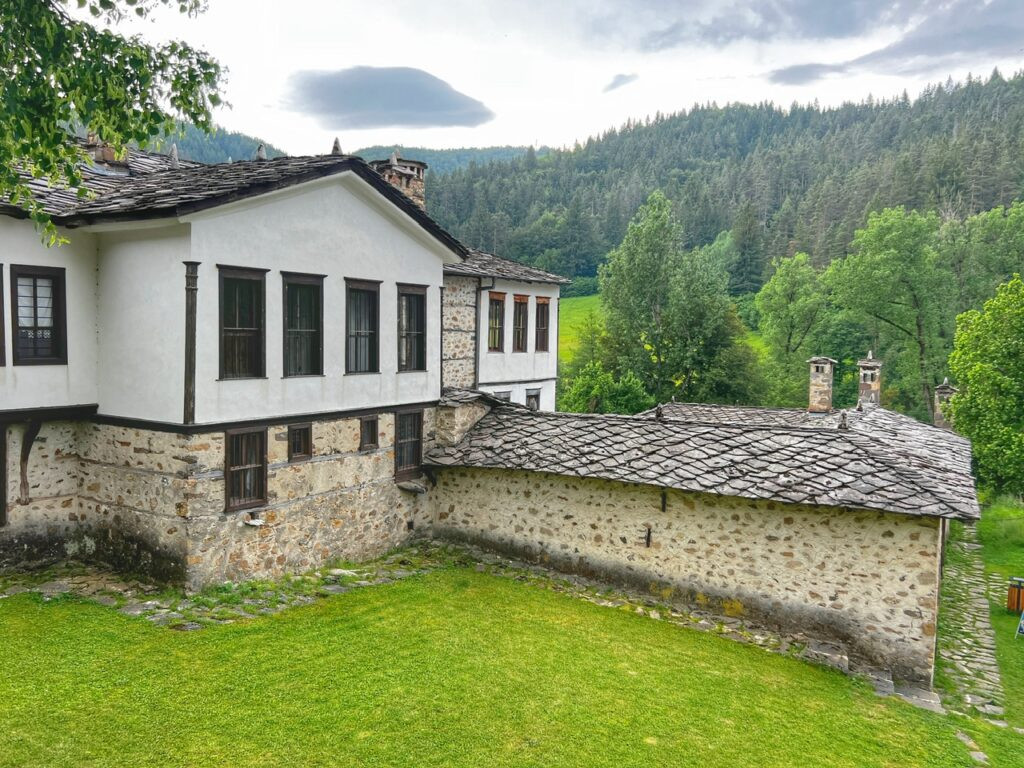
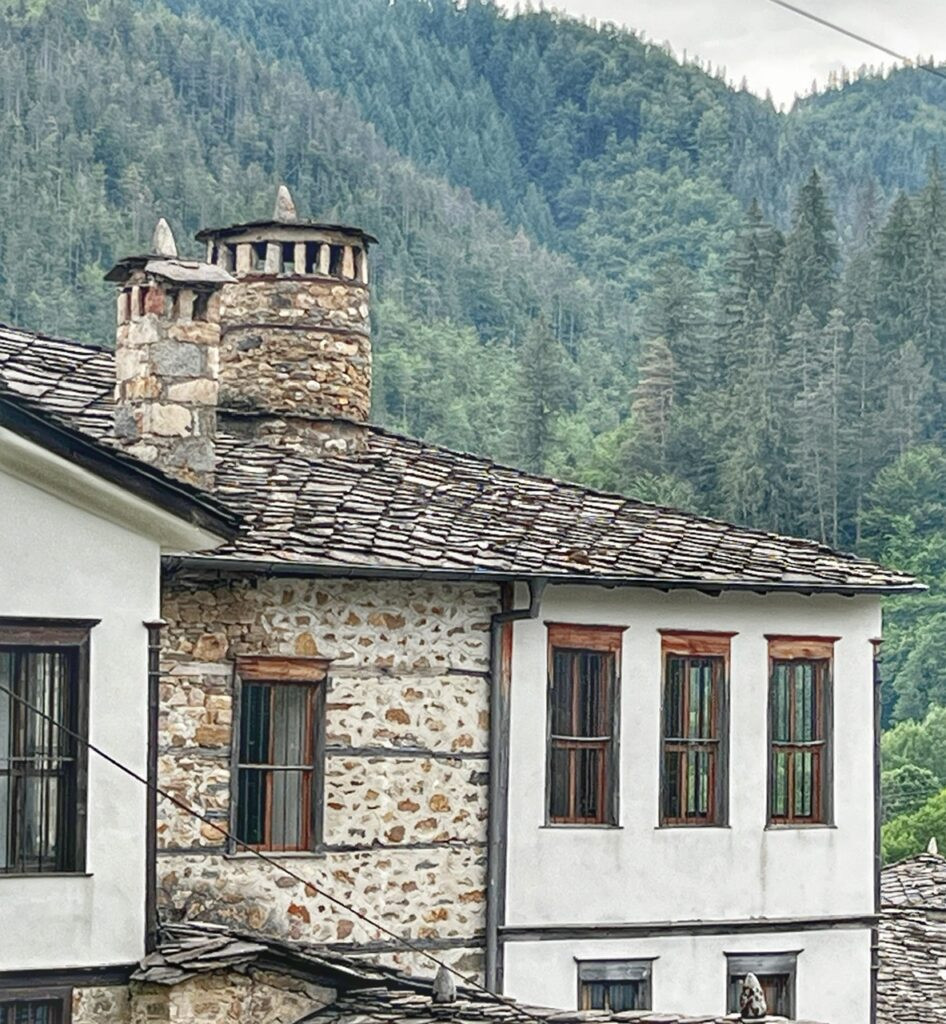
In addition to the chimneys, the fortified mansion features 221 windows, 86 doors, and a lighthouse-resembling tower, which was built for one son, a naval captain, (who apparently liked to bring his work home with him.) To secure any doubts of manhood, however, it was topped with 24 phallic tips. That is one girthy chimney!!
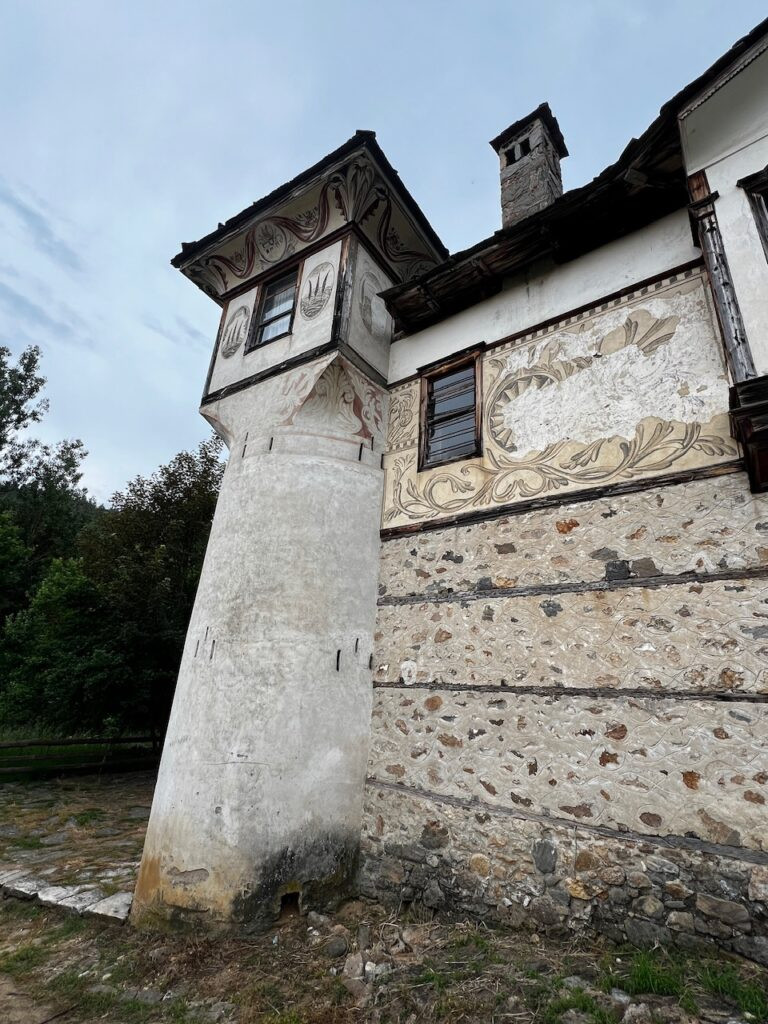
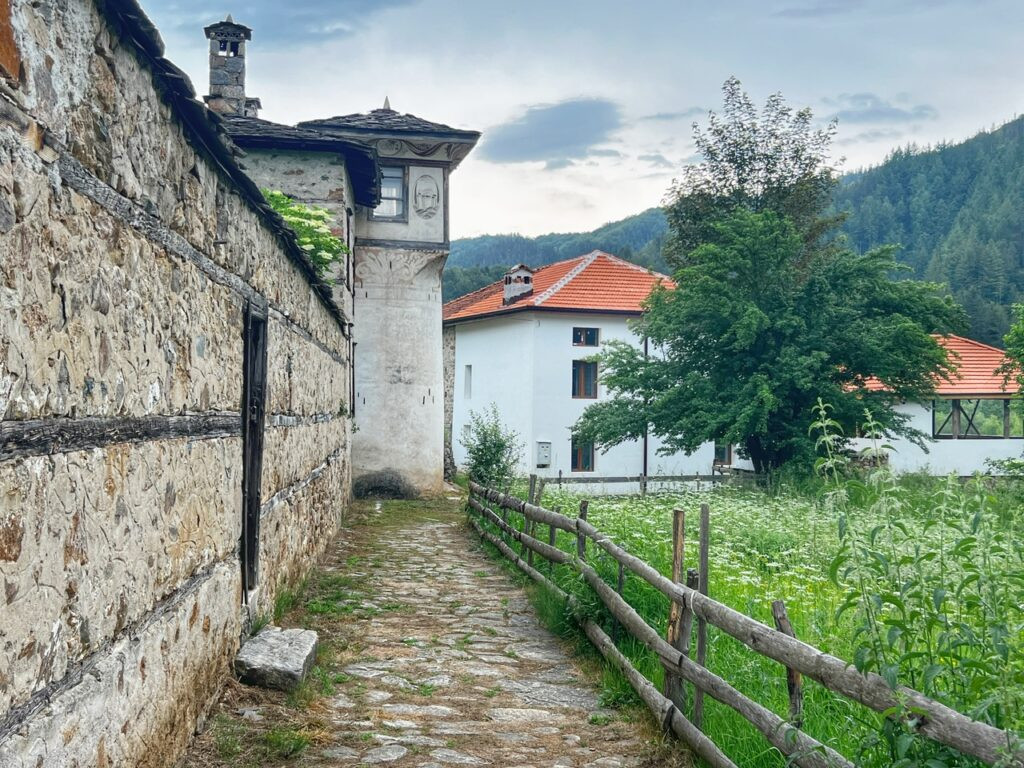
It also housed one of the largest private libraries in the Balkans and had multiple secret passages so the young feuds could place Nancy Drew.

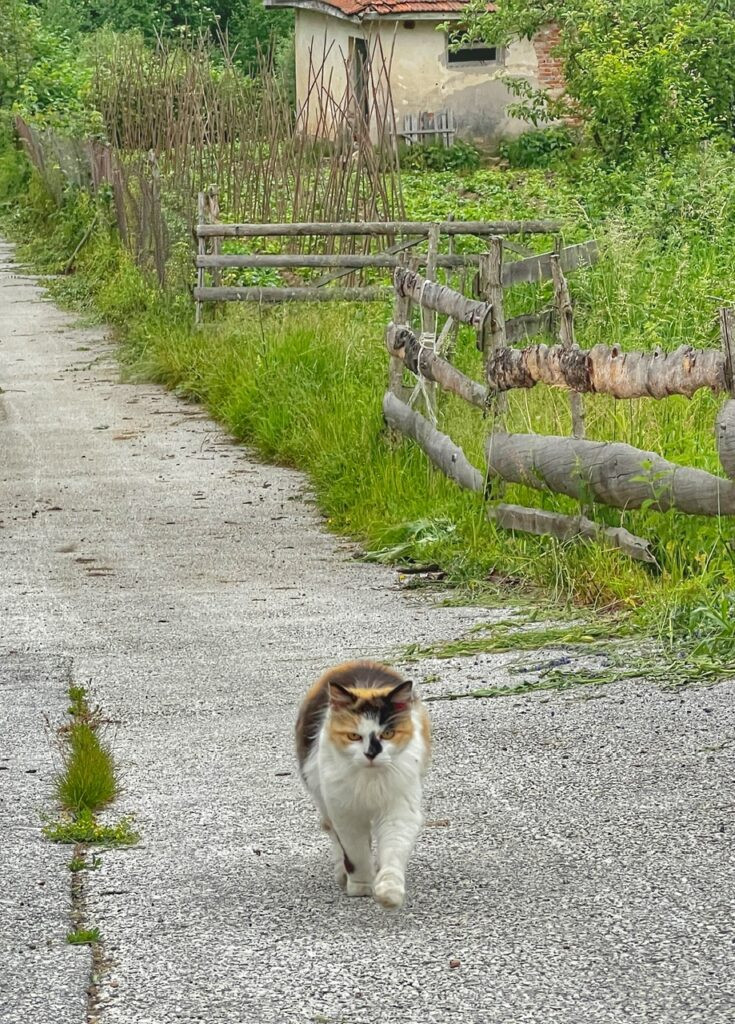
Despite the feudal facade of this edifice, everything else about the village was serene and absolutely…Bulgarian. And the cats were super friendly. He wasn’t even angry we’d given away all the treats.
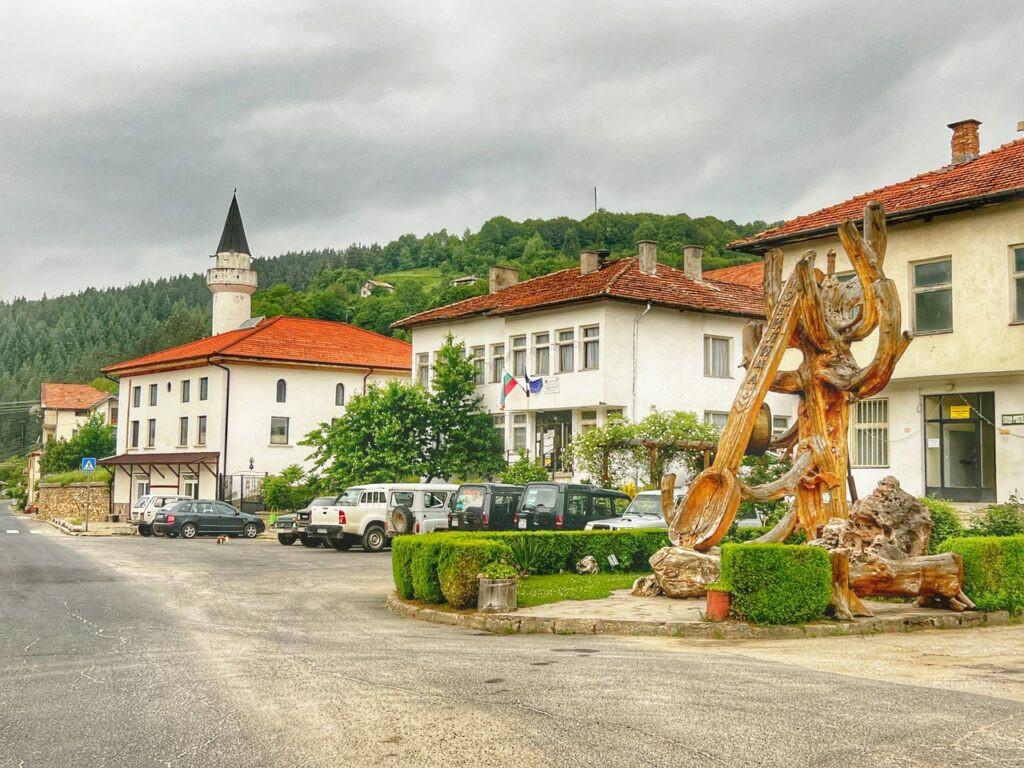
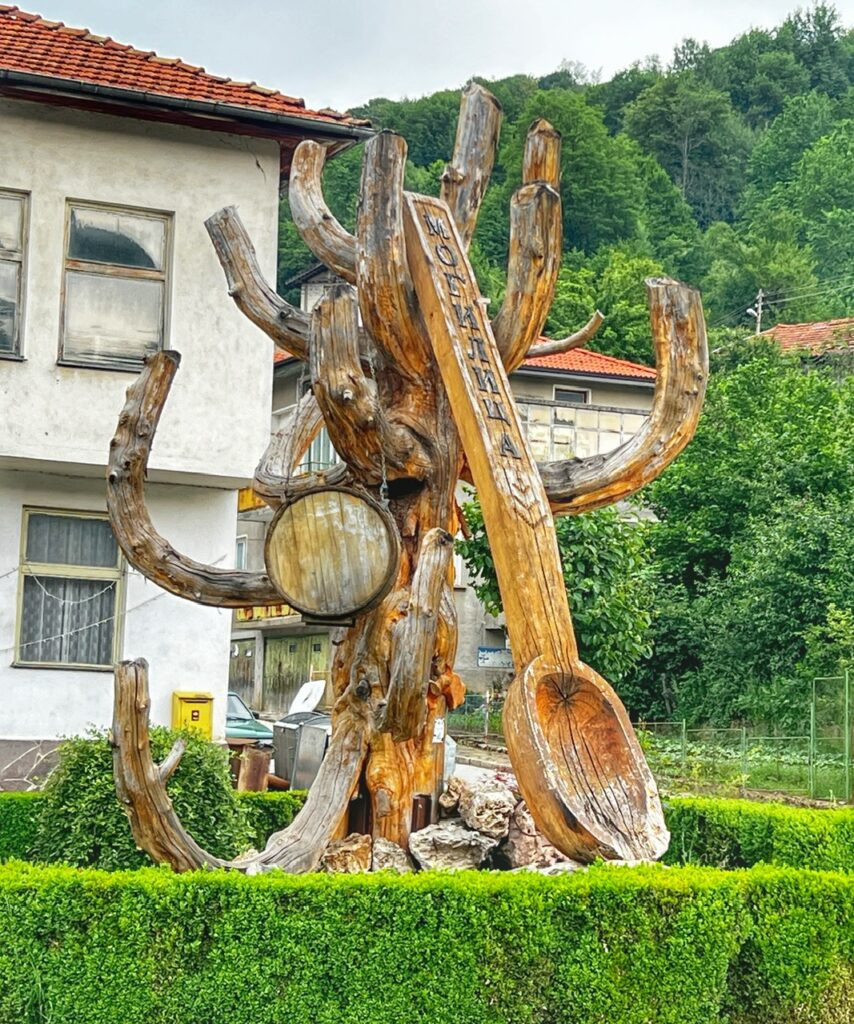
In addition, in the center of Mogilitsa sits what a local craftsman named Bay Mincho boasted would be the world’s largest wooden spoon, a challenge he accepted on a bet of 5 liters of rakia in 2010. Sadly for Mincho, some German went and out-spooned him by 30 centimeters.
Mincho also must have drank too much of that rakia because his spoon broke, and a new one replaced it in 2018, which has a capacity of 123 liters earning it the nickname “spoon for the giants.” It’s still a symbol of community pride.
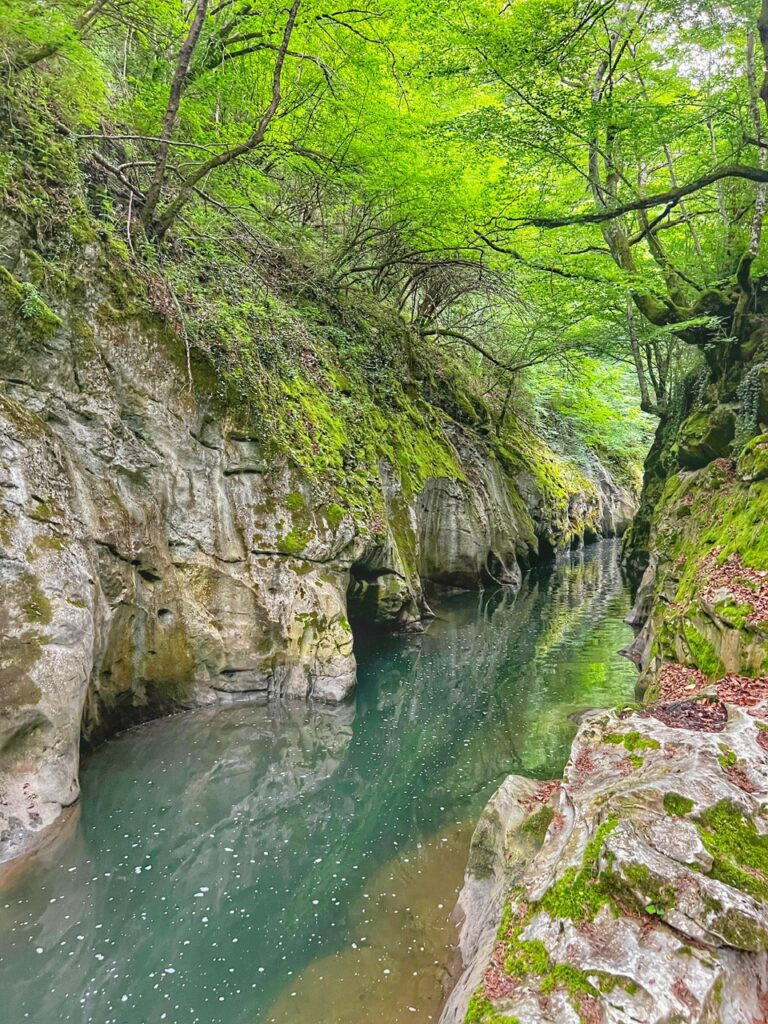
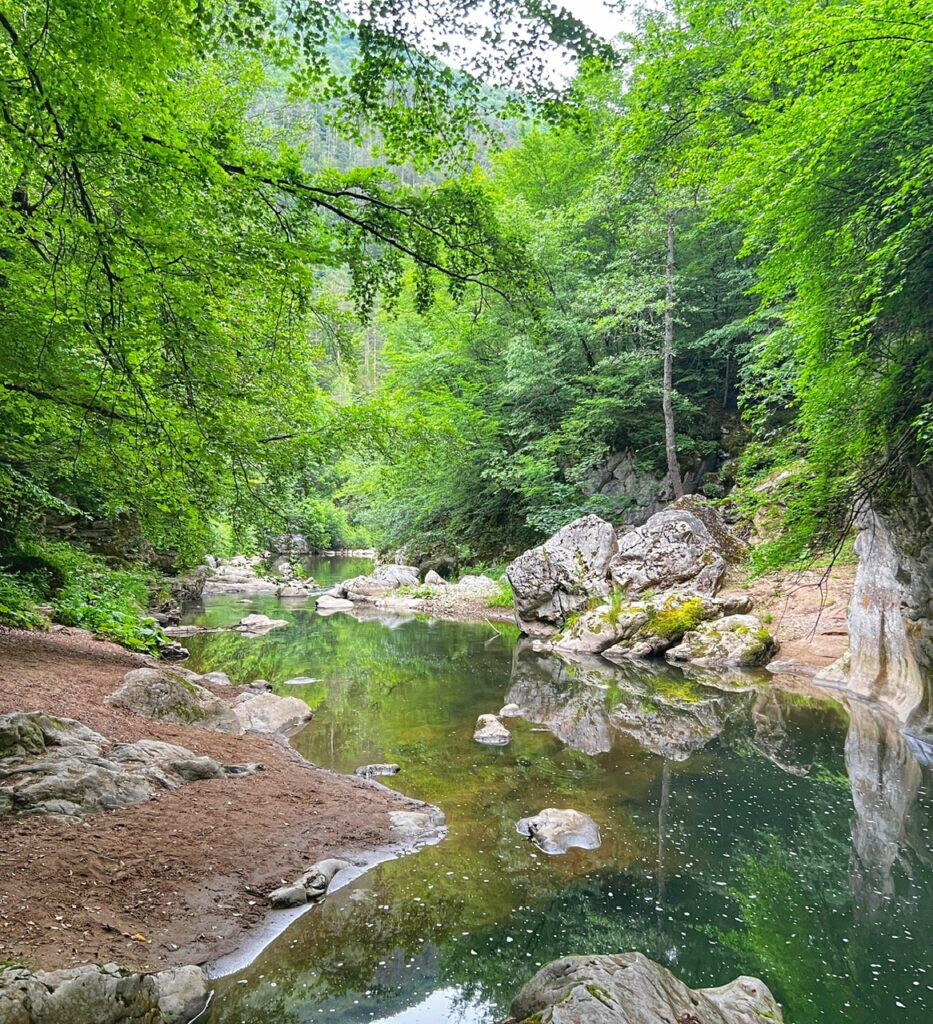
20 minutes later we arrived to Gorlo Canyon in the Arda River, which for millennia, has dissolved and carved the marble rocks to form this narrow gorge, which today is the narrowest place in the riverbed. Boat trips are available by making a reservation at +0877475307. Or, for other adventures in the area visit krepostta-mogilitsa (.com). There are a lot of them!!
It was really quite beautiful, especially because we could hear (but not see!) a waterfall just upstream. If you come on a hot day, bring your suit; it appears to be a fabulous swimming hole. The air temperature was still a bit too chilly for us.

Heading back toward Smolyan, we saw the signs directing us south toward Greece.
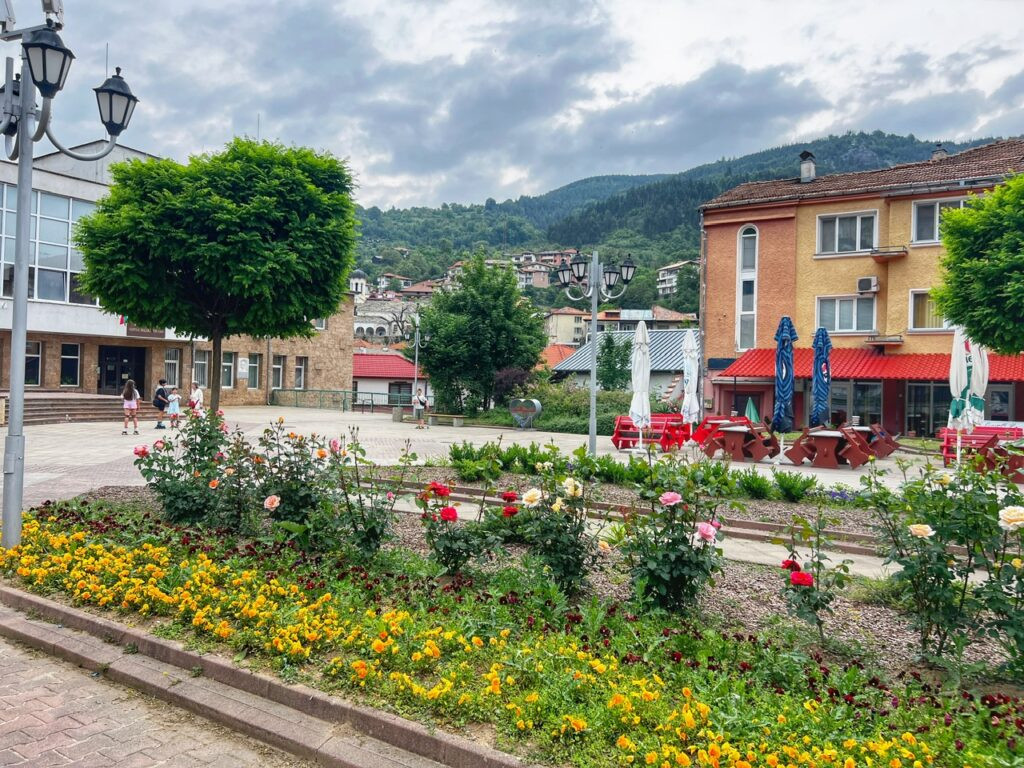
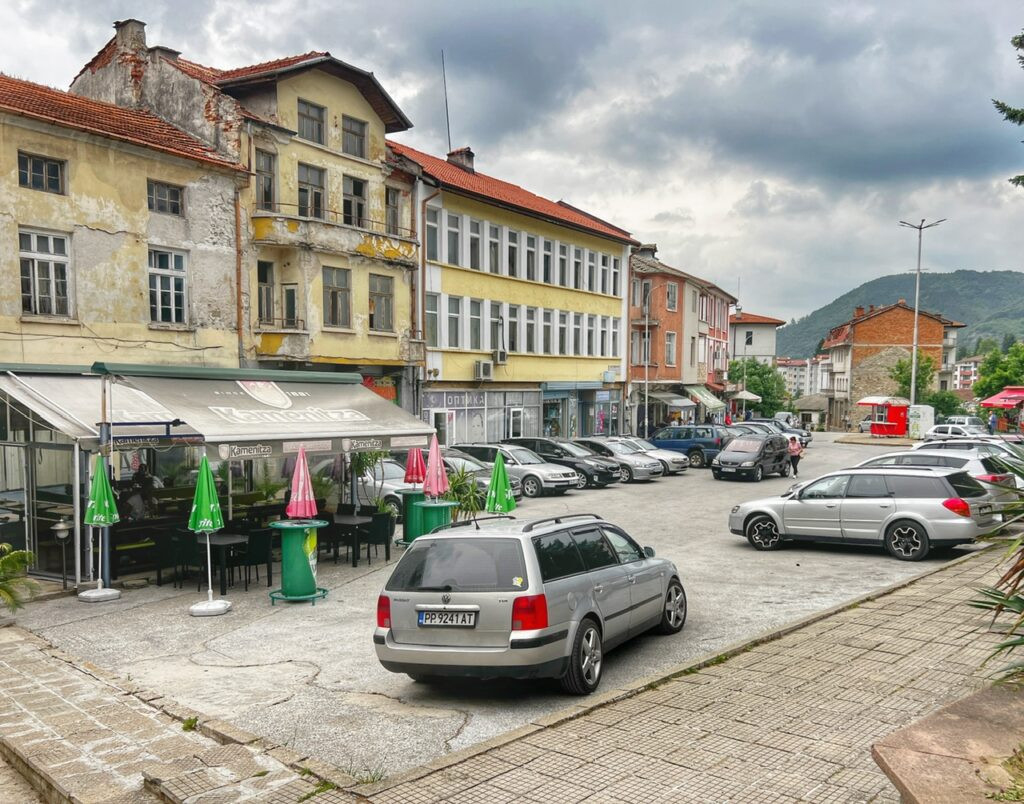
We preferred to point our car toward Ustovo, which is a northern residential area (aka suburb) of Smolyan, a sprawling city of 28,000 people. We liked the vibe of it better than Smolyan itself.
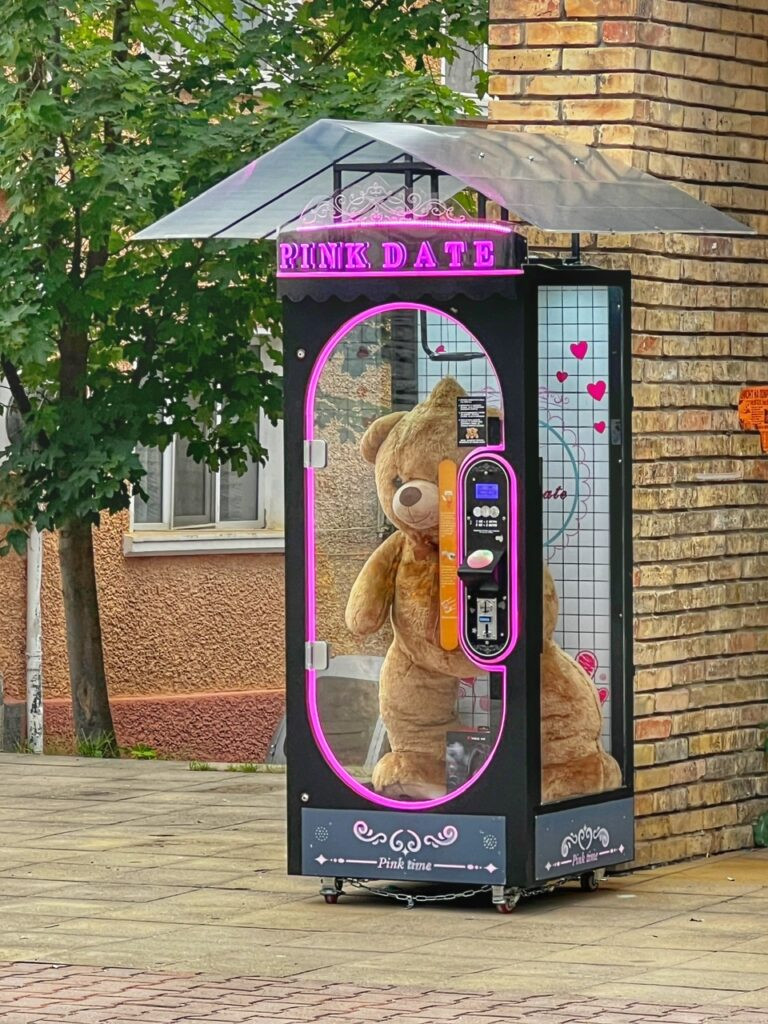
Especially its quite perplexing vending machines.
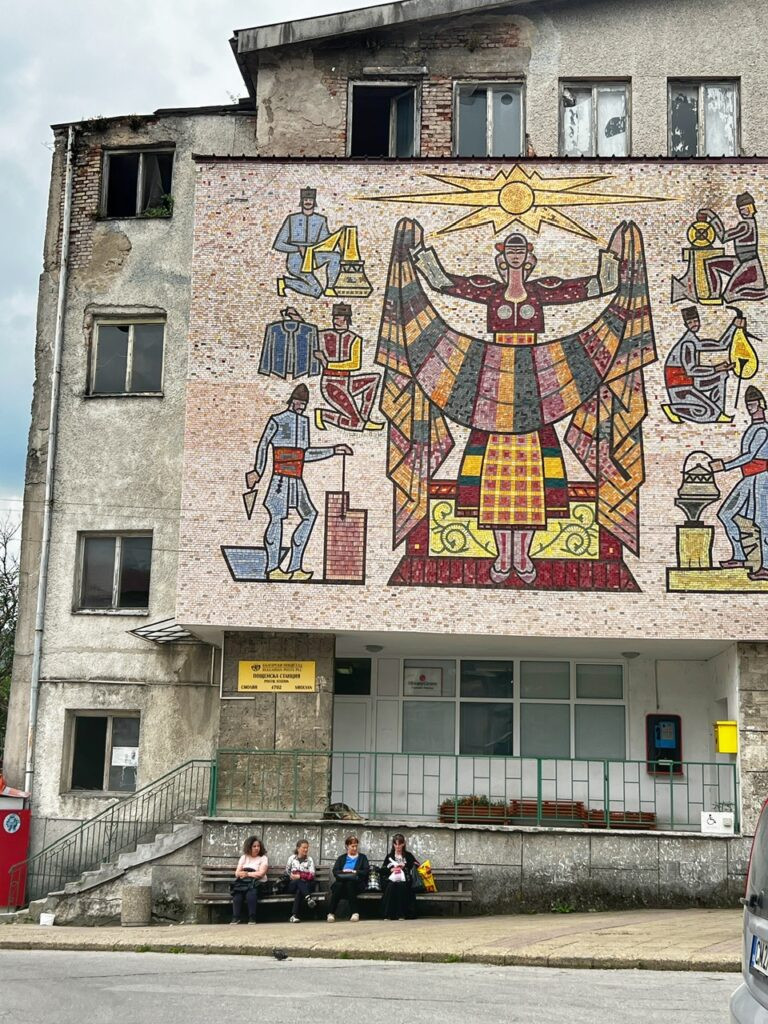
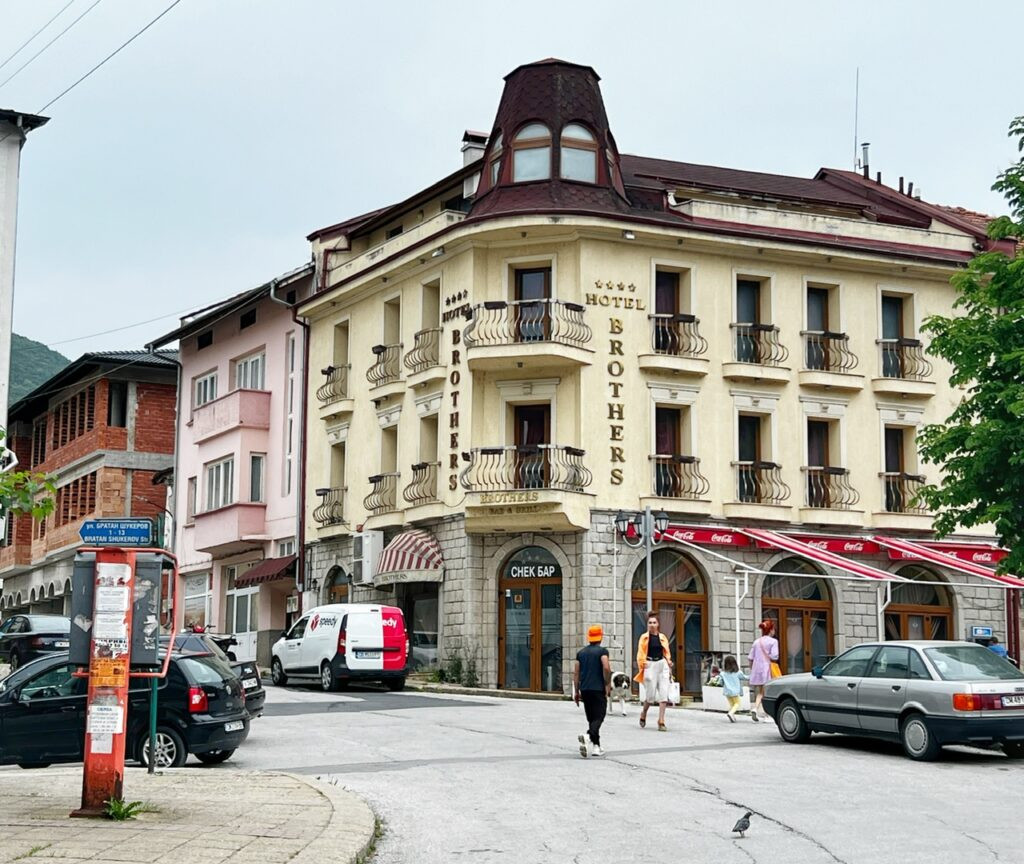
Locals perched on benches under a traditional mosaic mural in Ustovo, as well as other street scenes.
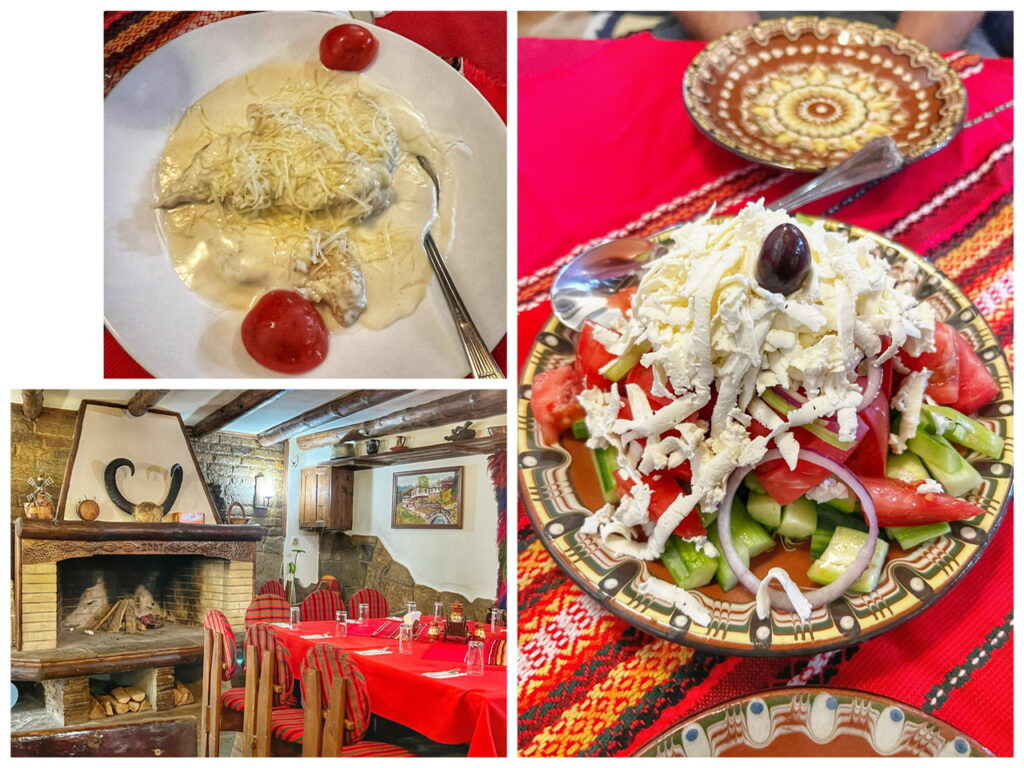
We landed ourselves for dinner at the charming Tavern Charshiyata where we splurged on a shopska salata, a chicken dish loaded with cheese and cream (how could that be bad?!) and two glasses of wine. This mouth-watering meal came to $19, which was notably less than similar restaurant meals we had in the Sandanski region.
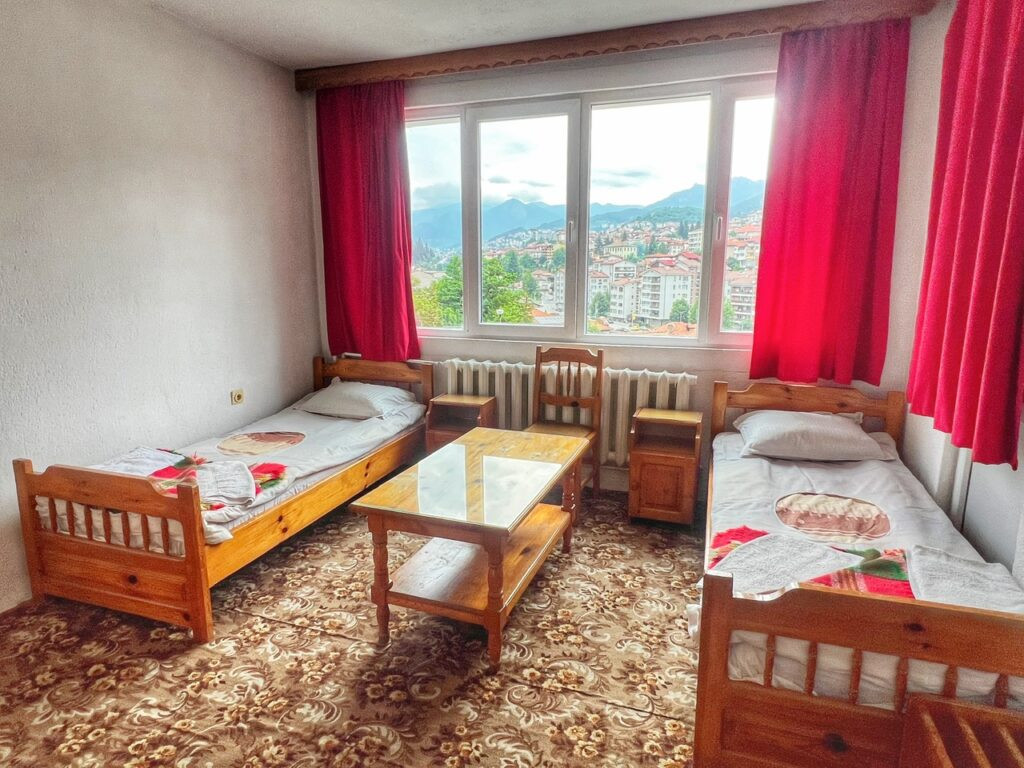
The hotel we chose in Smolyan, Hotel Katerina, was only done so because it was the cheapest one available, and necessary because we were paying double accommodation for our place back in Plovdiv. Sadly, for $29 (and a “VERY GOOD” review on Booking), it also felt like the cheapest one in Smolyan with sorry plank beds, a gag-worthy cig stench, and razor thin carpets which undeniably leftover sofa upholstery from the 1980s. And clearly no perks like a kettle.
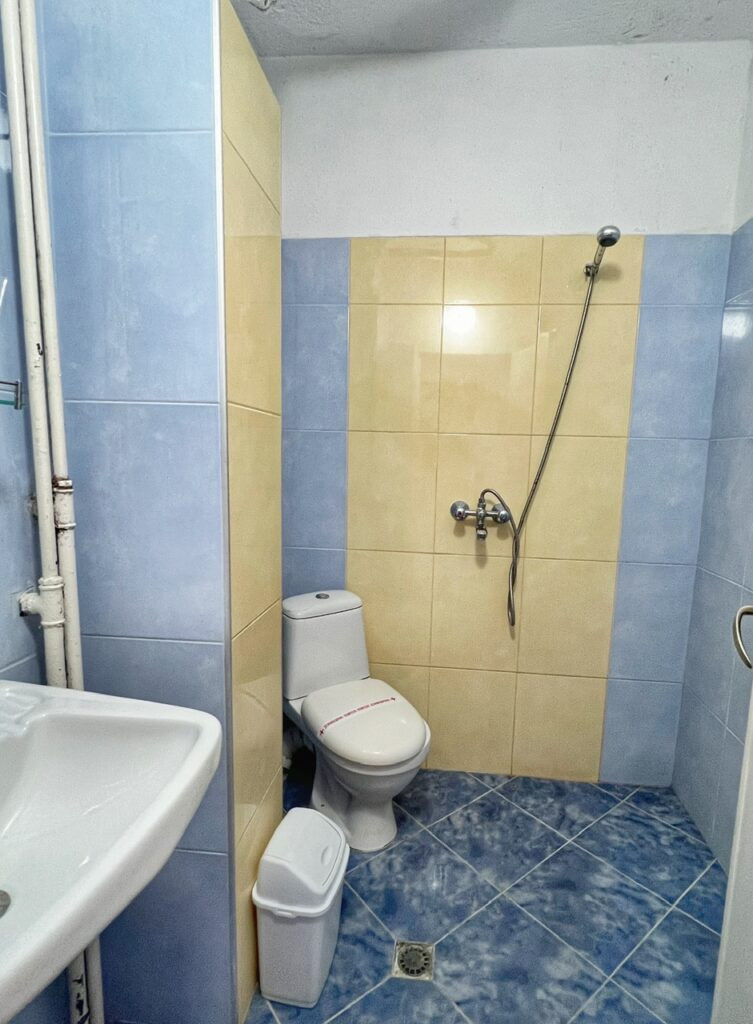

There was also the usual wet bath with a corner throne, and a highly functional smoke alarm, which some desperate-to-smoke Bulgarian clearly had a run-in with after too much rakia.
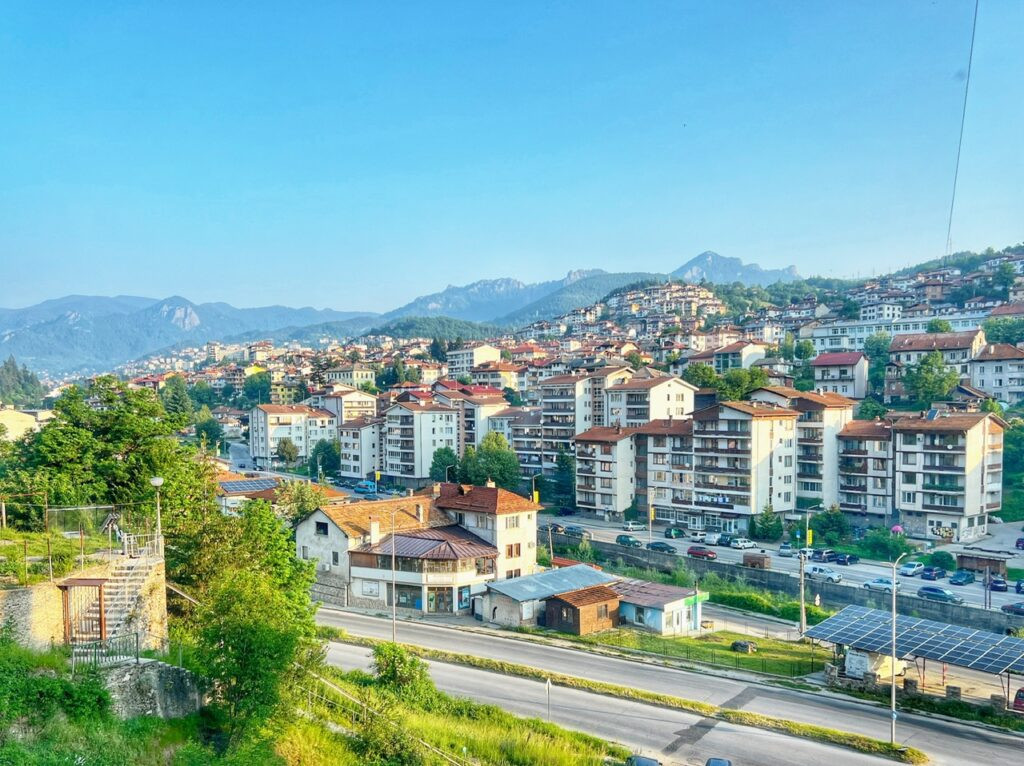
But…the view!! 😉
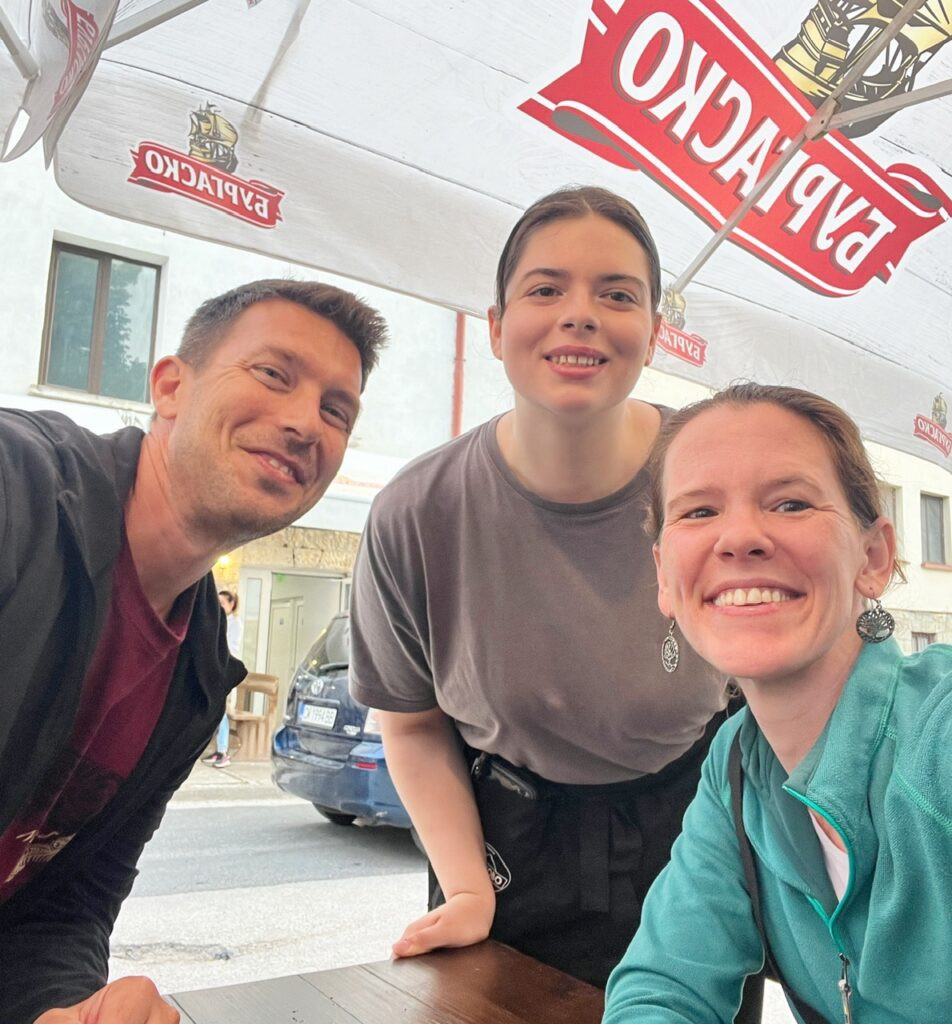
Also…as usual, the people were terrific! For example, our server Victoria, who watched us fumble through our Bulgarian, before revealing she spoke perfect American English, having lived in California, for the first 14 years of her life!
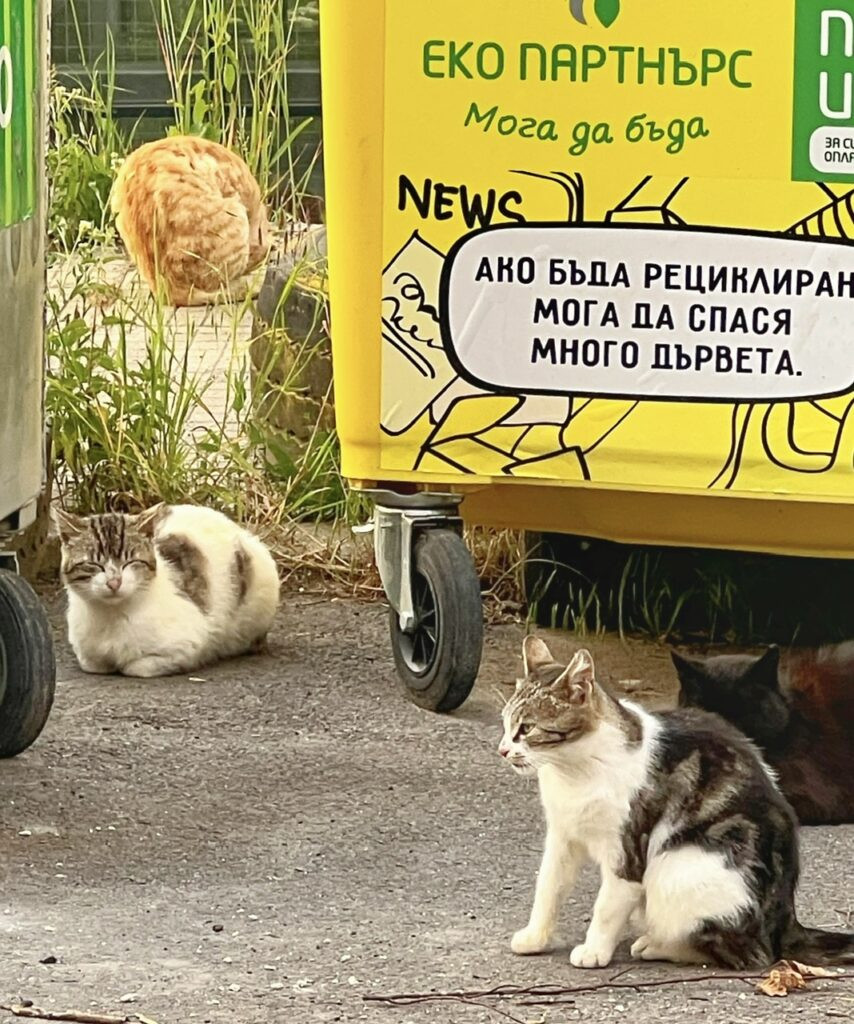
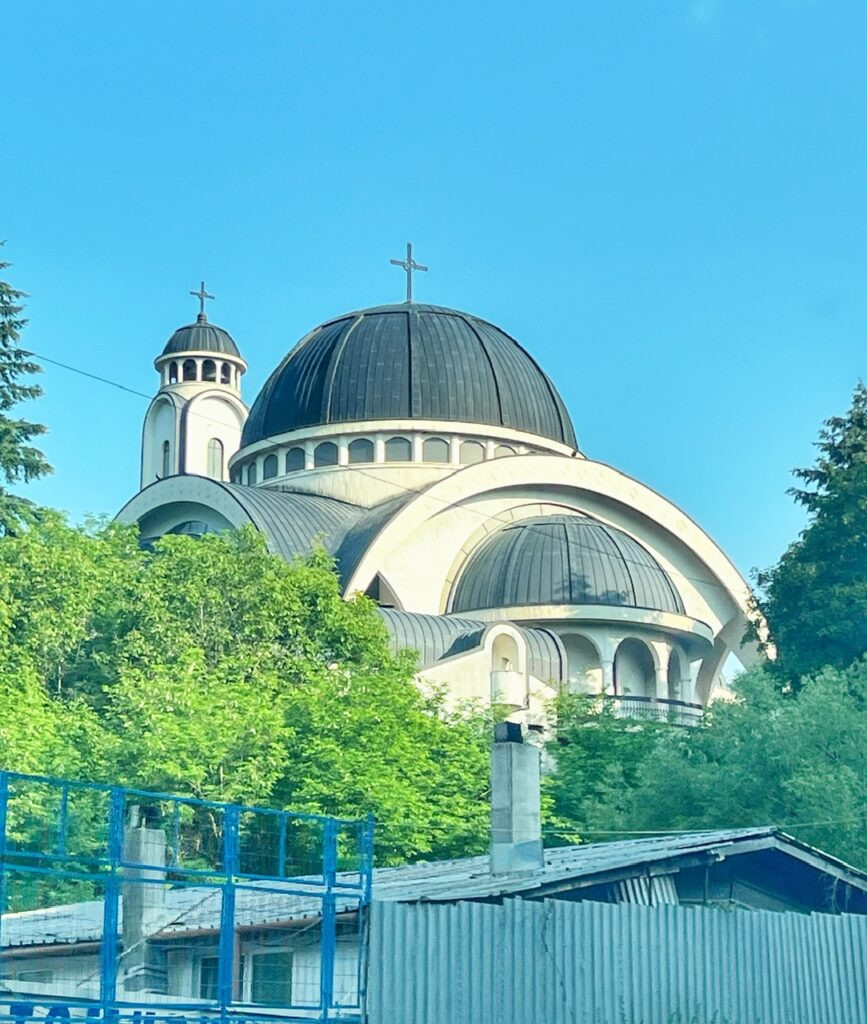
Awww….what a well-groomed and sweet little trash kitty gang 🙁 I want to adopt every one!
Since we forgot our camp pot and heating coil, we sucked it up and bought coffee at a cafe in Smolyan the next morning. A paltry Euro-sized 8 oz worked out to a laughable $3.50/cup, which was a good reminder why we don’t pay for coffee. Again, the minimum wage in Bulgaria is less than this.
On our way out, we also caught a glimpse of the Cathedral of Saint Viassrion, which is the most prominent and massive church, after the main cathedral in Sofia, in the country. This one definitely didn’t offer the same architectural appeal, however. In fact, it bizarrely looked a bit communist to us?!
Day Two:Plovdiv to Smolyan (Including: Shiroka Laka, Gela, Devin, & Devil’s Throat)
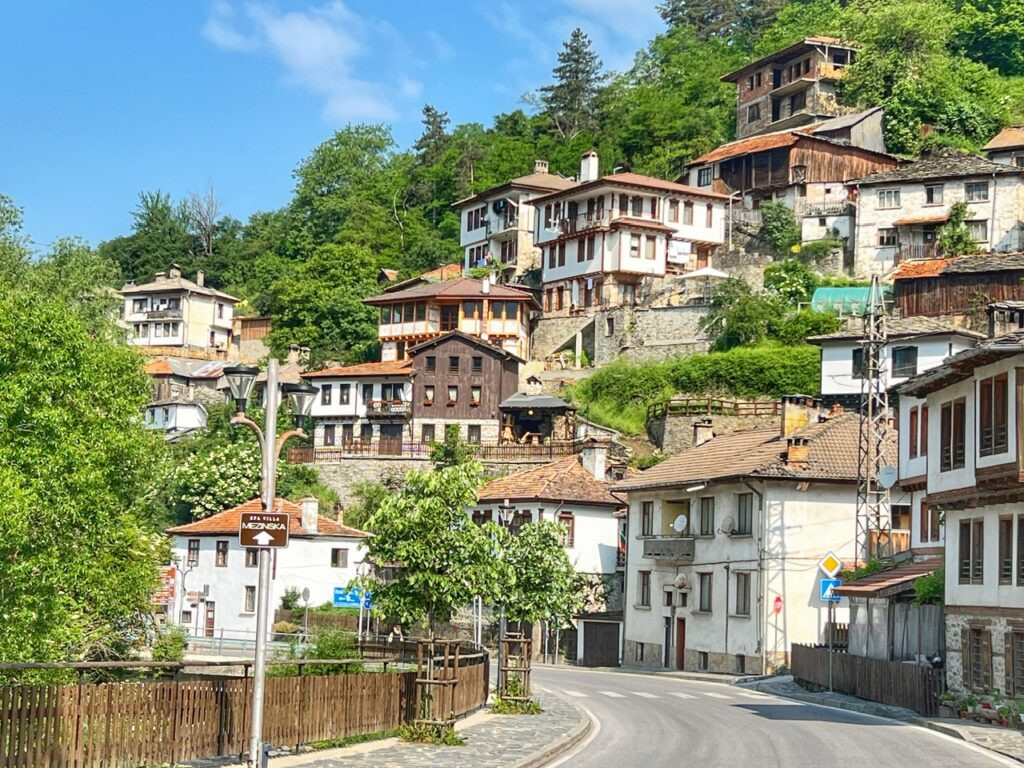
On the morning of day two, we entered another Bulgarian architectural reserve, aka “villages so cute you could pinch their cheeks,” and Shiroka Lake is arguably the most beguiling we’ve pinched (thus far.) Flooded with 19th Century Bulgarian Revival style architecture, Shiroka Laka is just that kind of place…utterly surreal and classically timeless.
Folded in the scenic Rhodope Mountains, it evoked memories of other places we’ve fallen head over heels with like Albania’s Gjirokaster and Berat…
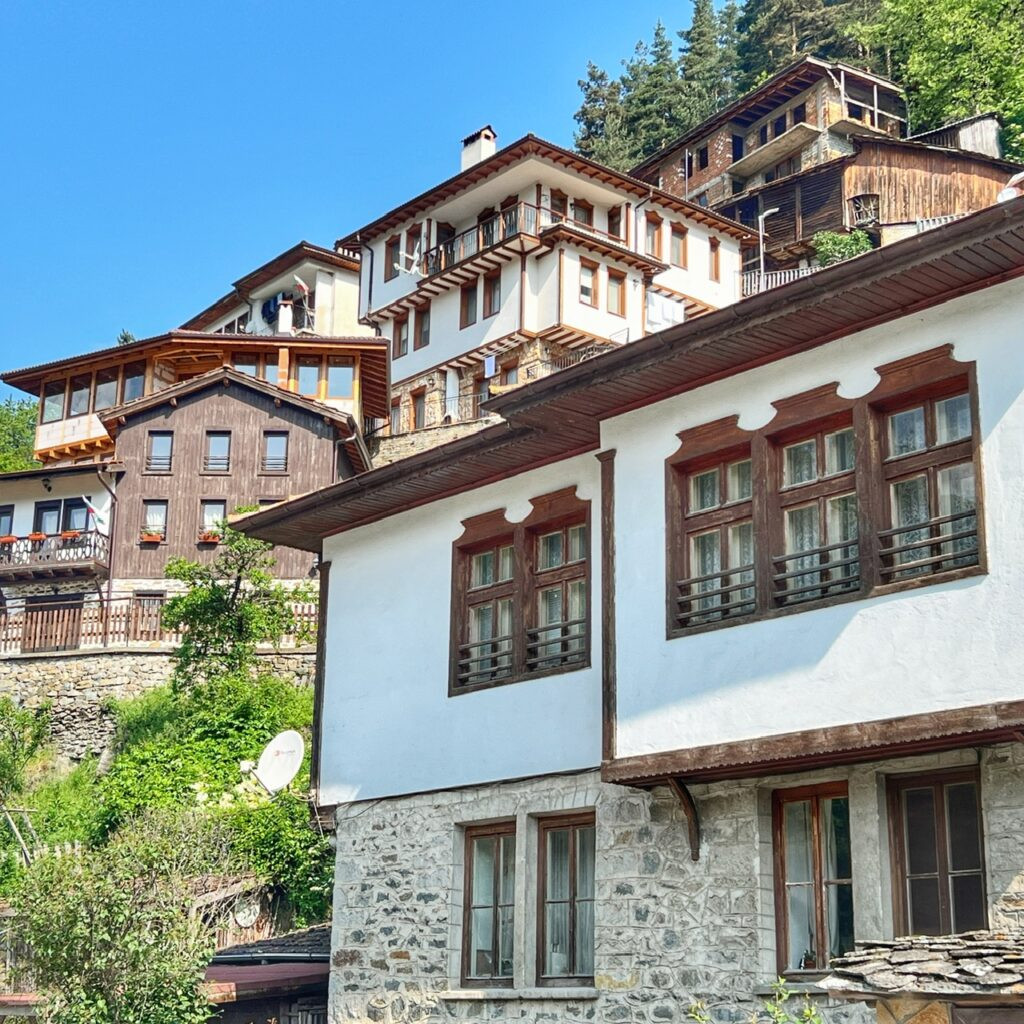
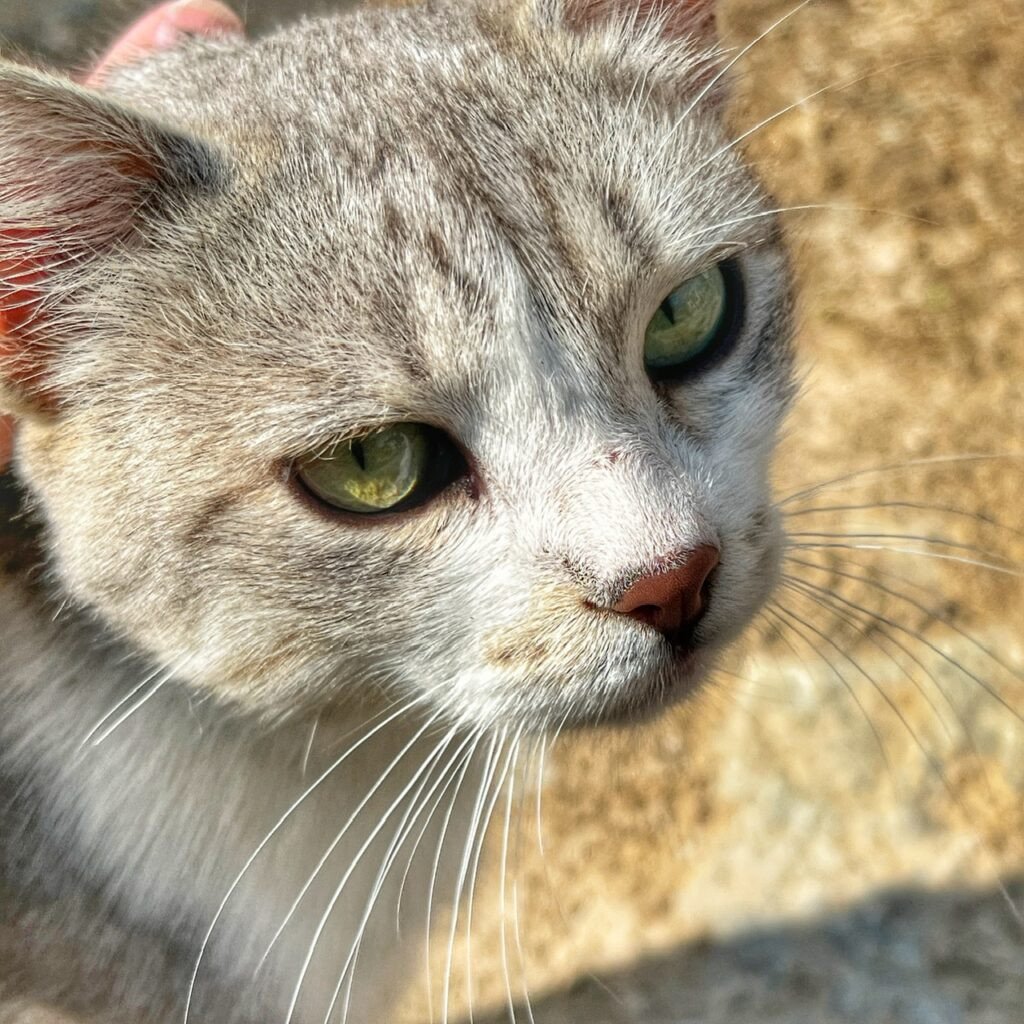
…as if literally plucked from the pages of a storybook. The cats even talk here!
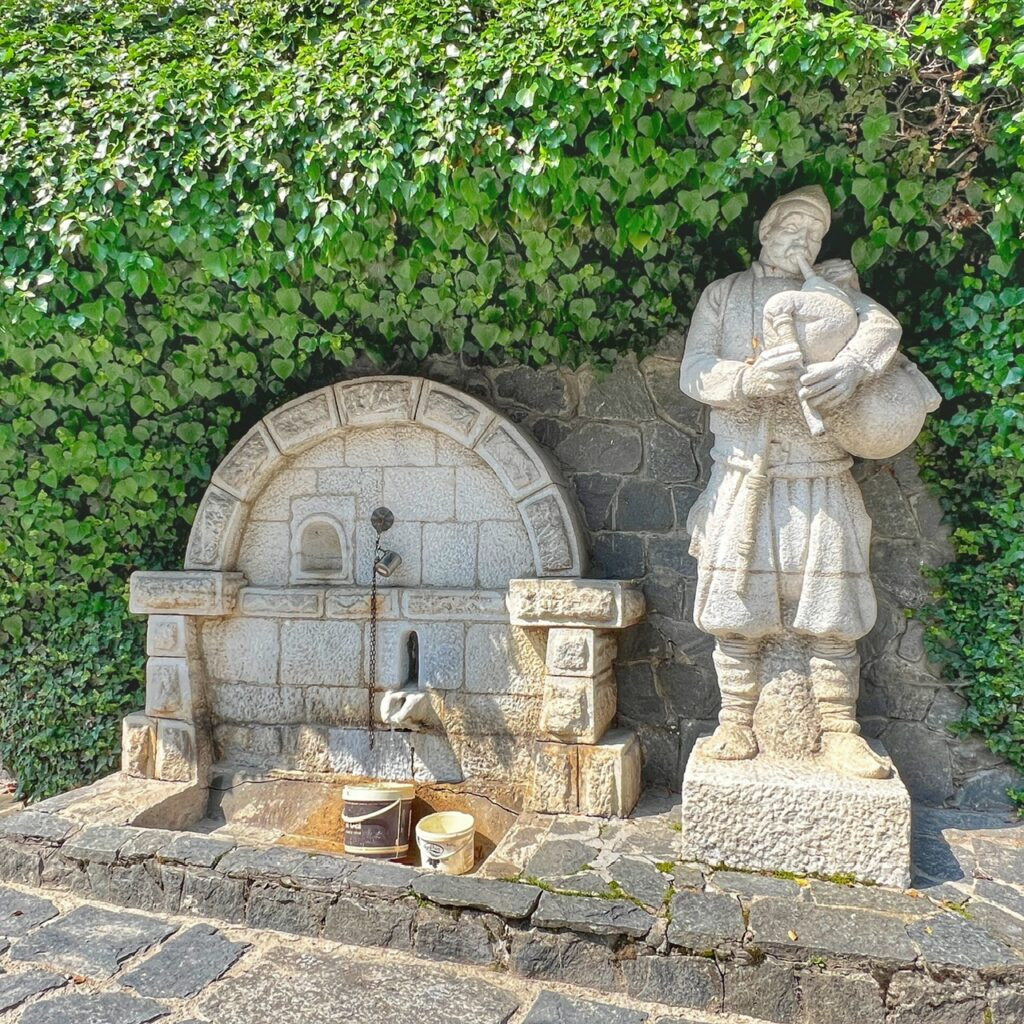
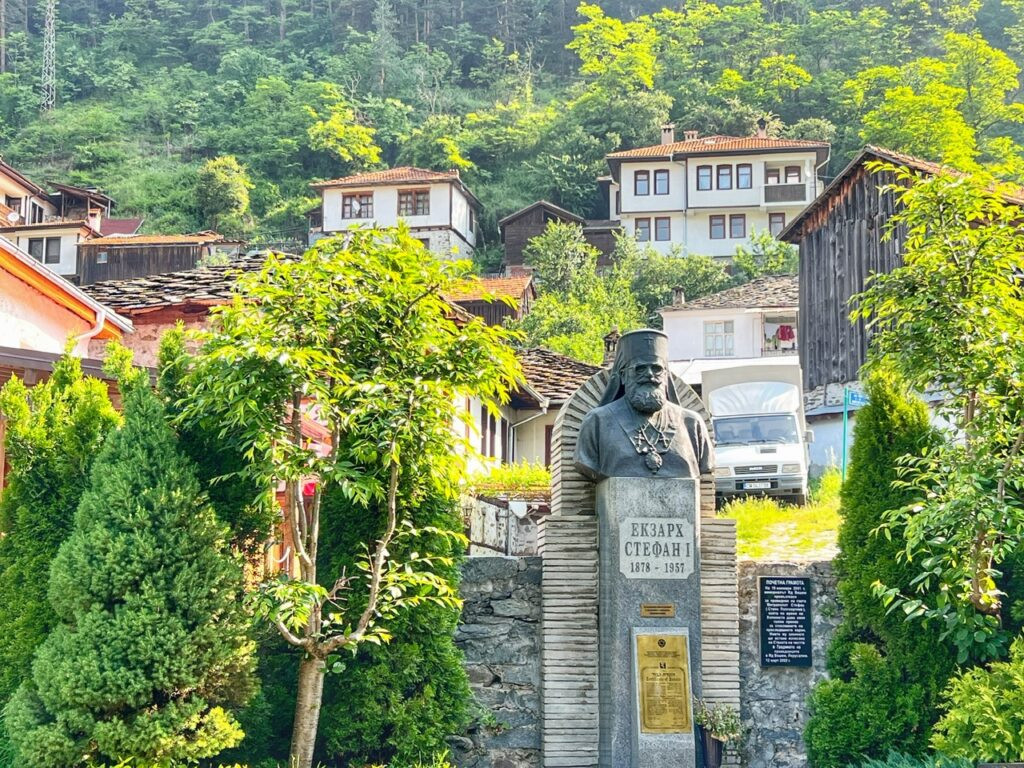
In addition to being adorable, Shiroka Laka is a center of traditional Rhodope music, especially the eerily beautiful kaba gaida (a type of bagpipe). It’s also home to the National School of Folklore Arts, where students from across Bulgaria study traditional music and dance.
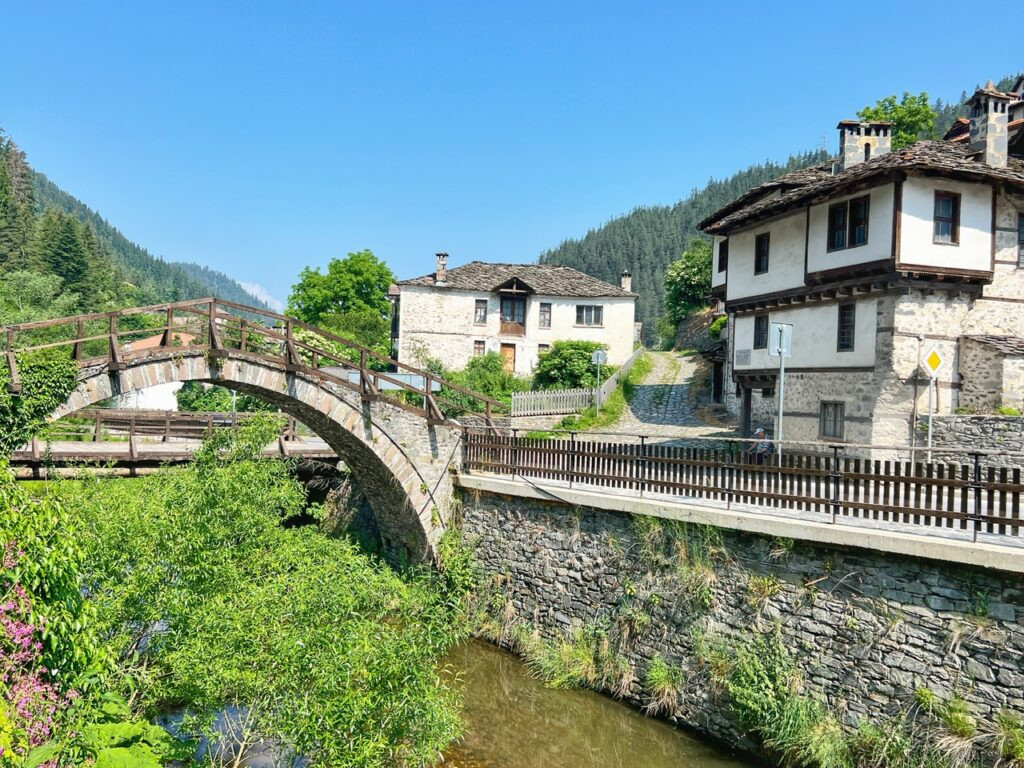
Shiroka Laka is also graced with several swoon-worthy 18-19th Century Ottoman bridges.
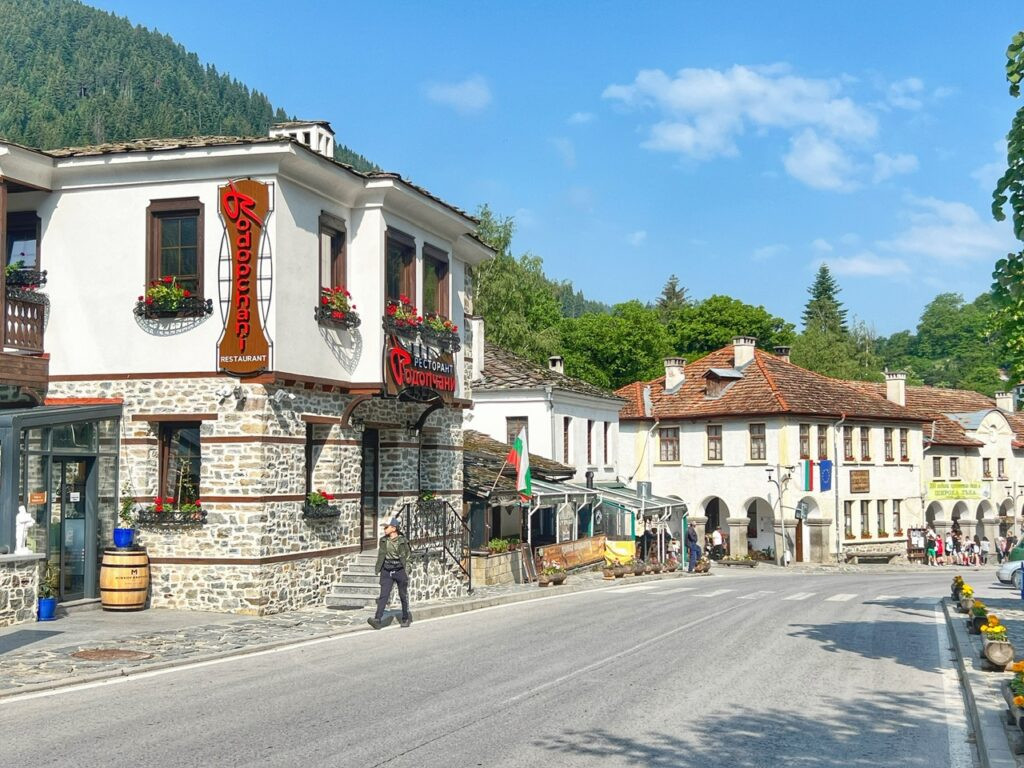
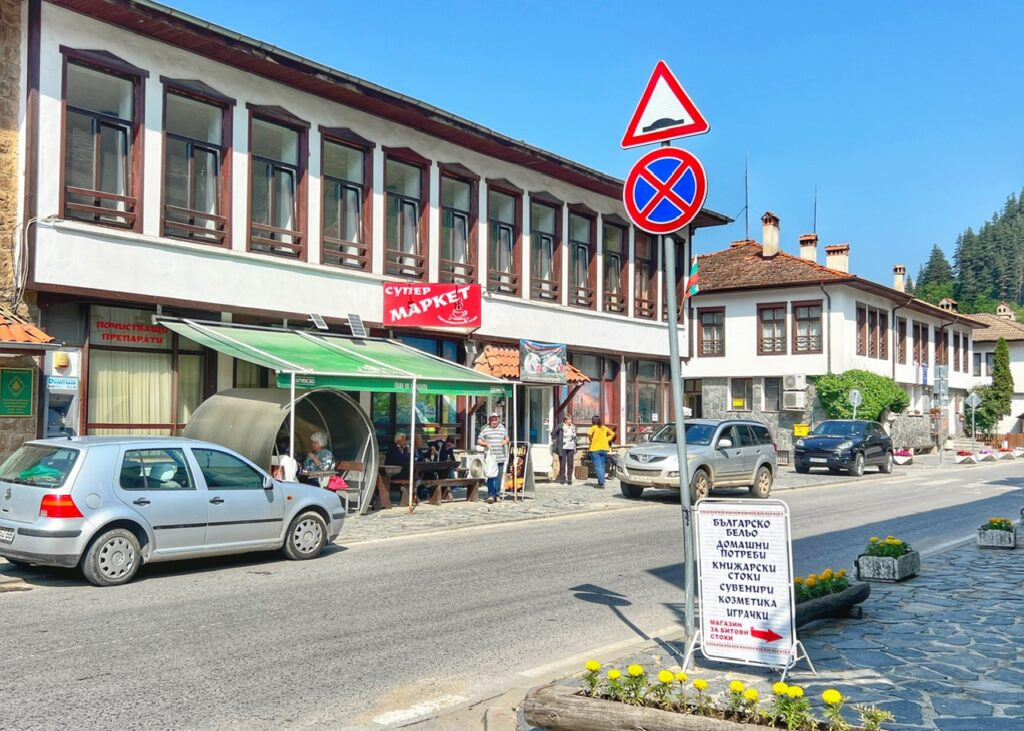
The main thoroughfare that runs through Shiroka Laka features several restaurants, a couple of souvenir stands, and even one small market.
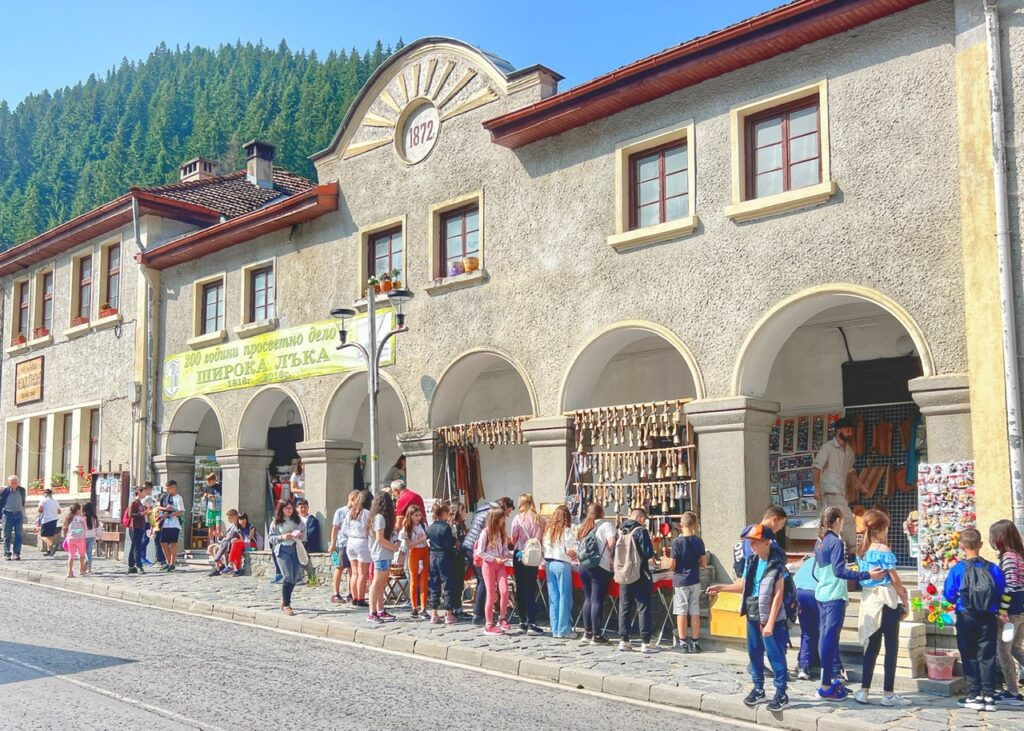
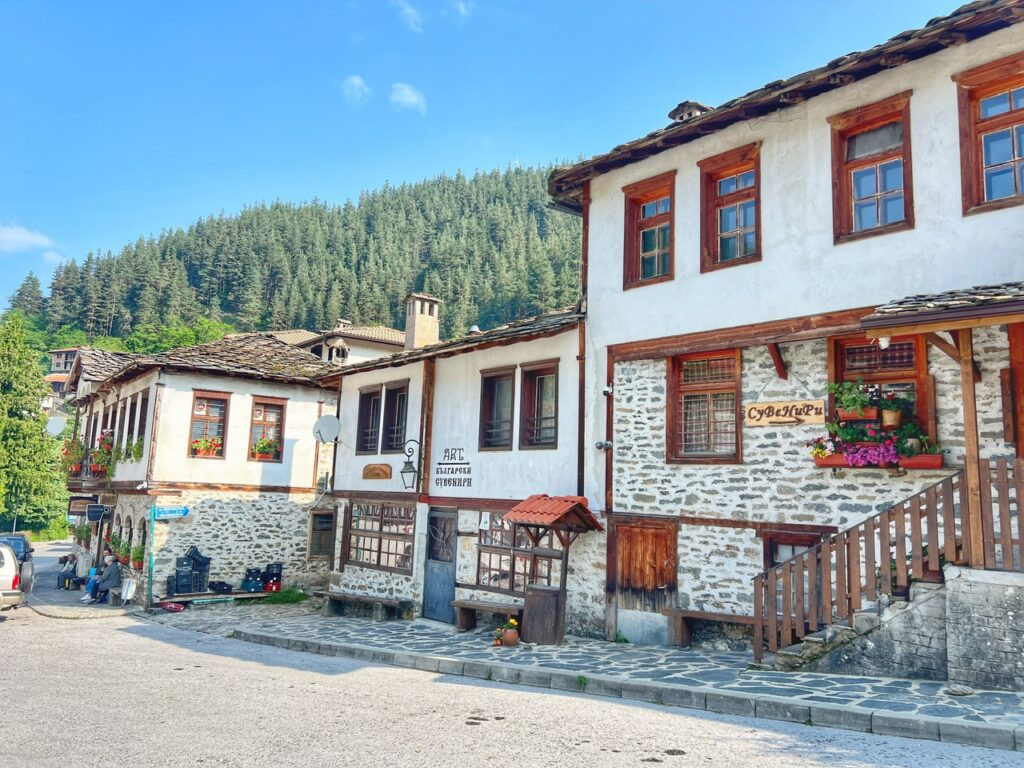
It’s clearly popular with domestic tourists, including young middle school groups lapping up the tourist loot, but we didn’t hear any other foreigners. We have yet to figure out why…but definitely not complaining!
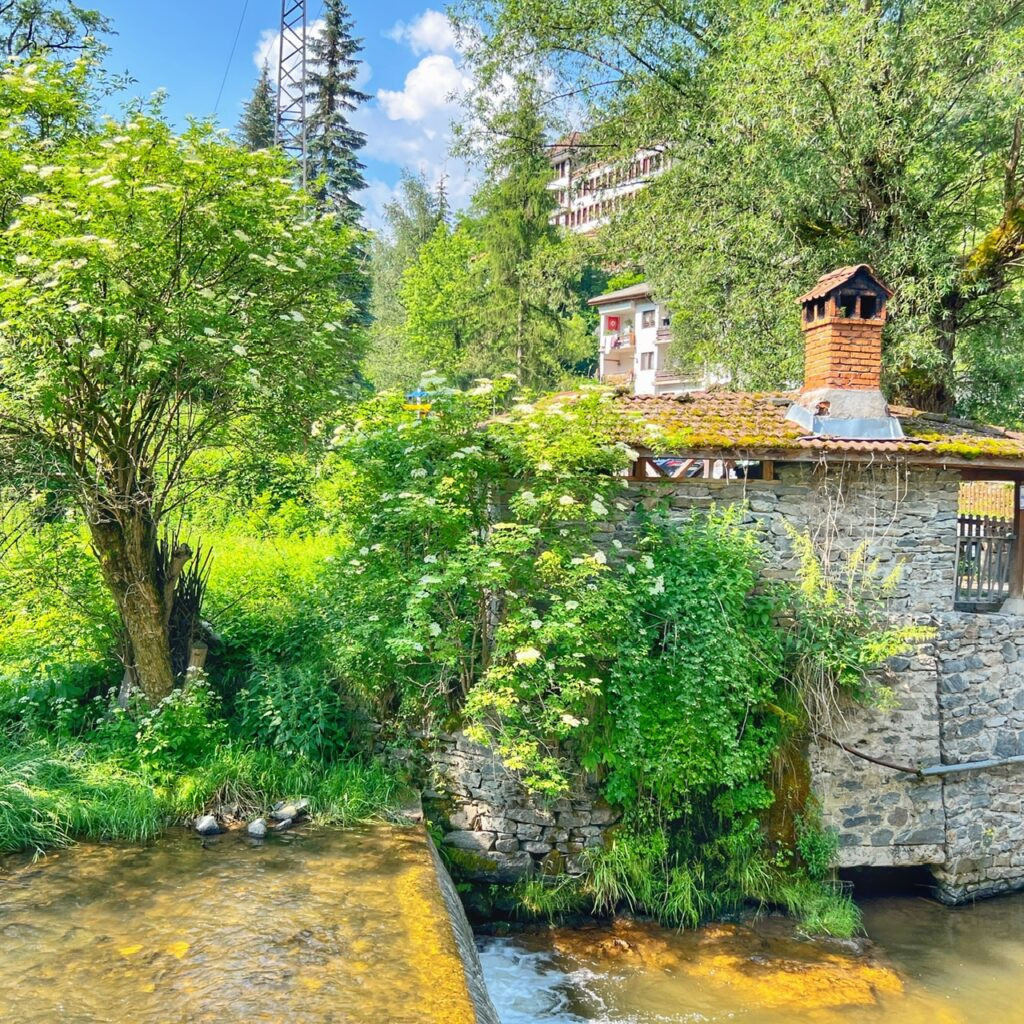
A stone water wheel house sits alongside the river.
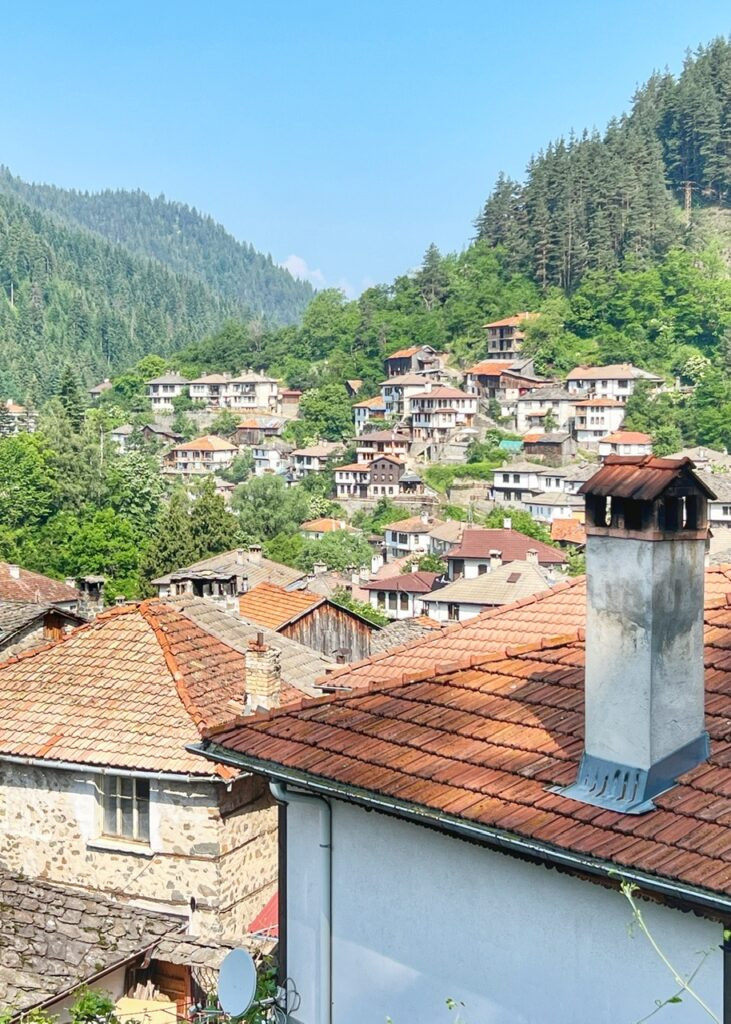
Wandering up the hillside, the terraced houses get even more mesmerizing.
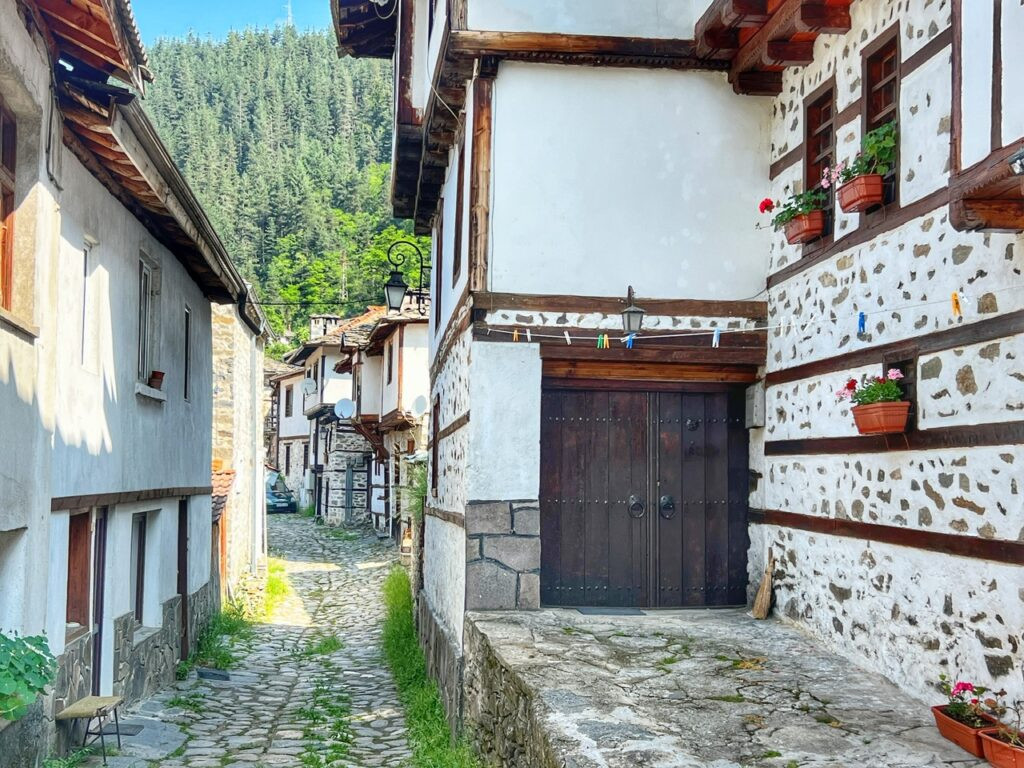
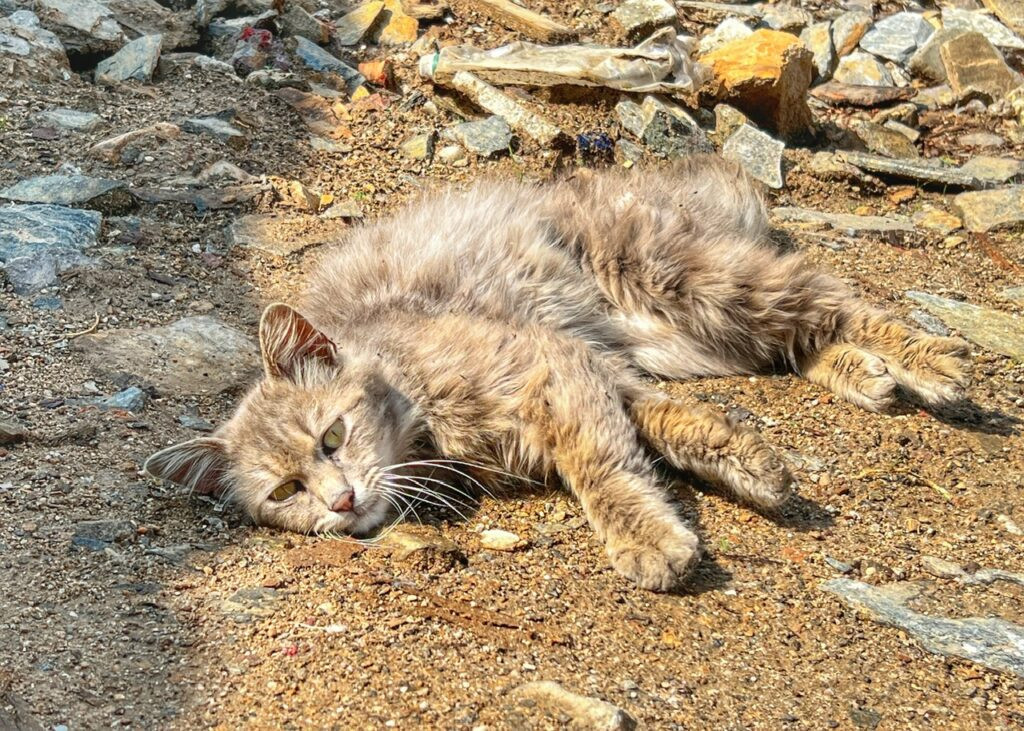
We belong in a place like this. Please stay awhile…and adopt me. 😻
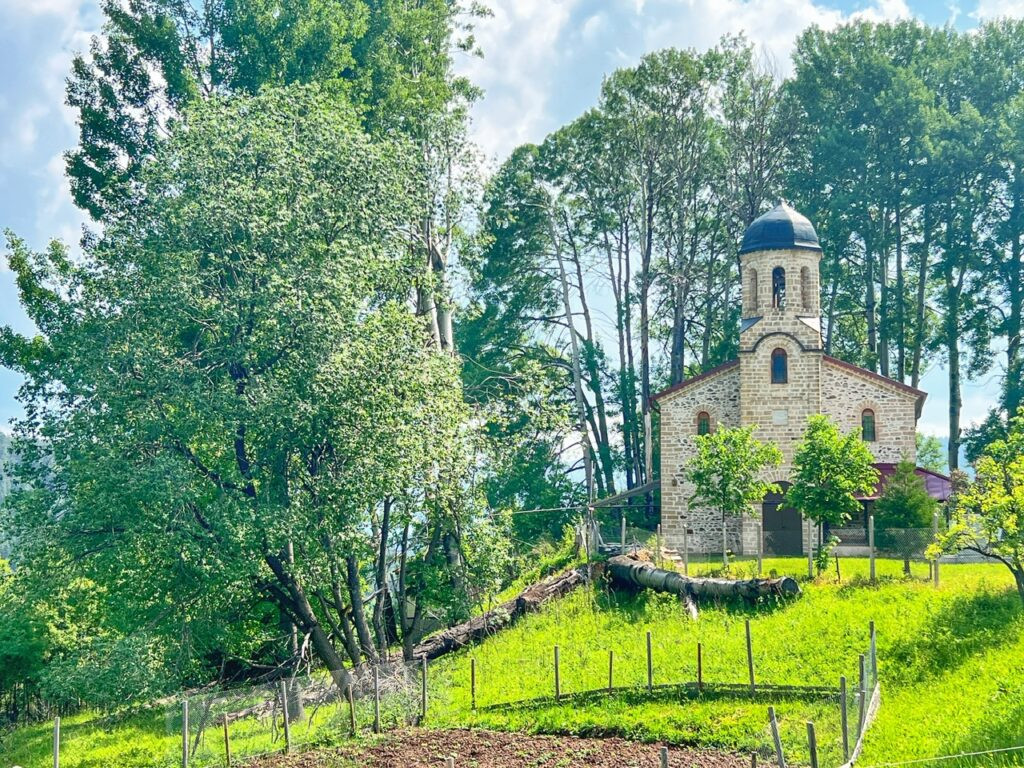
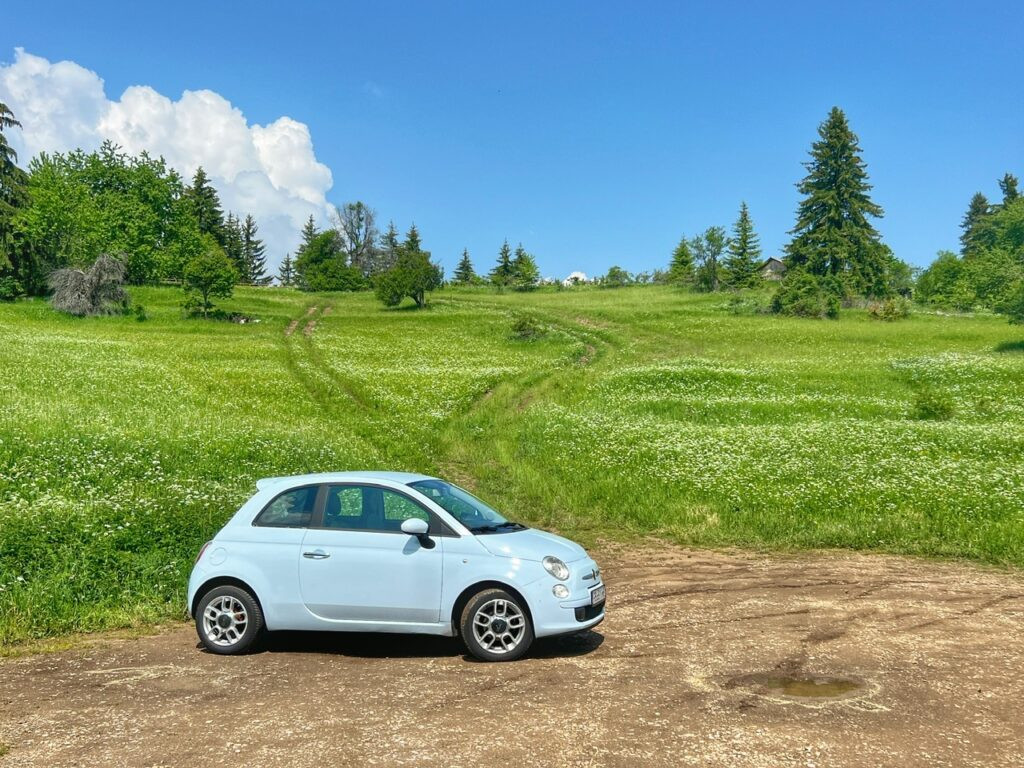
After tearing ourselves away from the magnetism of Shiroka Laka, we transported ourselves 15 minutes further into the Rhodopes to another kind of captivation in the village of Gela. With rolling pastoral meadows dusted with wildflowers, the ruins of an ancient 5th Century basilica, and melodic bird song made for a Disney princess soundtrack, it’s no surprise that it’s steeped in the legend of a mythical Thracian musician and poet who softened the hearts of the gods, made trees sway and charmed forest animals with the supernatural strumming of his lyre.
Ah yes, according to local folklore, Gela, surrounded by deep forests, echoing canyons and rushing streams, is the birthplace of Orpheus. And, although not officially confirmed by historians, the myth lives strongly among the people in the region. Whether or not the legend is entirely true or not…we could definitely feel the earth’s energy.
Balanced on a silent hilltop and surrounded by pine forests sits the Church of the Holy Trinity, which is fairly modern from the 20th Century. We parked our little fiat across the street so we could walk around amongst the area and fully integrate with the surroundings.
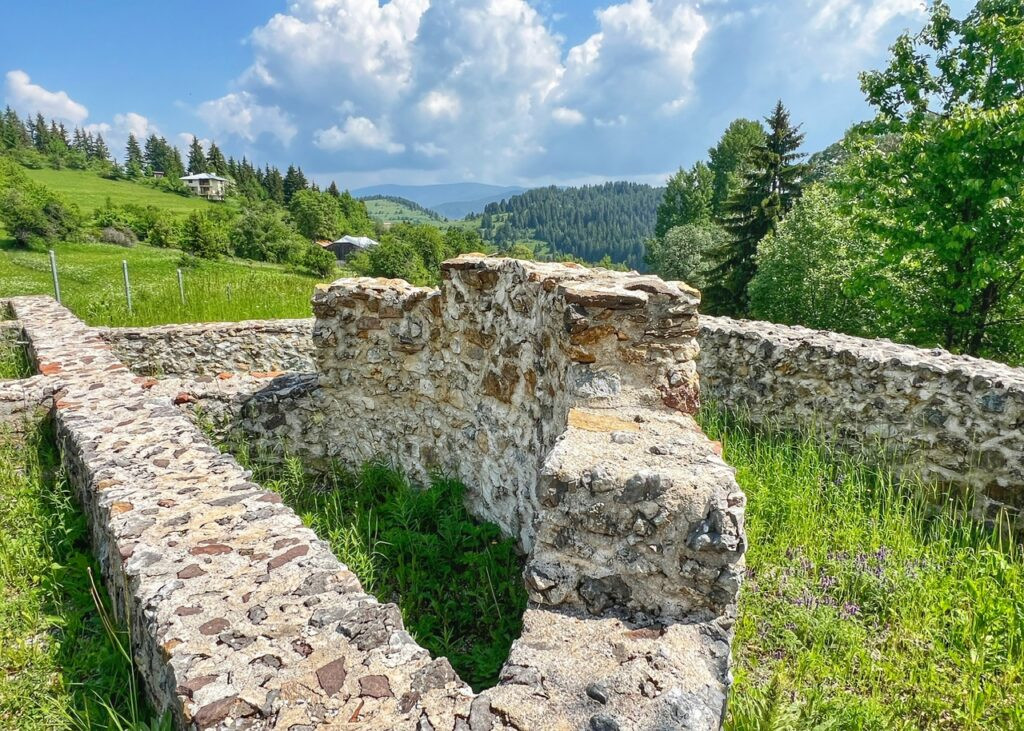
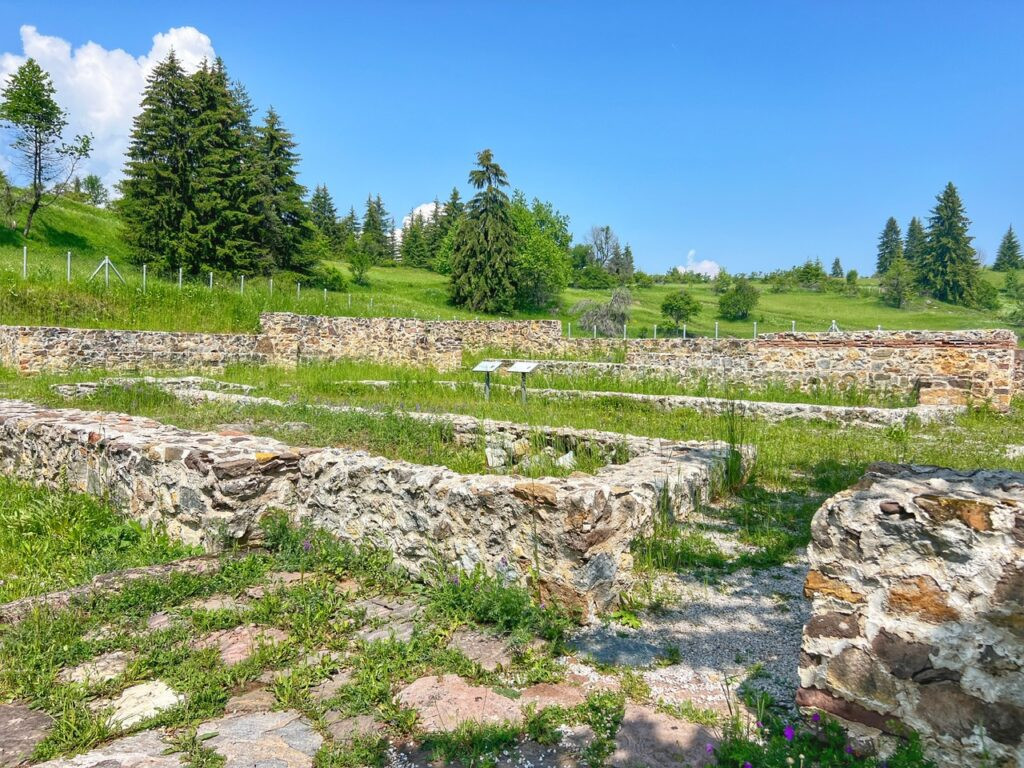
This included visiting a long forgotten Early Christian Basilica ruin from the 5th or 6th Century in the middle of an overgrown field. On the east side of the complex, we found the altar space designed for the religious rite. (Not to be confused with religious right.)
The solitude was absolutely inviting as we wandered these ruins, embracing the sun and gentle breeze amongst the bird song. That is, until a giant hare darted out from one of the ruins, clearly as startled to meet us as we were to meet him.
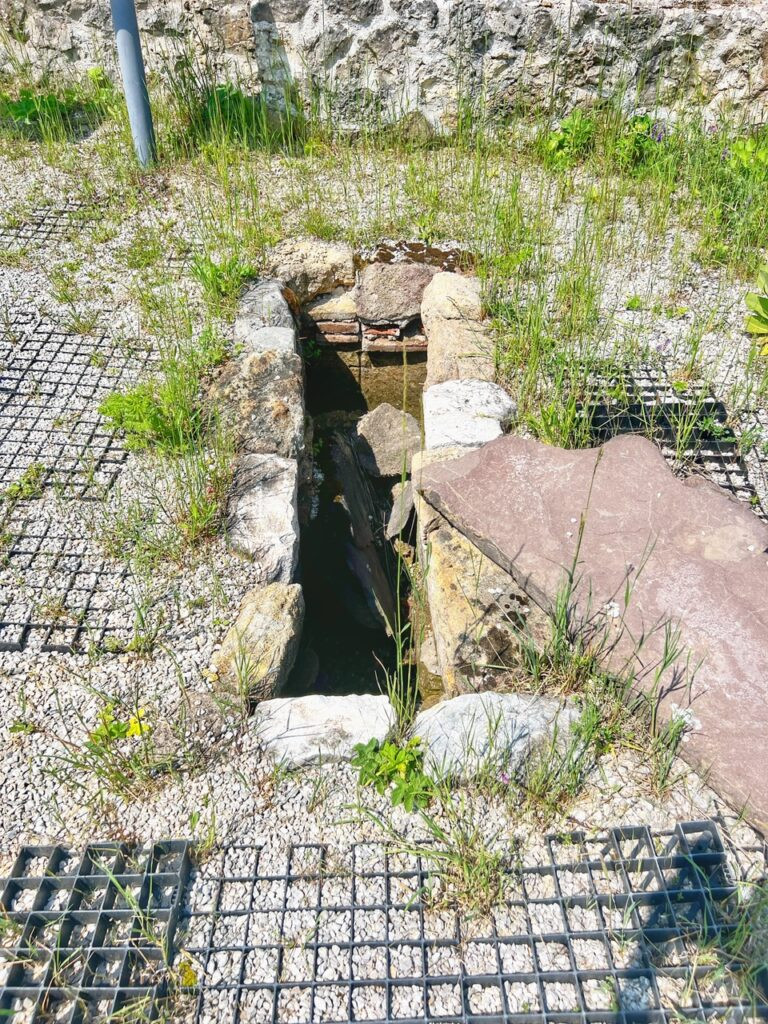
On the western edge of the complex was a grave chamber. When discovered, it held a skeleton with a golden coin of the Byzantine Emperor Justinian I (from 527-563) in its mouth. According to the plaque, most likely, the buried man had been once an especially honored high-rank ecclesiastic bishop and libations and pilgrimage were performed on his tomb.
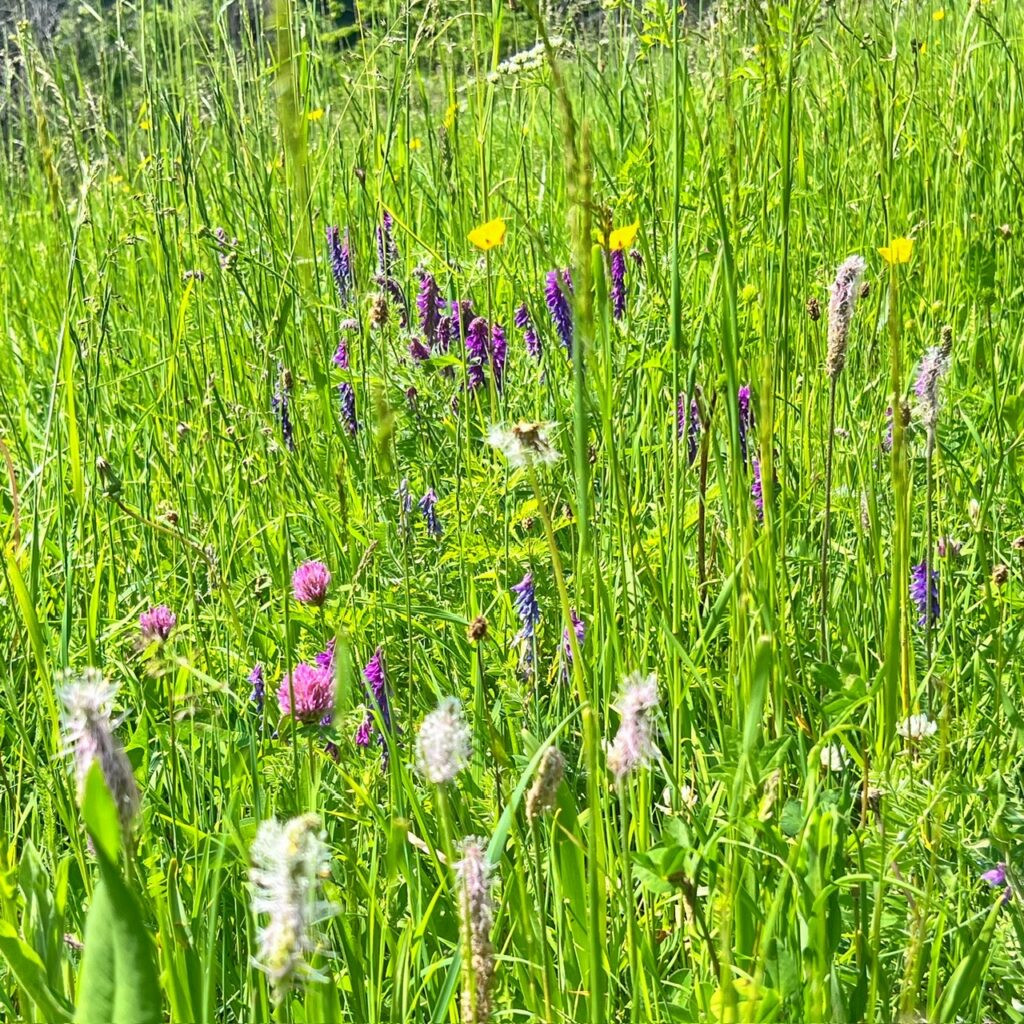
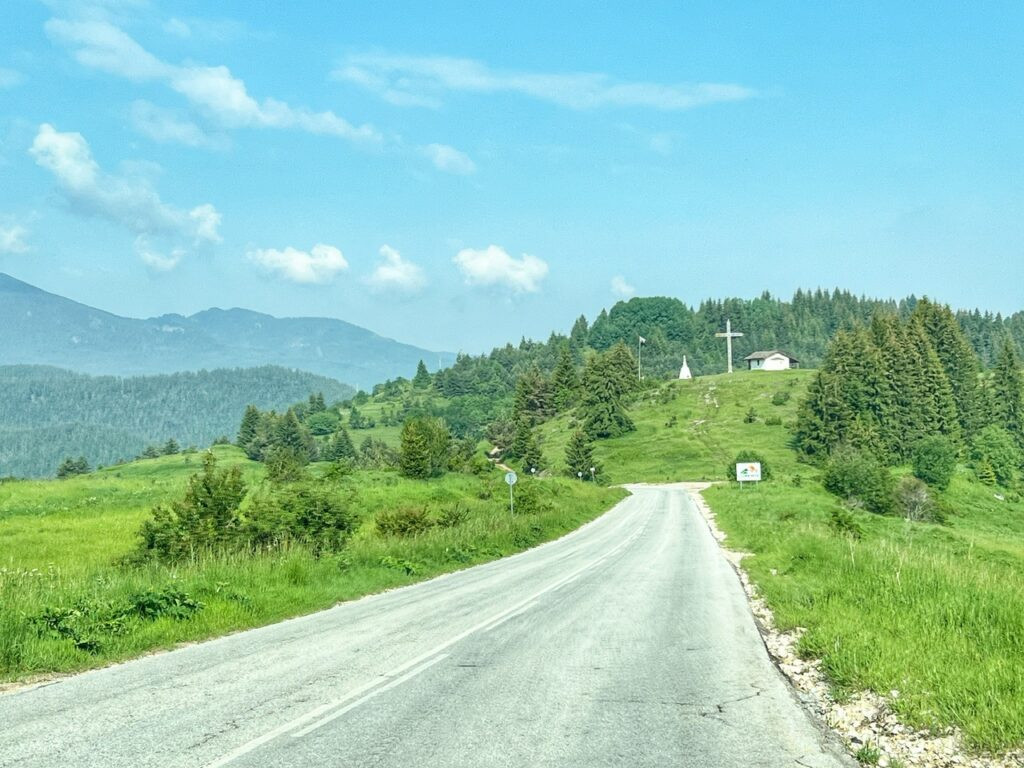
Carpets of wildflowers, as well as the rolling Rhodopes, en route to Shiroka Lake from Smolyan.
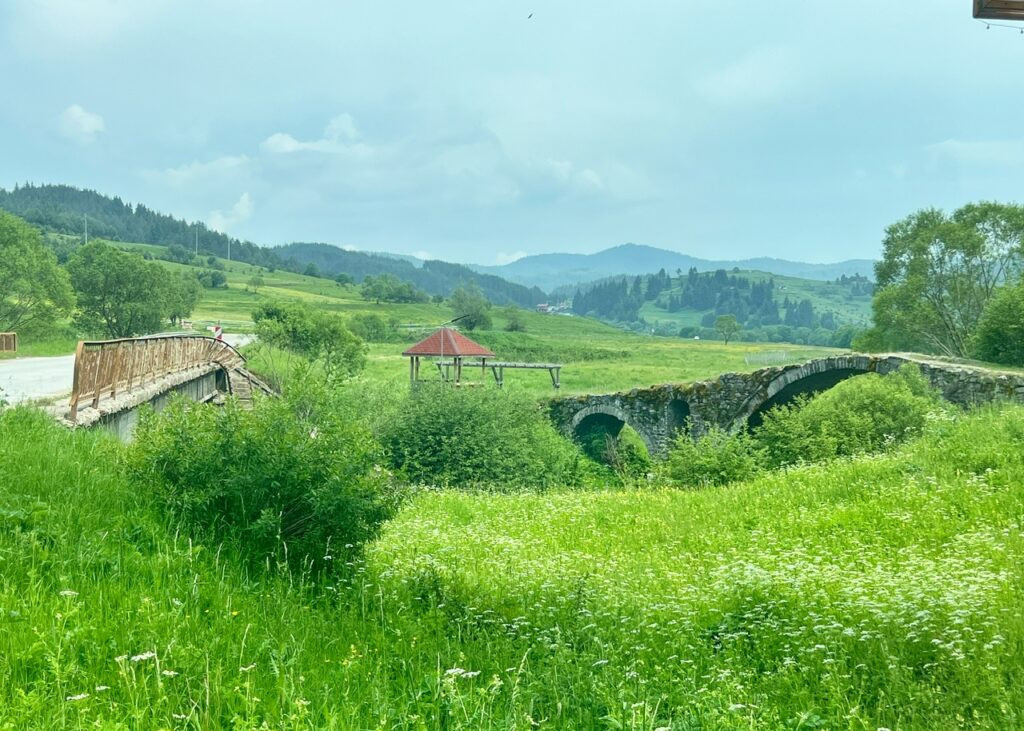
Along the drive, two bridges of notable contrast. One, the Kemera Old Bridge of Zmeitsa from more than 2000 years ago, and a modern day one whose broken railing is tumbling off like the ribbon of a busted cassette tape.
After being wooed by the hypnotic destinations of Shiroka Lake and Gela, the second day of our Rhodopes road trip continued to lead us to Devin. Devin is an ecologically pristine spa area, most known for producing Bulgaria’s top mineral water of the same name, whose springs have been bearing flavorful water since antiquity. It has about around 7,000 residents and was undoubtedly a place we could see spending more time.
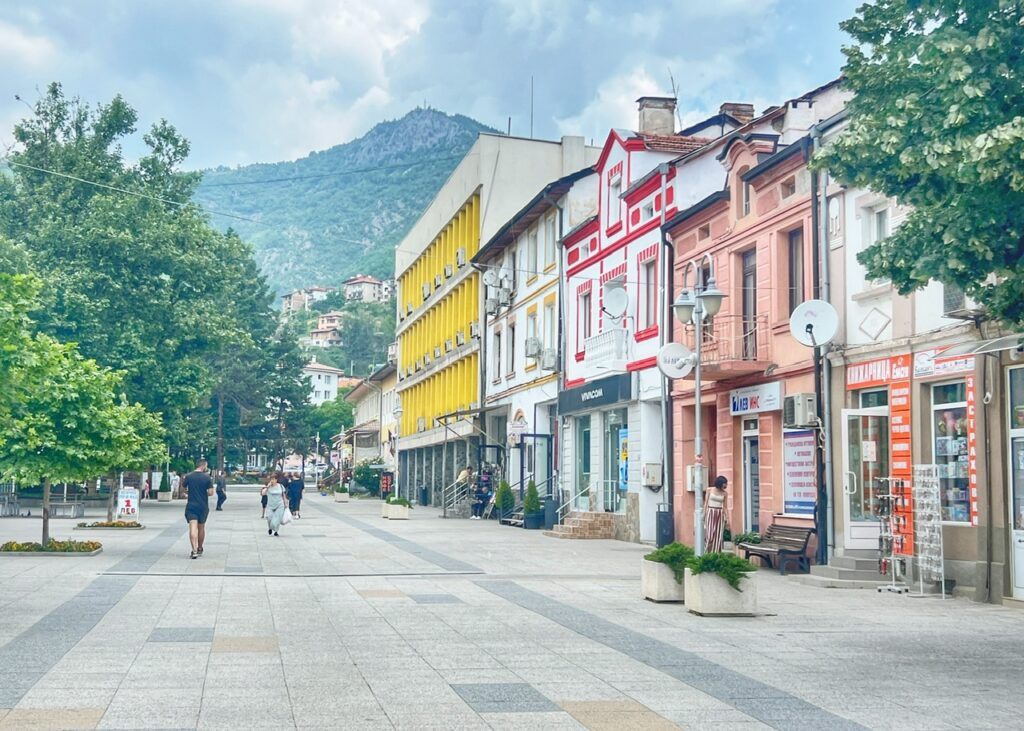
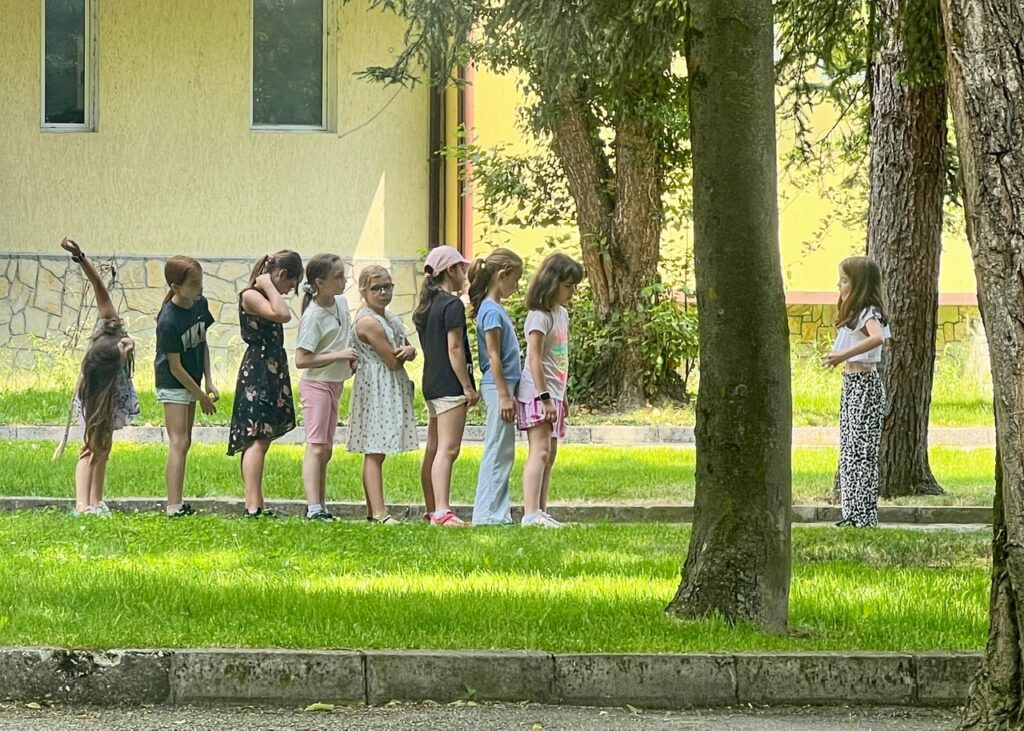
The main pedestrian thoroughfare of Devin. Also, young girls playing a follow the leader type game in the park. The further back you go in the line, the less committed to the process they seem to be.
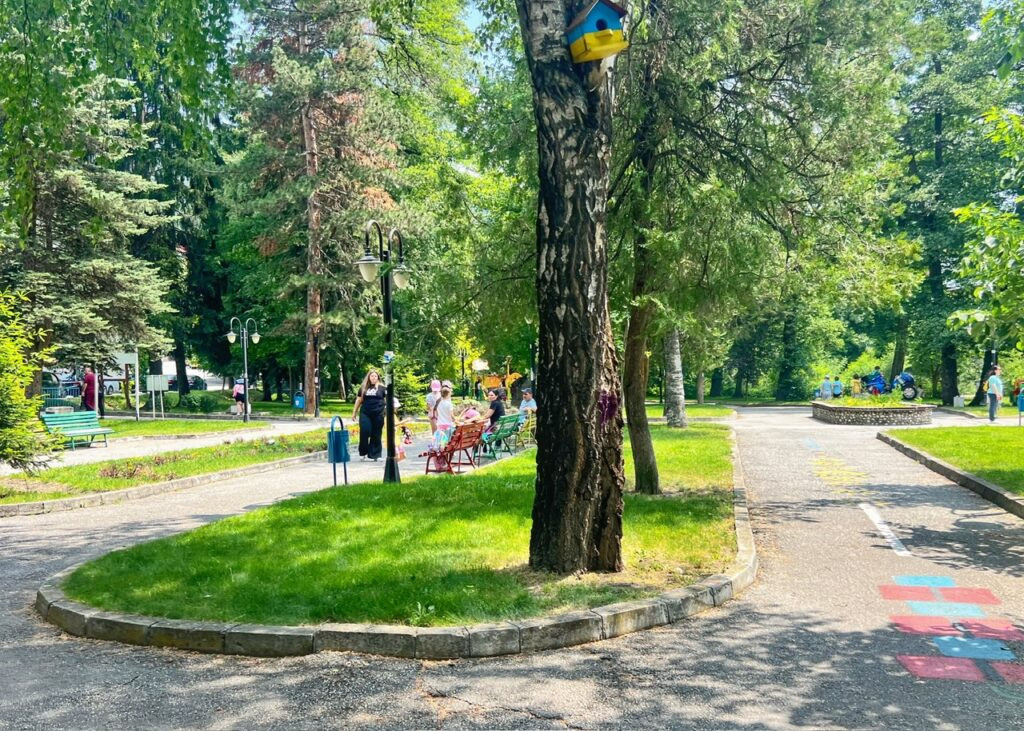
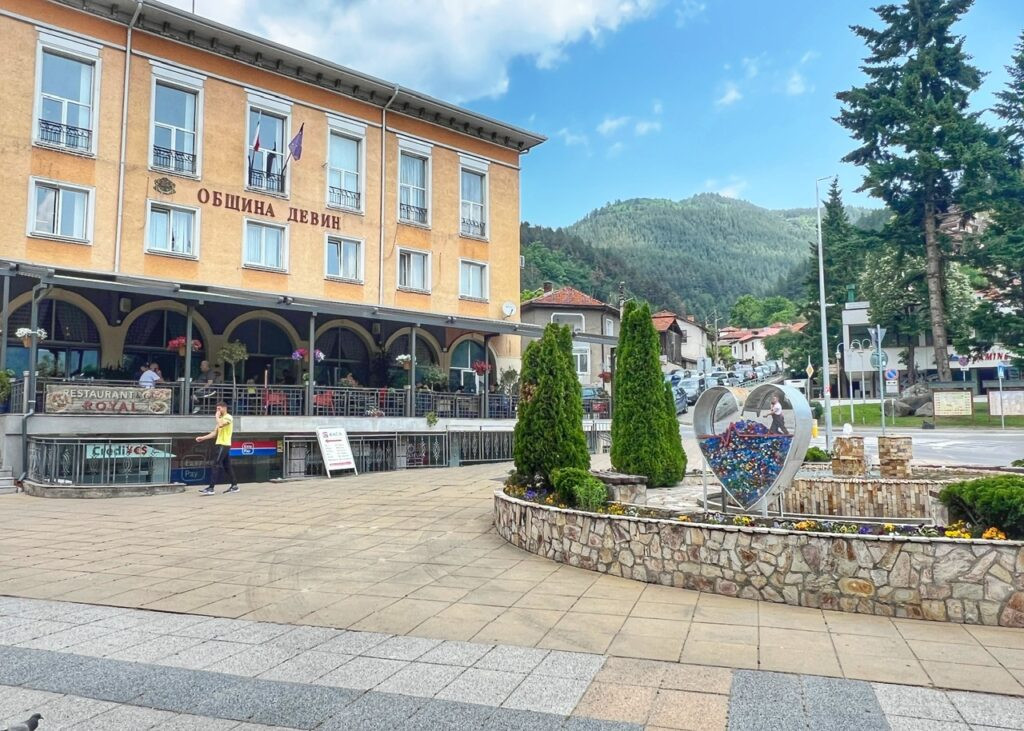
Devin, like other spa towns we’ve been in, was draped with greenery and parks. The main square…
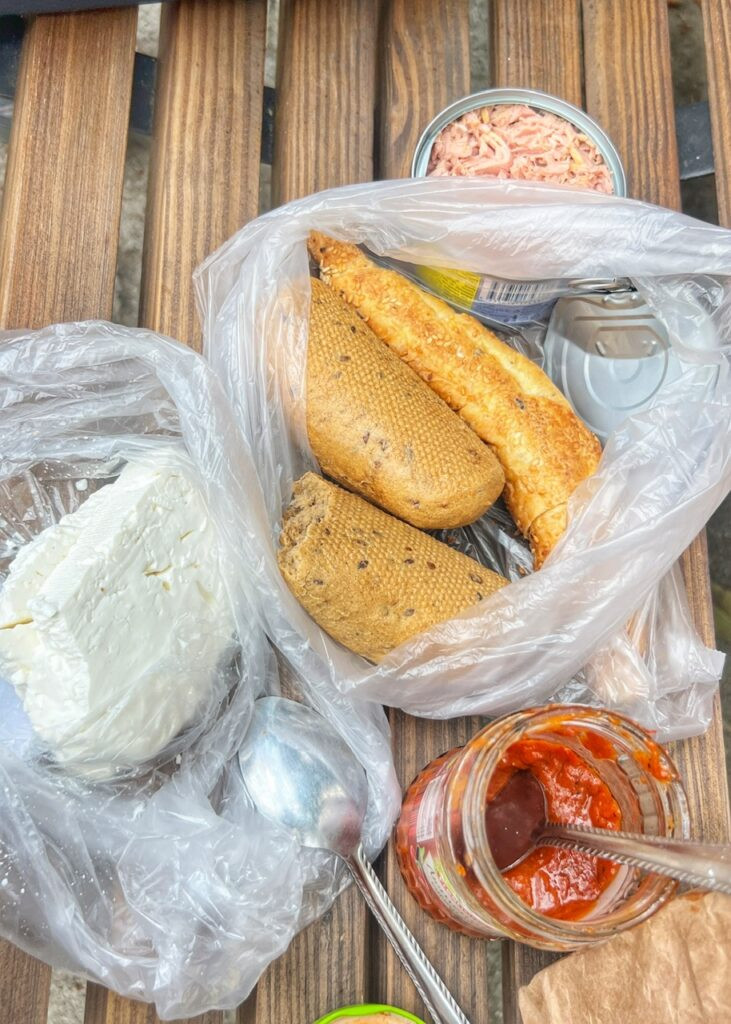
…which is where we settled down for a standard Bulgarian packed lunch….a can of tuna, eggplant/red pepper sauce, bread and Bulgarian cheese, which may look like feta but it’s 100% Bulgarian.
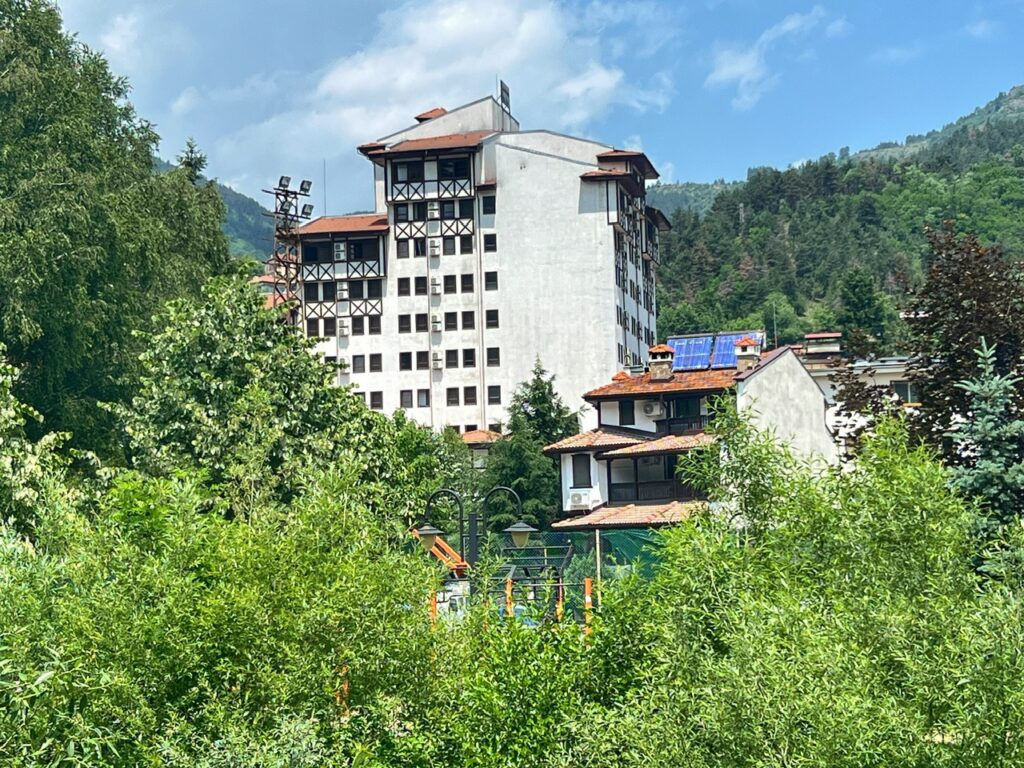
One of the many spa hotels in the town.
Devil’s Throat Cave
Once upon a time, Bulgaria alongside parts of modern day Greece and Turkey, used to be called Thrace and deep in the heart of one of its most massive caves, lives one of its most mystical Thracian legends. The legend again links back to the suave musician and poet Orpheus, who we introduced you to a couple days ago in his birthplace of Gela. It is said he had to rescue his main squeeze, Eurydice, from the underworld of Hades using this cave as his portal.
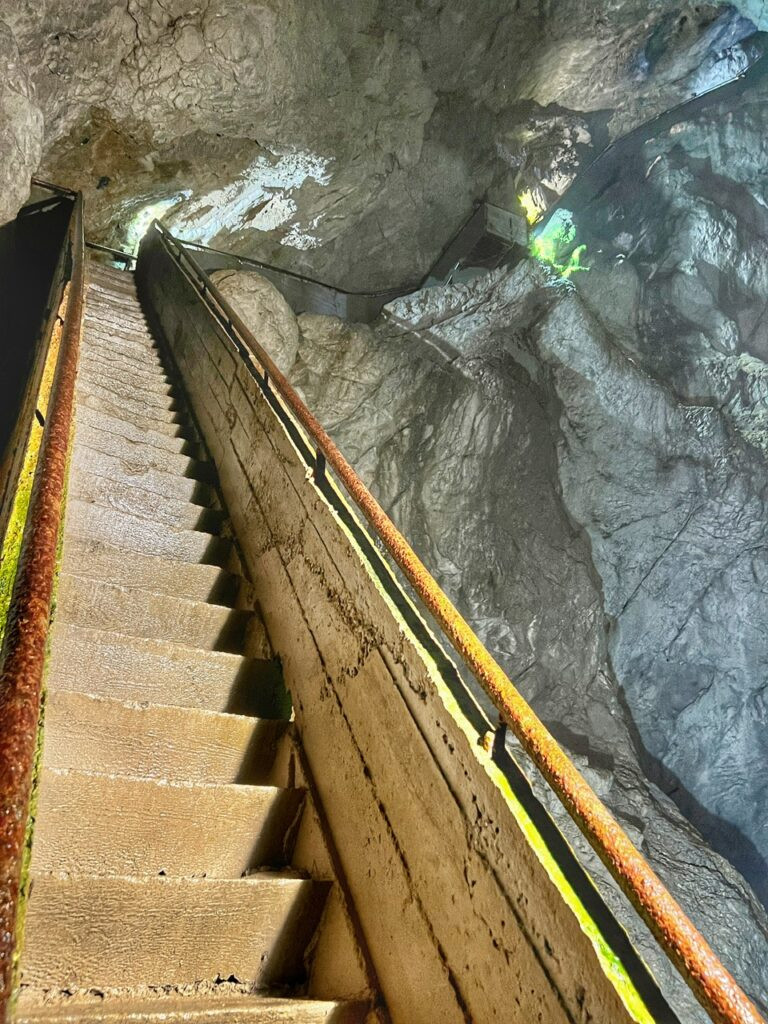
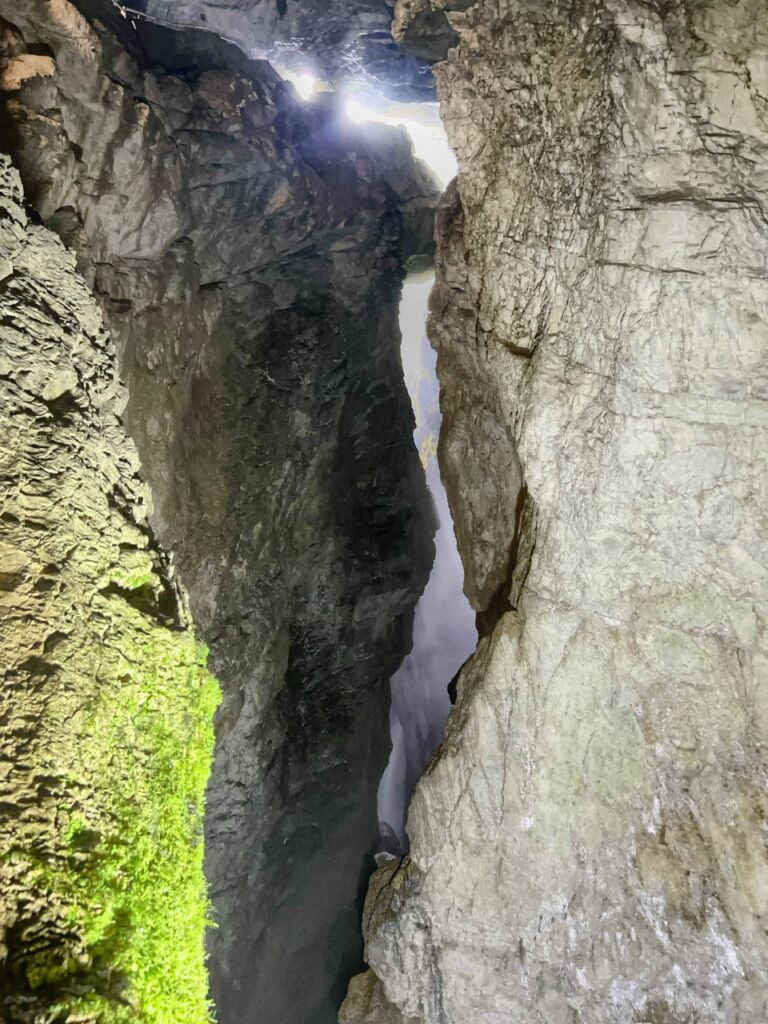
Whether or not the legend is true, Devil’s Throat Cave certainly has some indescribable and transcendental effects. And, as you plunge into the colossal cavity and see an unknown abyss engulfing the Trigrad river via a 42-meter thundering waterfall, it’s easy to imagine one little slip and it swallowing you as well.
The tumbling waterfall….the reverberating echo…the ominous shadows…the vertigo-inducing stairs…
It’s all really disorienting.
And a must on any southern Rhodopes road trip.
It is said that the grand cavern itself (pictured above) could easily fit St. Alexander Nevsky Cathedral in Sofia. That said, thanks to the size and shadows, this is not an easy place to photograph.
And it features the highest underground waterfall in the Balkans.
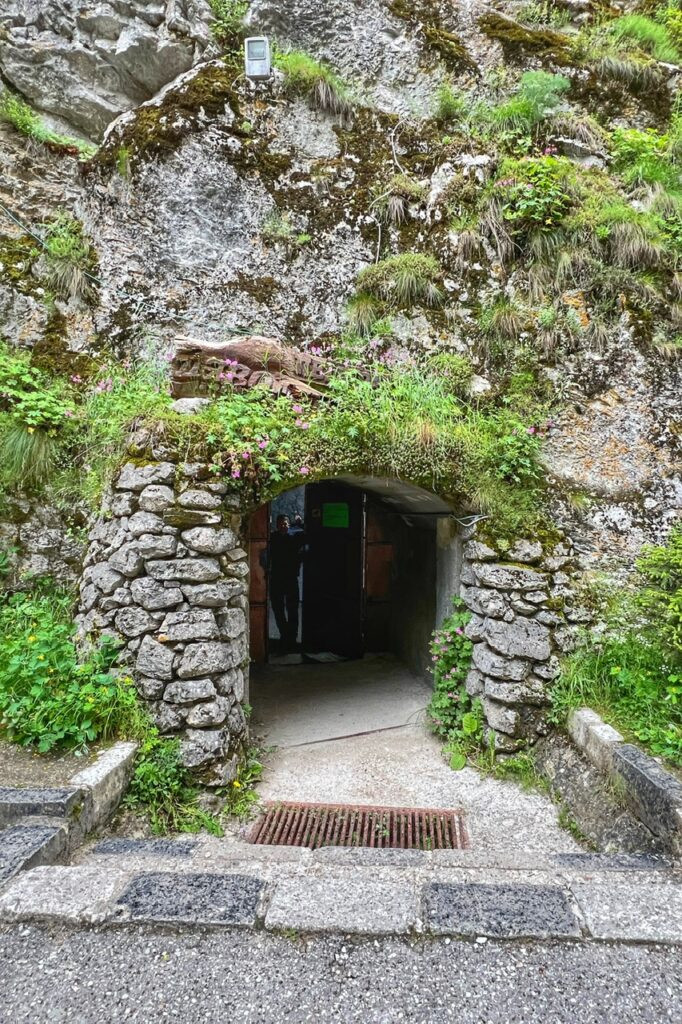
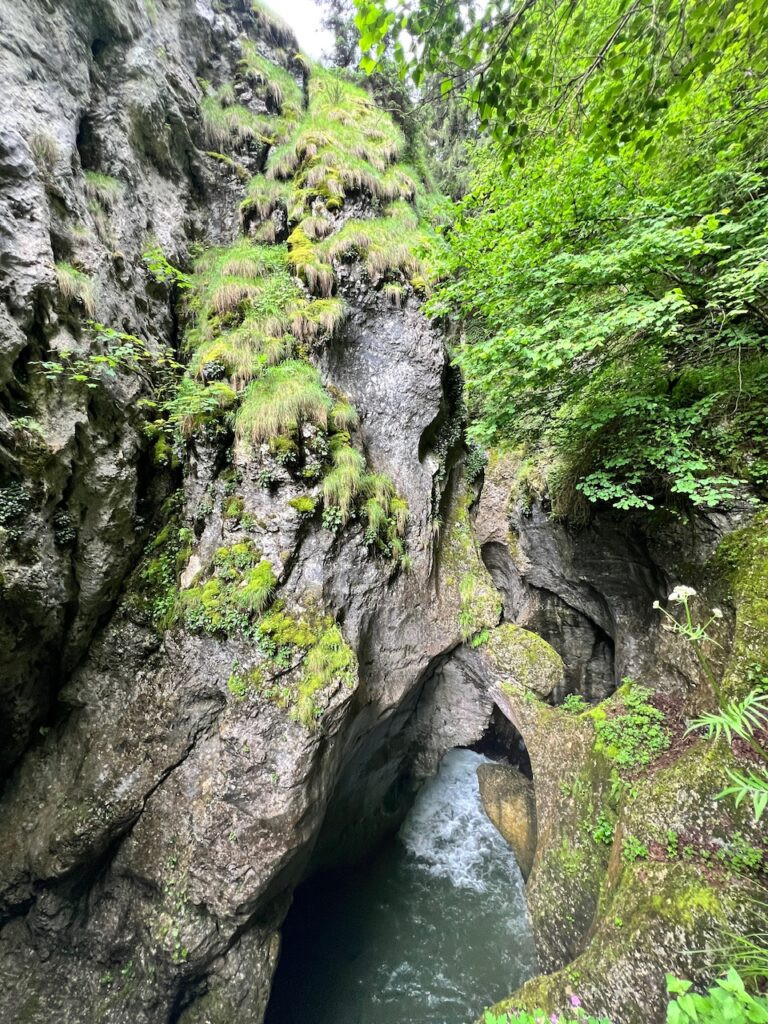
After paying your entrance fee of 13 Leva per person (about $7.50), you enter the cave on your self-guided tour via the Devil’s Throat, which is what the cave is said to be named after. Hmmm….we didn’t really see it?!
Later we learned this was because the name came from the FORMER entrance, now the exit, where the waterfall is swallowed inside.

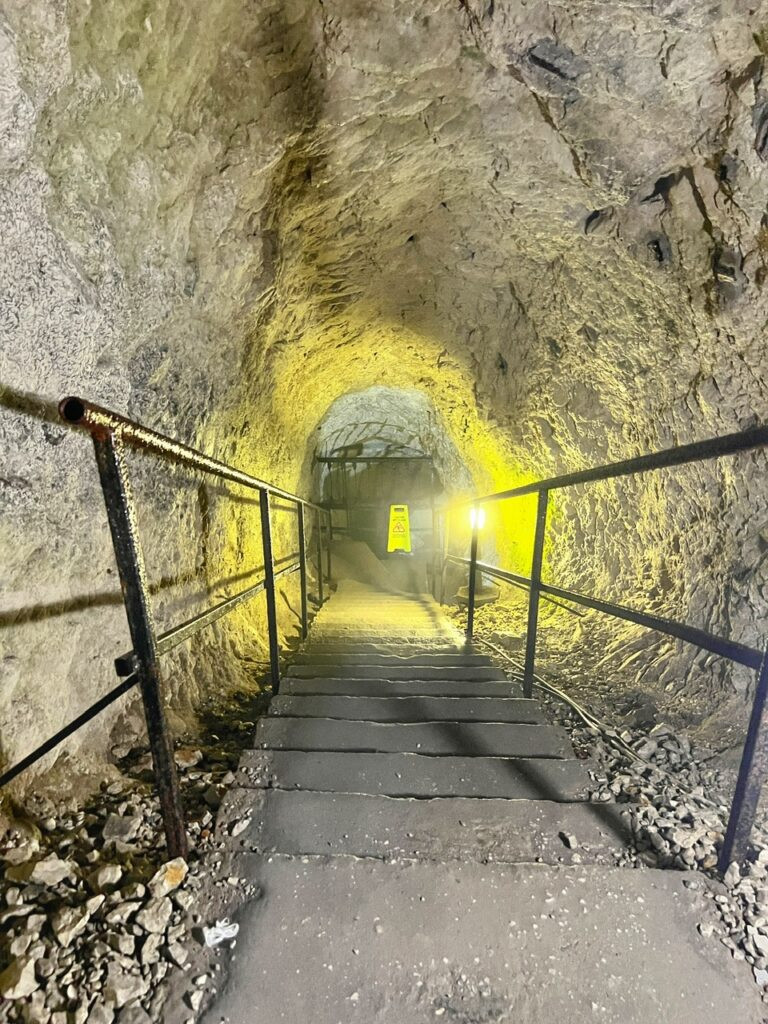
This must make this entrance tunnel the large intestine and the new entrance the….um…you get the idea. Fortunately we didn’t find anything icky lodged inside…probably because we tourists are the daily colonoscopy.
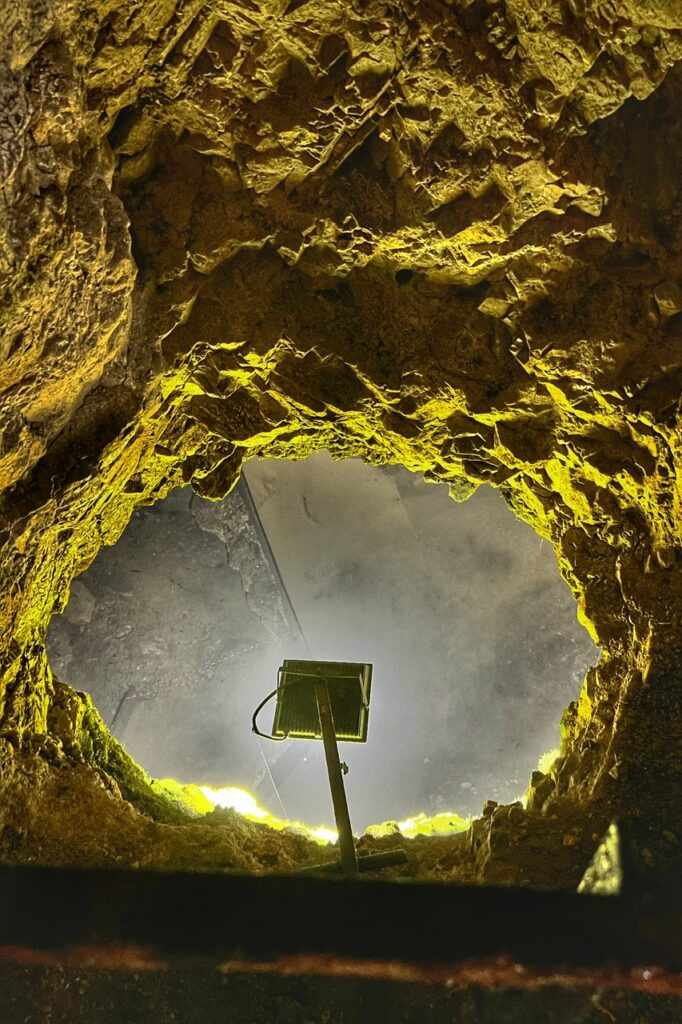
Although not sure what is down THIS hole…?
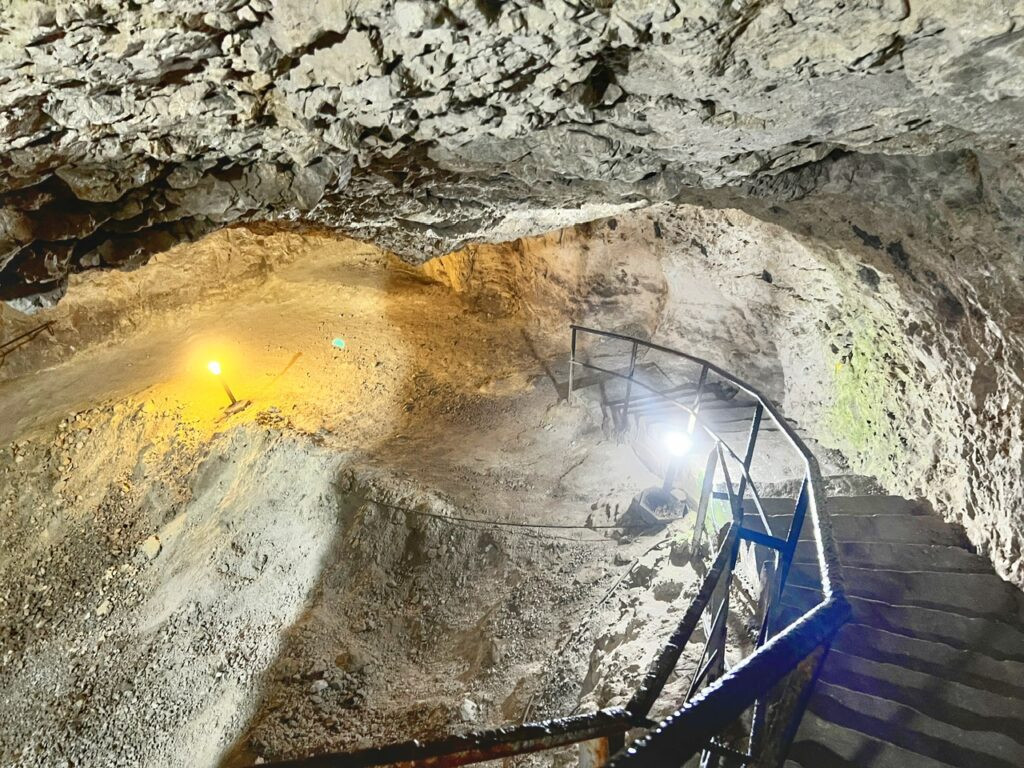
Moving upstream into the roaring grand hall…
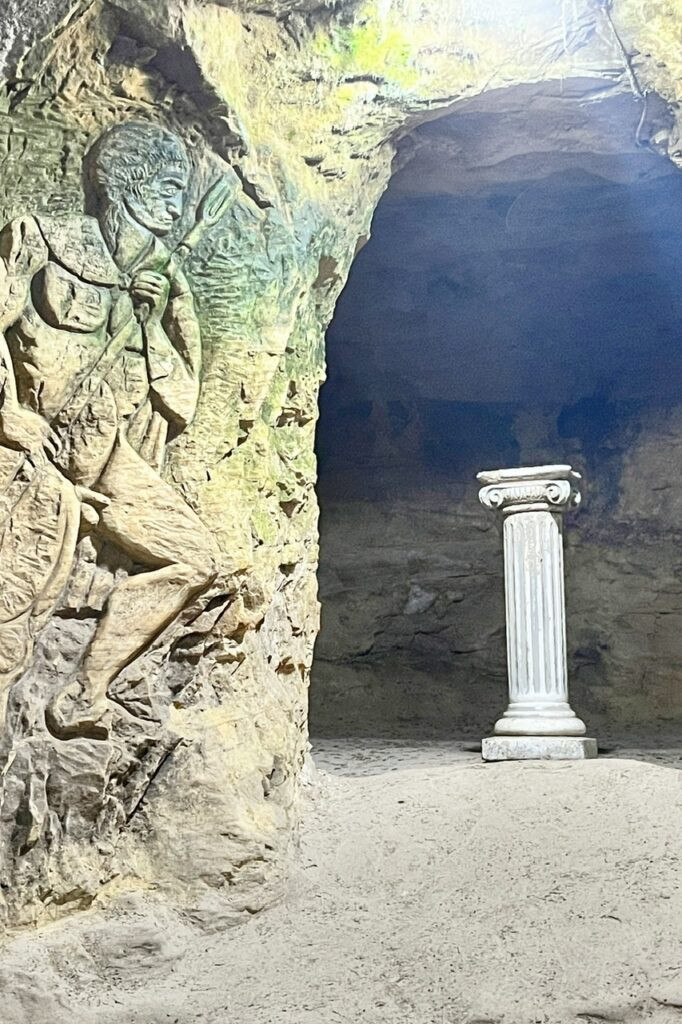
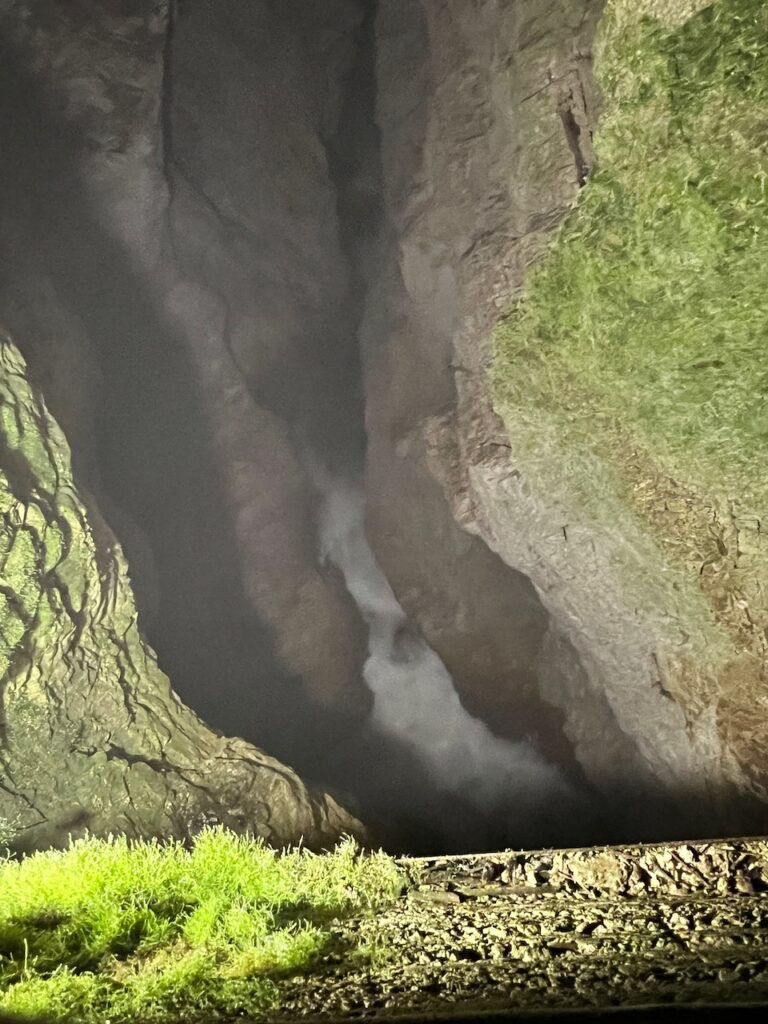
….and passing a daunting devil’s face, which is a modern carving, placed by early explorers to emphasize the cave’s sinister name and atmosphere. It also has a Greek column, clearly bought from a 21st Century party store.
And then you get your first glimpse at the underground river. It is a harrowing reality that nothing carried into The Devil’s Throat Cave by the river emerges from it. Many experiments have been tested, and in 1970 young divers tragically lost their lives trying to find out, but everything vanishes without a trace.
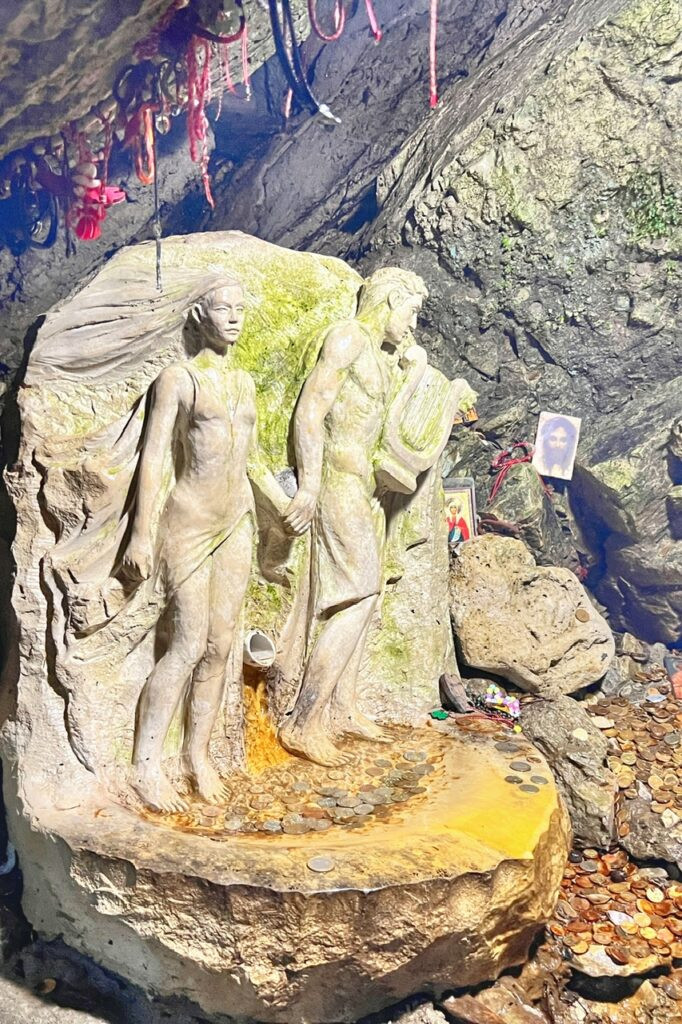
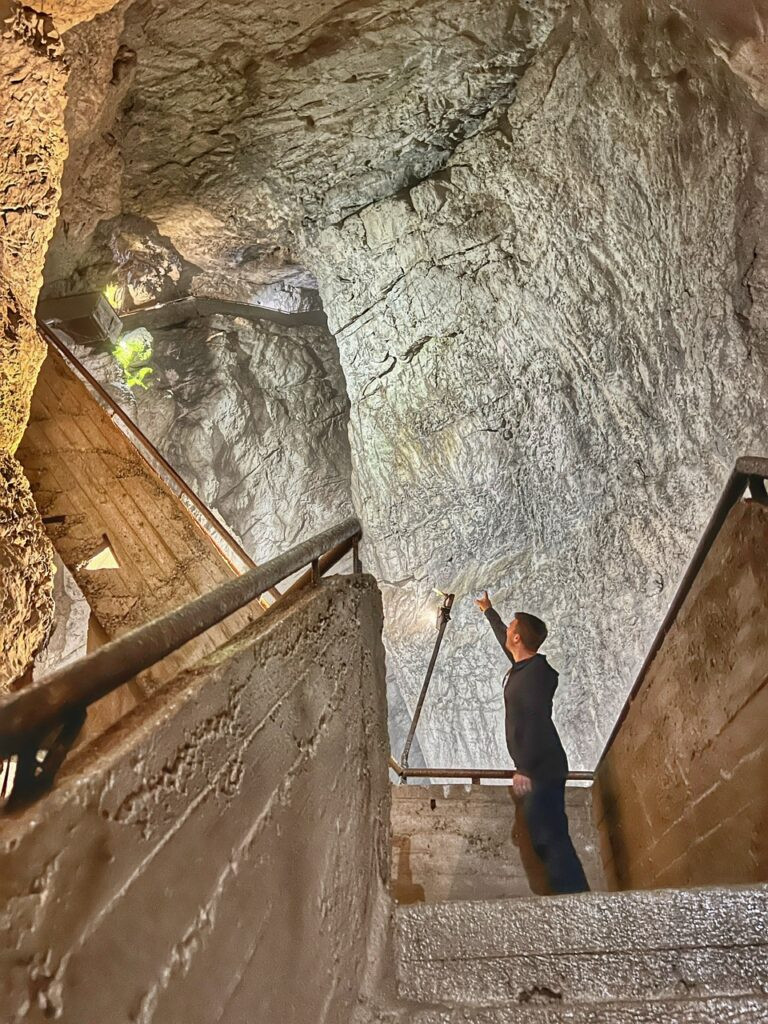
Further into the hall, you encounter Orphan and Eurydice. According to the story, Orpheus, whose music was apparently sweet enough to tame anything he so pleased, was very much in love with Eurydice.
But on their wedding day, a poisonous snake bit his bride and she died. Orpheus was desperate to have her back, so he went to the Underworld to ask Hades and Persephone to let her live. At first, they refused, but Orpheus played his lyre, and persuaded them. They agreed that he could lead Eurydice out of the Underworld, but if he looked back at her once before he was all the way back to the world of the living, she would return to the Underworld, and Orpheus would not get another chance to free her. Orpheus agreed, but when he was almost out, he couldn’t resist checking out his hot wife, and looked back just in time to see her disappear back into Hades. Seriously dude…can’t you keep it in your pants 5 more minutes?!
My Orpheus. He disappointedly can’t play a lyre.

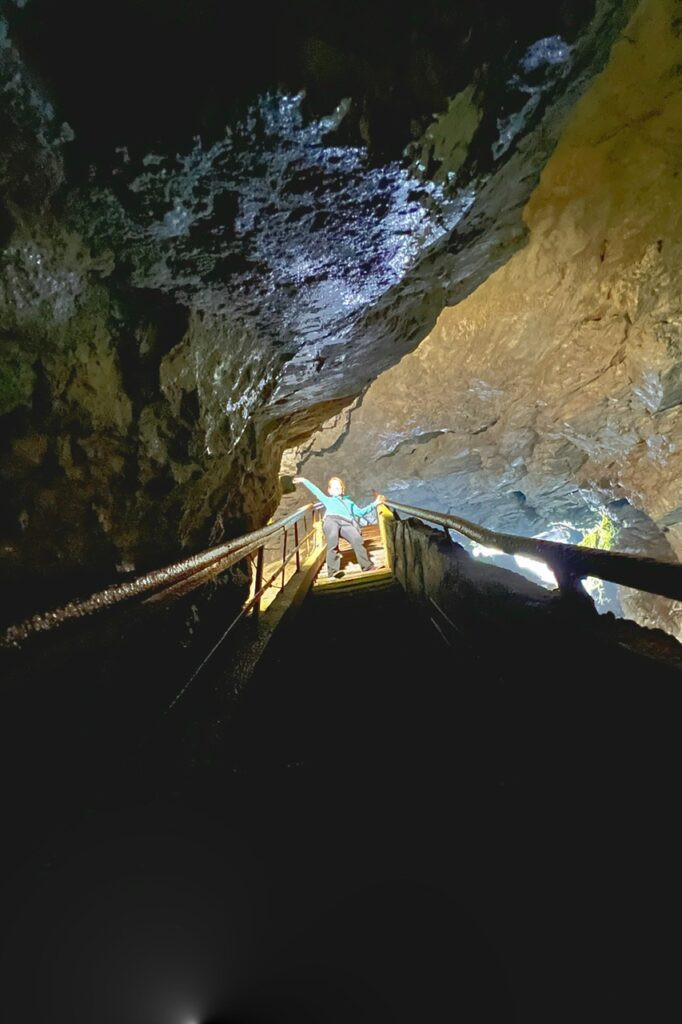
Heading up these 300 precipitous steps is quite disorienting. Can’t imagine the guy that built them.
It’s even more disorienting when you turn around…(which any legend clearly would advise you not to). Fortunately, my Orepheus didn’t disappear into Hades, but I was met with an overwhelming hit of nausea as I turned around and continued moving up the ladder. Seriously, blogger…..was that really worth it for a photo?!
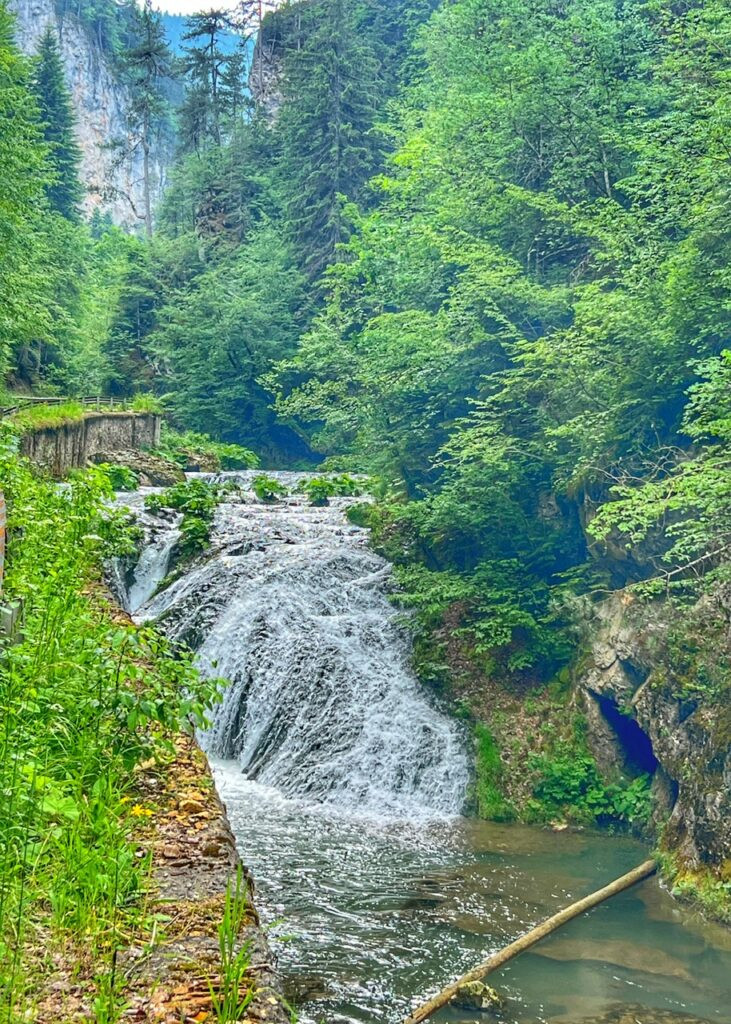
Departing Devil’s Throat…some of the other remarkable scenery nearby…
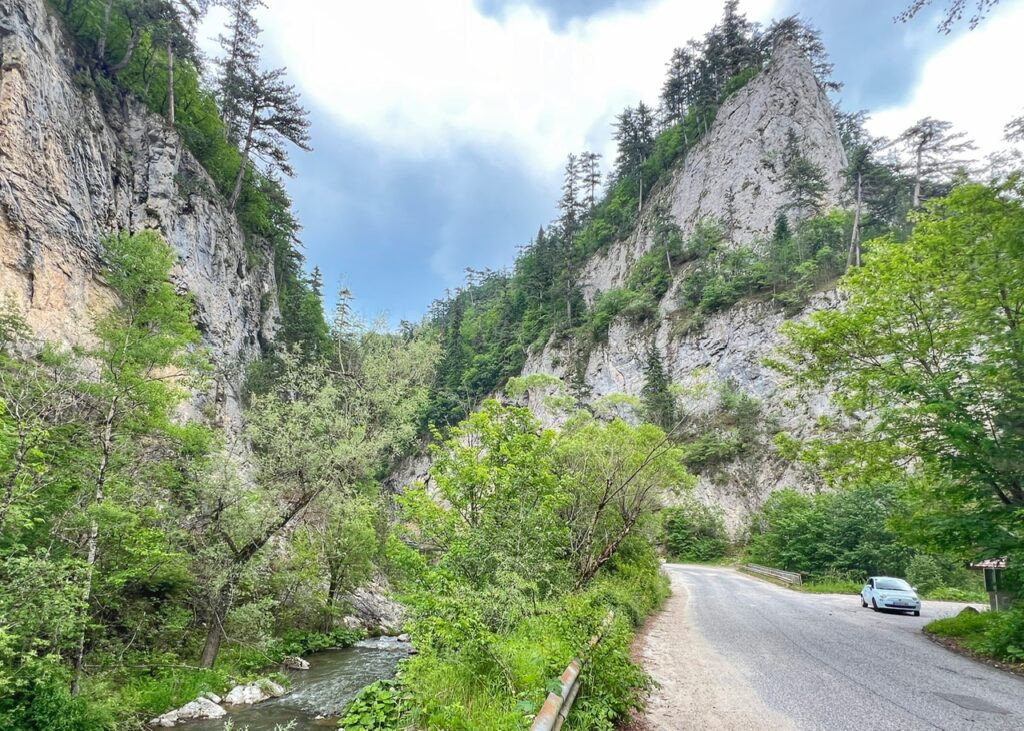
Wow…this is a really special part of Bulgaria. Maybe a new favorite?!


